August 10, 2015
| Valerie Hayes
| Designer History, View All Articles & Photos, Vintage Jewelry
Pate de Verre is an art glass technique where a mix of molten glass and enamel is poured into a gold dipped frame. The method was first introduced in Paris by Maison Gripoix in 1869. The process is delicate and time consuming, however, the results are quite stunning. The jeweler has many options – such as adding a subtle opalescent shimmer, in a dynamic range of colors. Each component of poured glass encased in a gold frame, is treated as a gemstone – and polished to smooth perfection.
The Chanel Pate de Verre earrings in this post are an impressive example of poured glass artistry. They have individual flower petals, in perfect symmetry – encased in the miniature gold frames. As an extra touch – each earring has a tiny gold Chanel logo on one of the flower petals. The additional ingenuity of the design, is in how they dangle. They consist of smallish gold hoops with a rounded stopper at one end. The three dimensional Pate de Verre flowers slide onto, and dangle from the hoops.
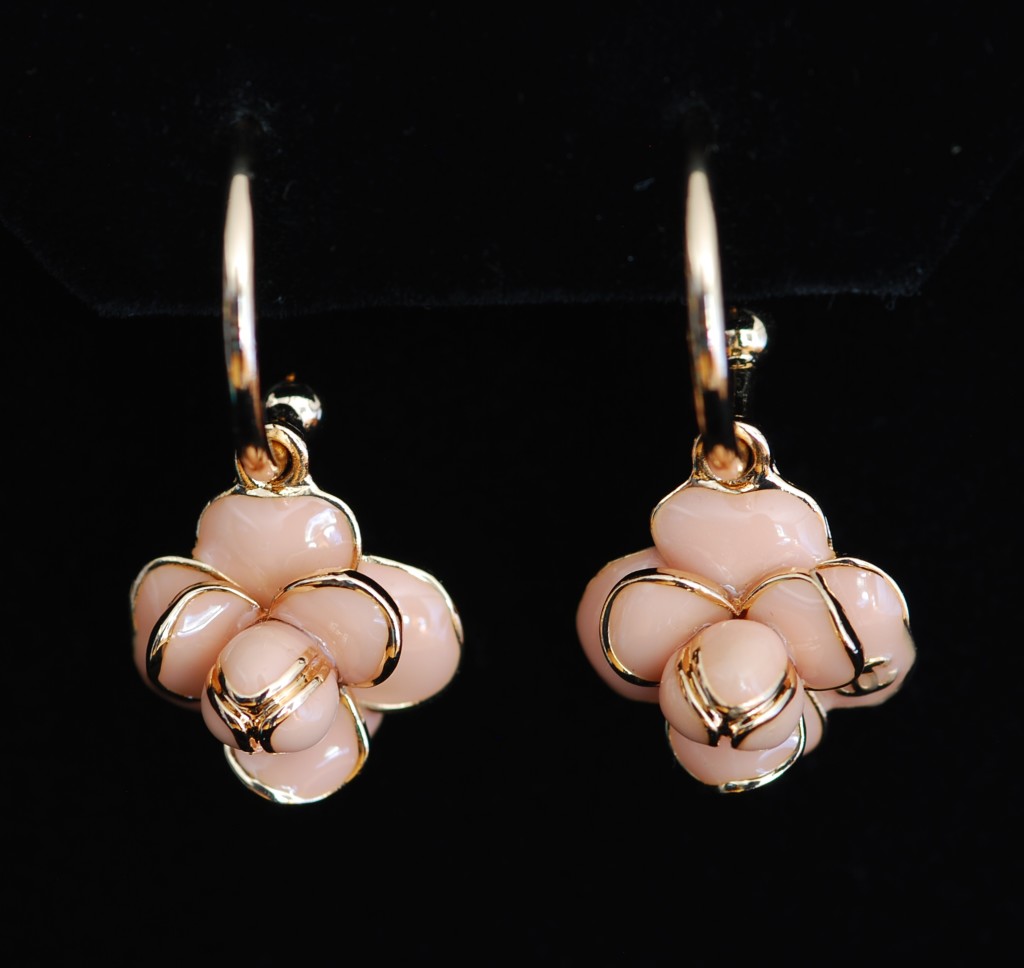
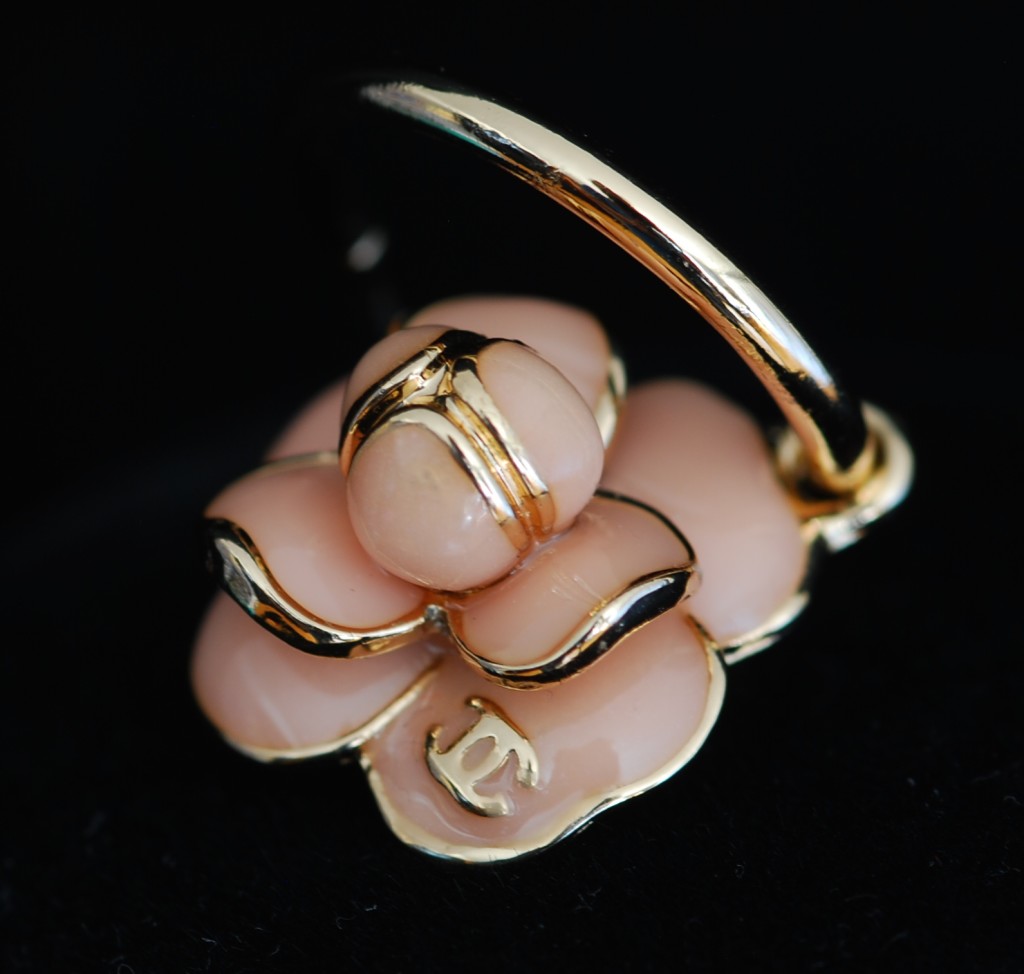
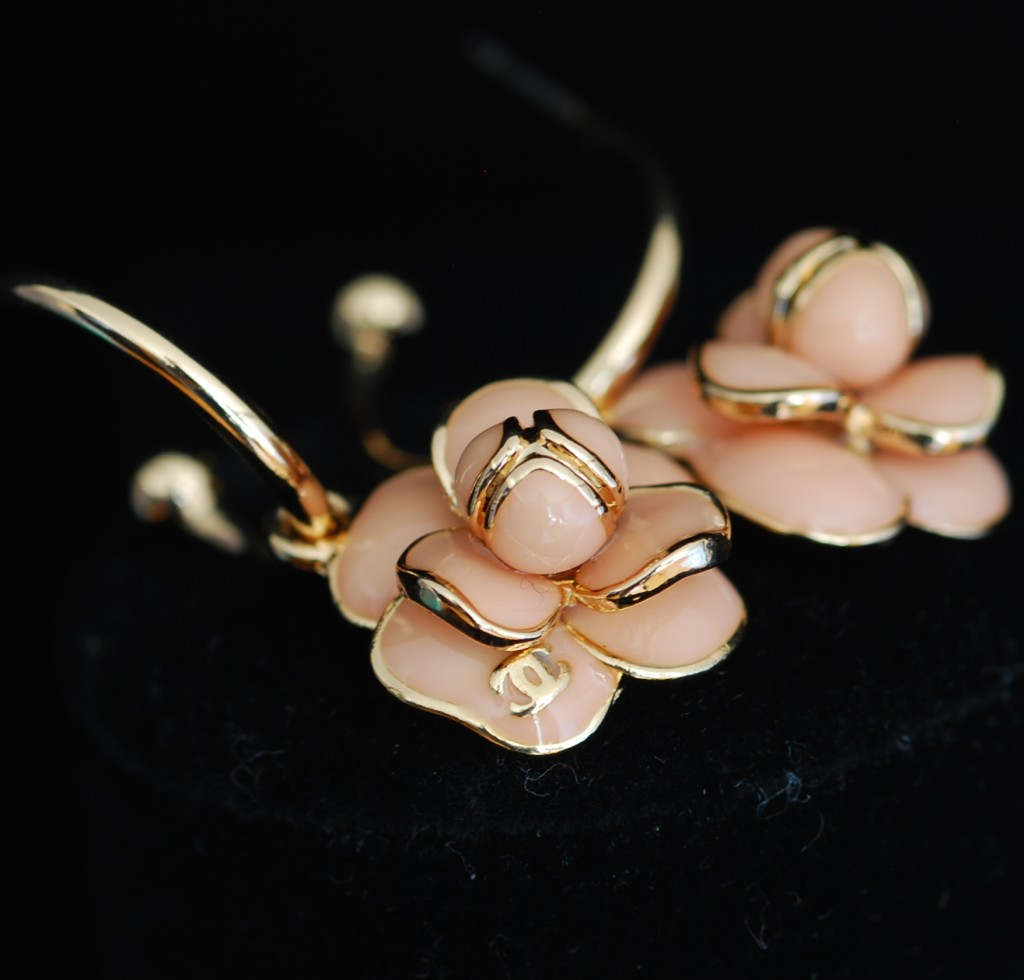
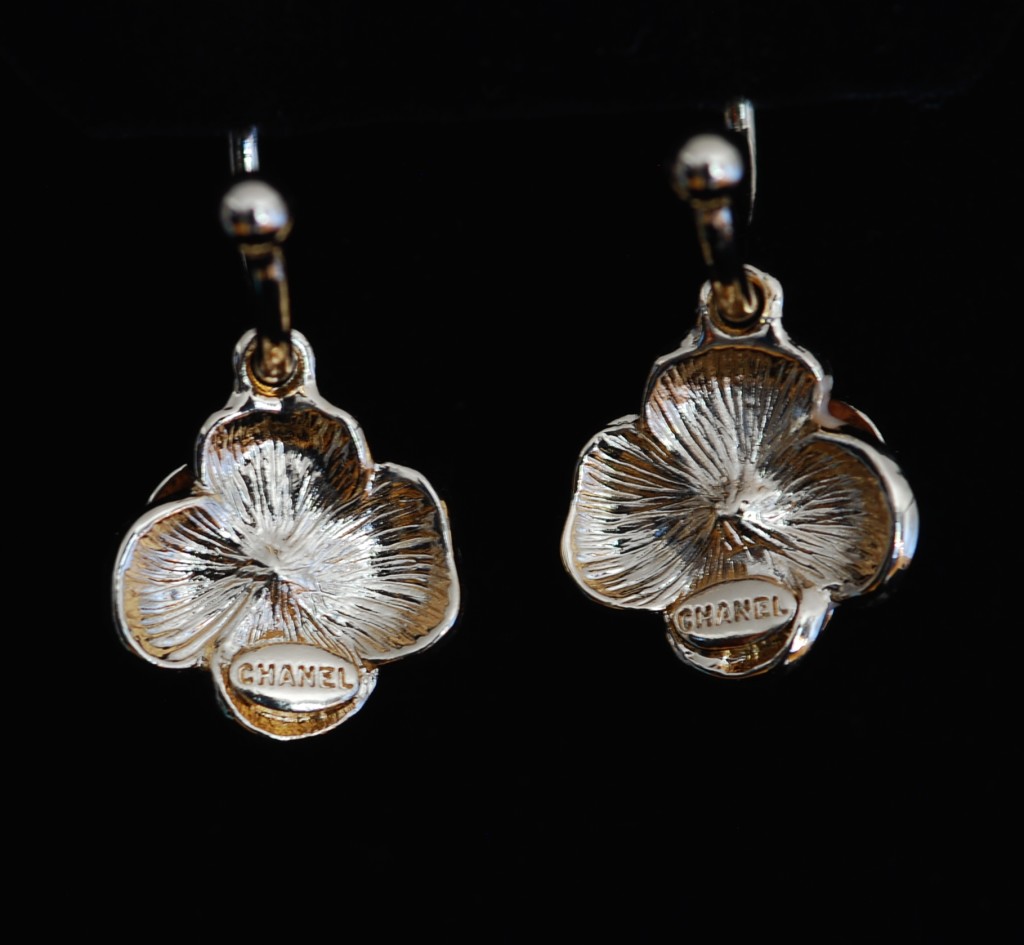
Copyright Valerie J. Hayes and Quiet West Vintage (2015). Unauthorised use and/or duplication of this material without express and written permission from this blog’s author/owner is strictly prohibited. Excerpts and links may be used, provided that full and clear credit is given to Valerie J. Hayes and Quiet West Vintage with appropriate and specific direction to the original content.
July 28, 2015
| Valerie Hayes
| View All Articles & Photos, Vintage Outfits
This 1970’s summer two piece outfit has coloured stripes of opaque red, blue and yellow – alternating with enough sheer stripes to let them – read between the lines…
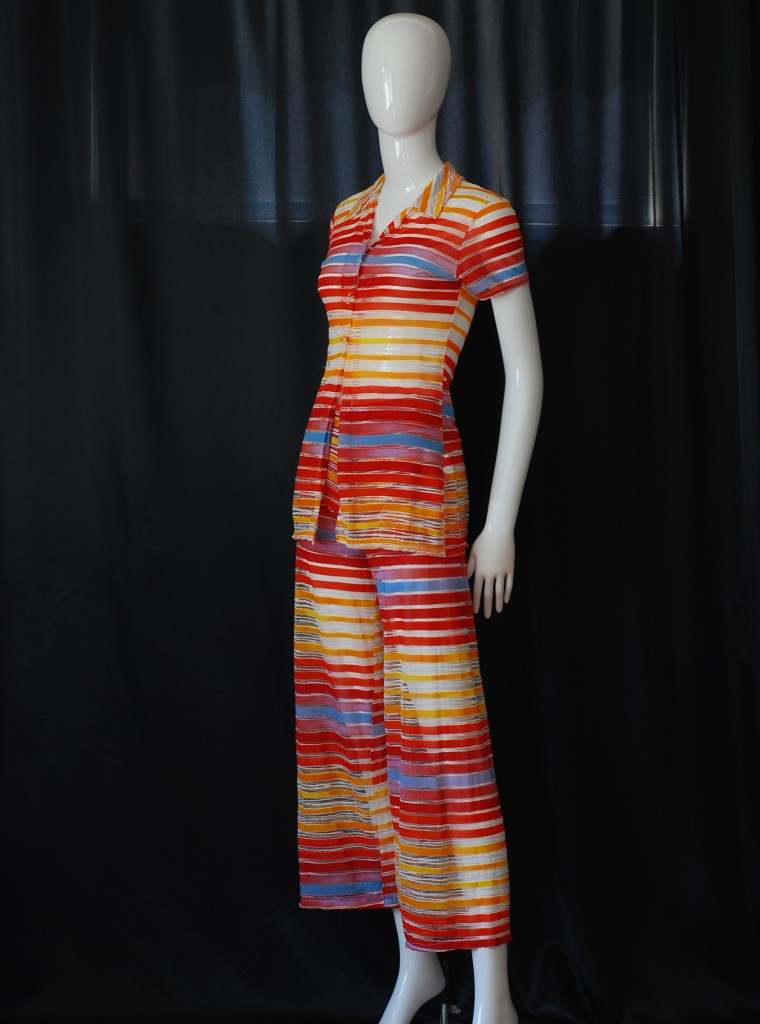
1970’s Summer Lounger Made in Italy
Copyright Valerie J. Hayes and Quiet West Vintage (2015). Unauthorised use and/or duplication of this material without express and written permission from this blog’s author/owner is strictly prohibited. Excerpts and links may be used, provided that full and clear credit is given to Valerie J. Hayes and Quiet West Vintage with appropriate and specific direction to the original content.
July 6, 2015
| Valerie Hayes
| Textile Art, View All Articles & Photos, Vintage Outfits
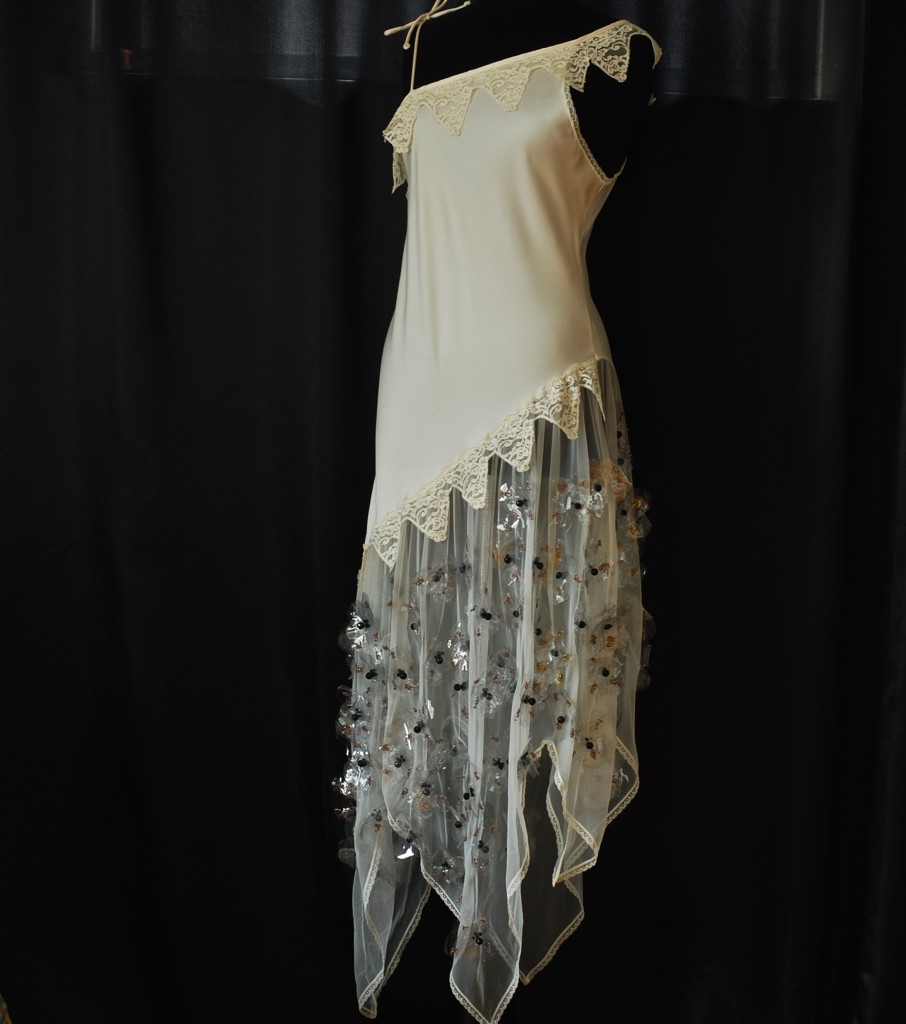
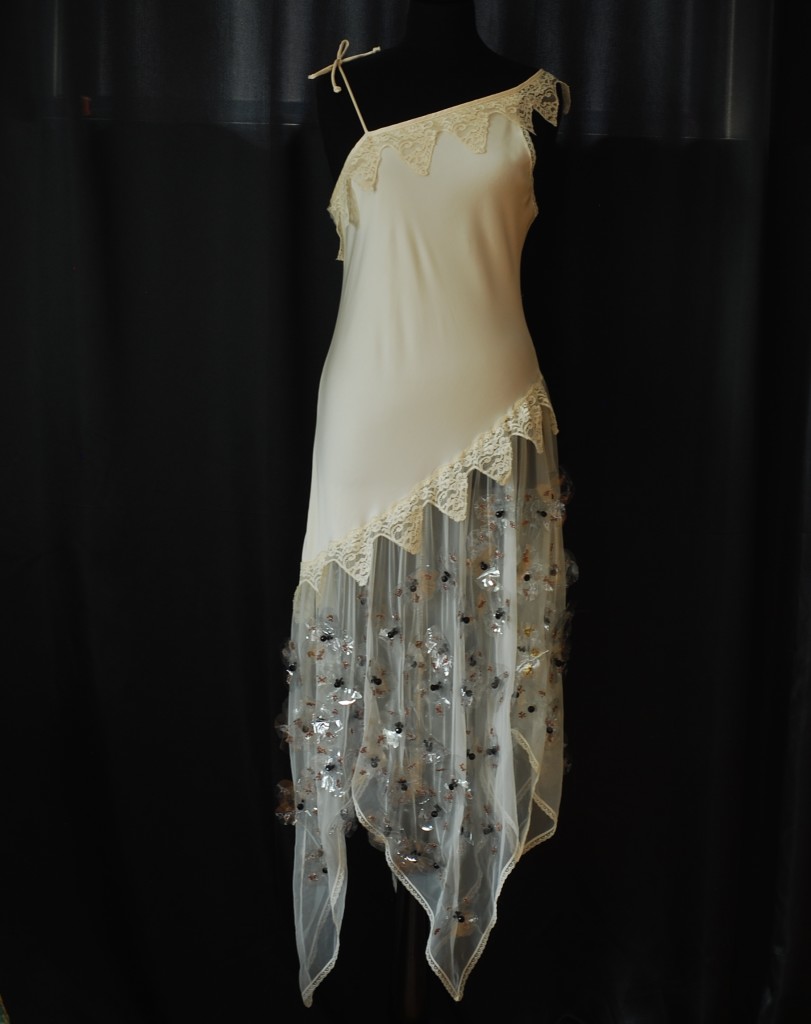
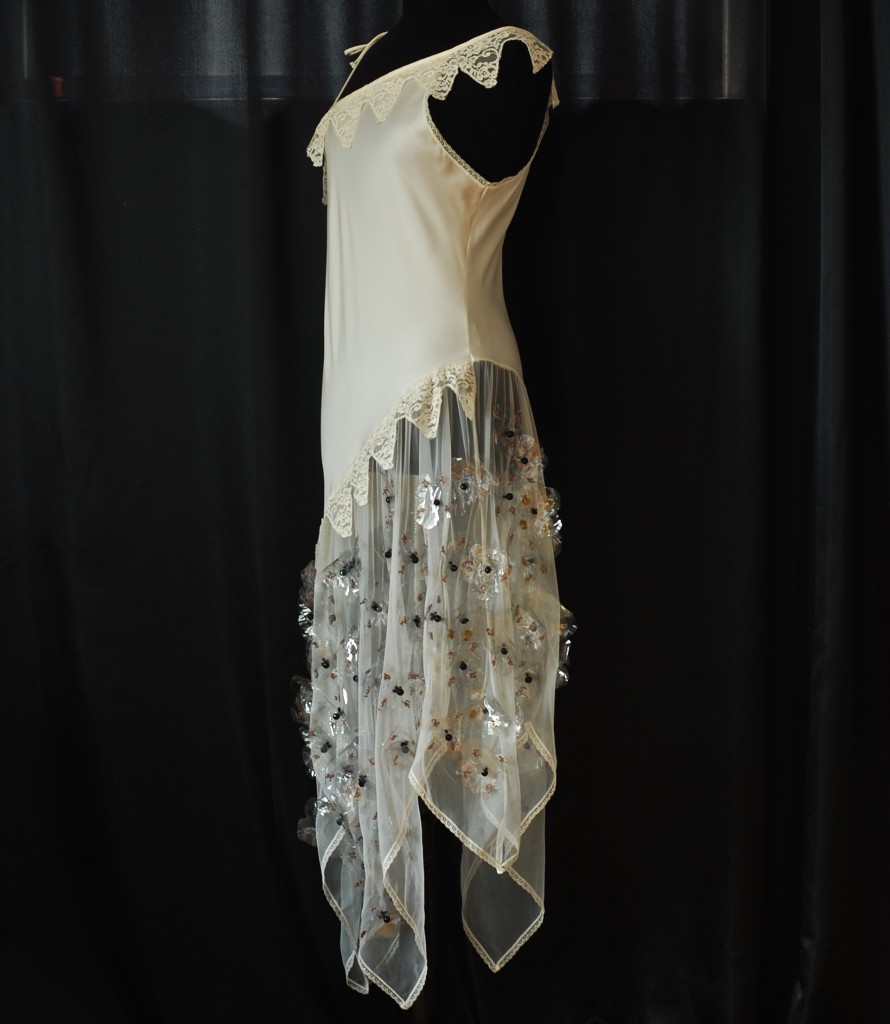
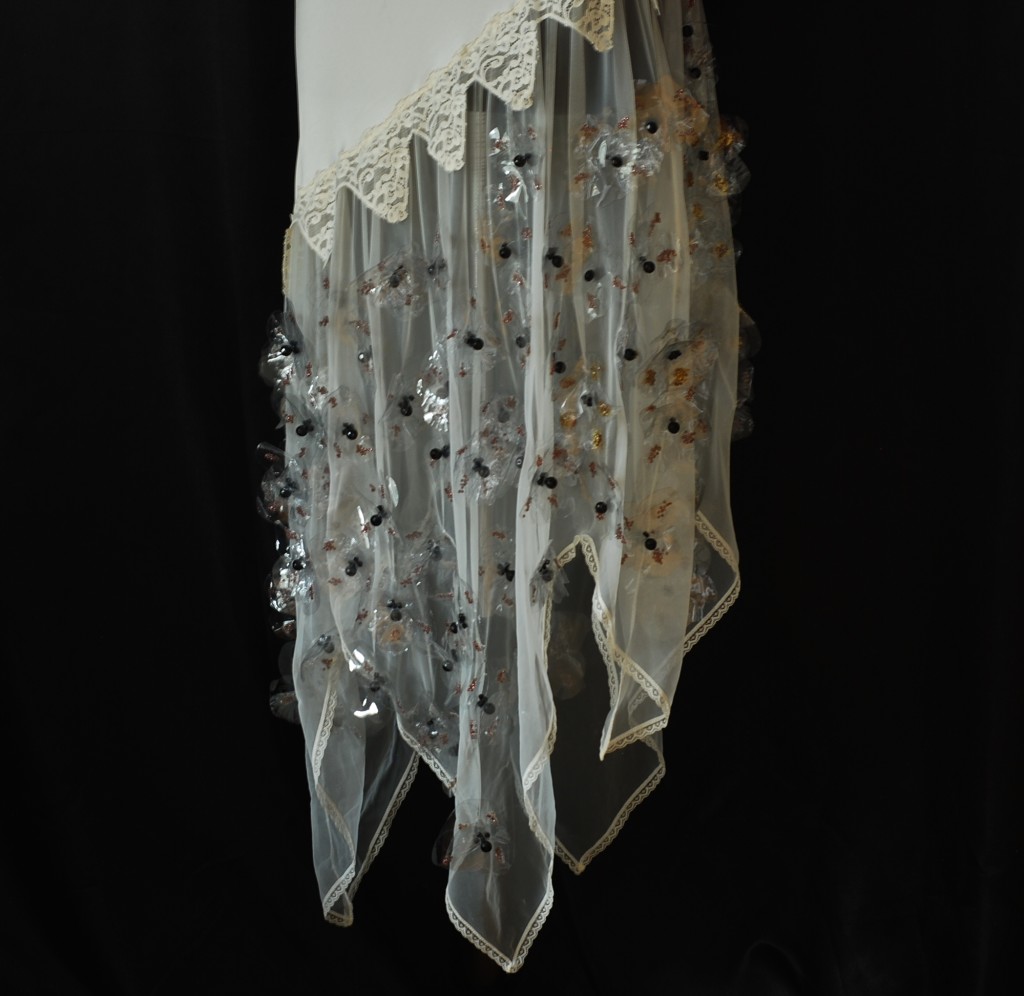 Copyright Valerie J. Hayes and Quiet West Vintage (2015). Unauthorised use and/or duplication of this material without express and written permission from this blog’s author/owner is strictly prohibited. Excerpts and links may be used, provided that full and clear credit is given to Valerie J. Hayes and Quiet West Vintage with appropriate and specific direction to the original content.
Copyright Valerie J. Hayes and Quiet West Vintage (2015). Unauthorised use and/or duplication of this material without express and written permission from this blog’s author/owner is strictly prohibited. Excerpts and links may be used, provided that full and clear credit is given to Valerie J. Hayes and Quiet West Vintage with appropriate and specific direction to the original content.
April 1, 2015
| Valerie Hayes
| View All Articles & Photos, Vintage Hats
For those not familiar with the term, bokeh is taken from the Japanese language and means “to blur”. When taking photographs, there are various different methods, lenses, lighting and techniques to achieve the blur of the background, while getting clarity in the foreground image. These photographs were taken in direct sunlight on an upper deck using a 50mm Nikon lens set at the widest aperture. Other than cropping, there has not been any photo editing done to them. The feature image is a 1950’s straw platter hat. The embellishment on the hat is made of human hair. The last image of the post was taken in the fading light of the afternoon sun. They show variations of ocean background that is blurred, yet retains the outlines of islands, foliage, water and clouds. It creates a naturally beautiful backdrop for some pictures of vintage hats – from another metaphorical vantage point!… She looks out with a face so pale – waiting for her ship to sail…
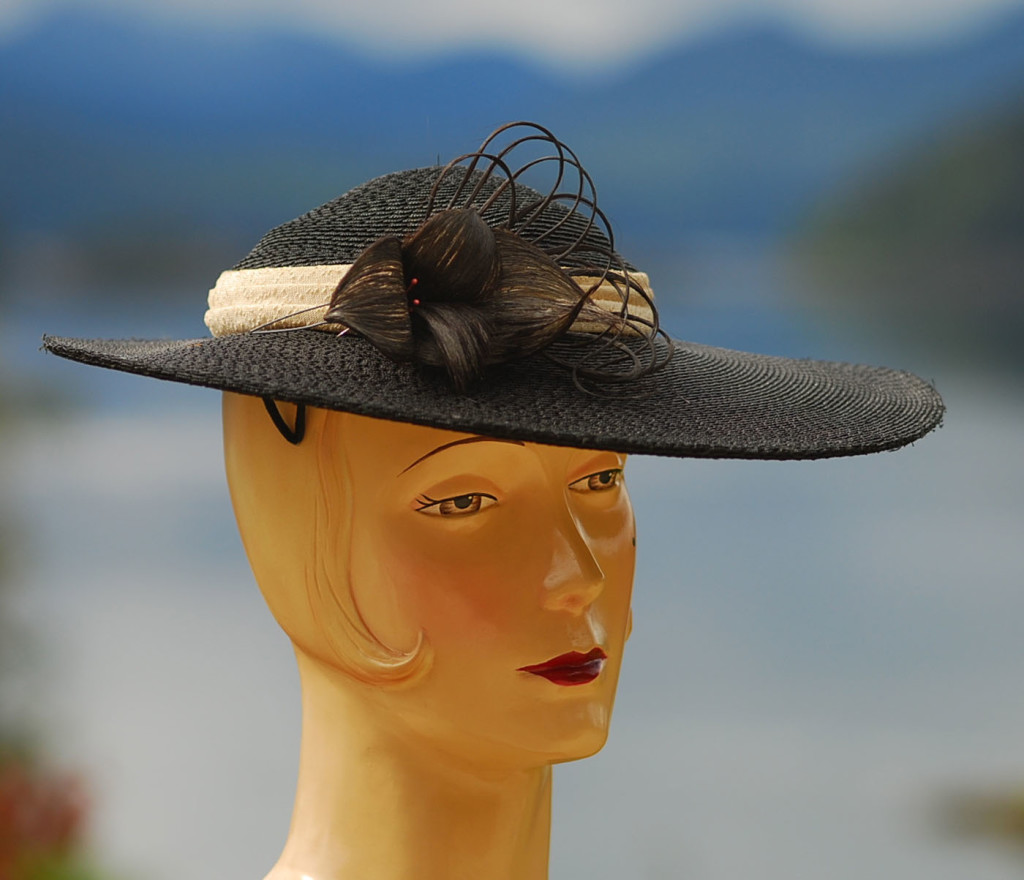
Vintage Hat With Bokeh Ocean View
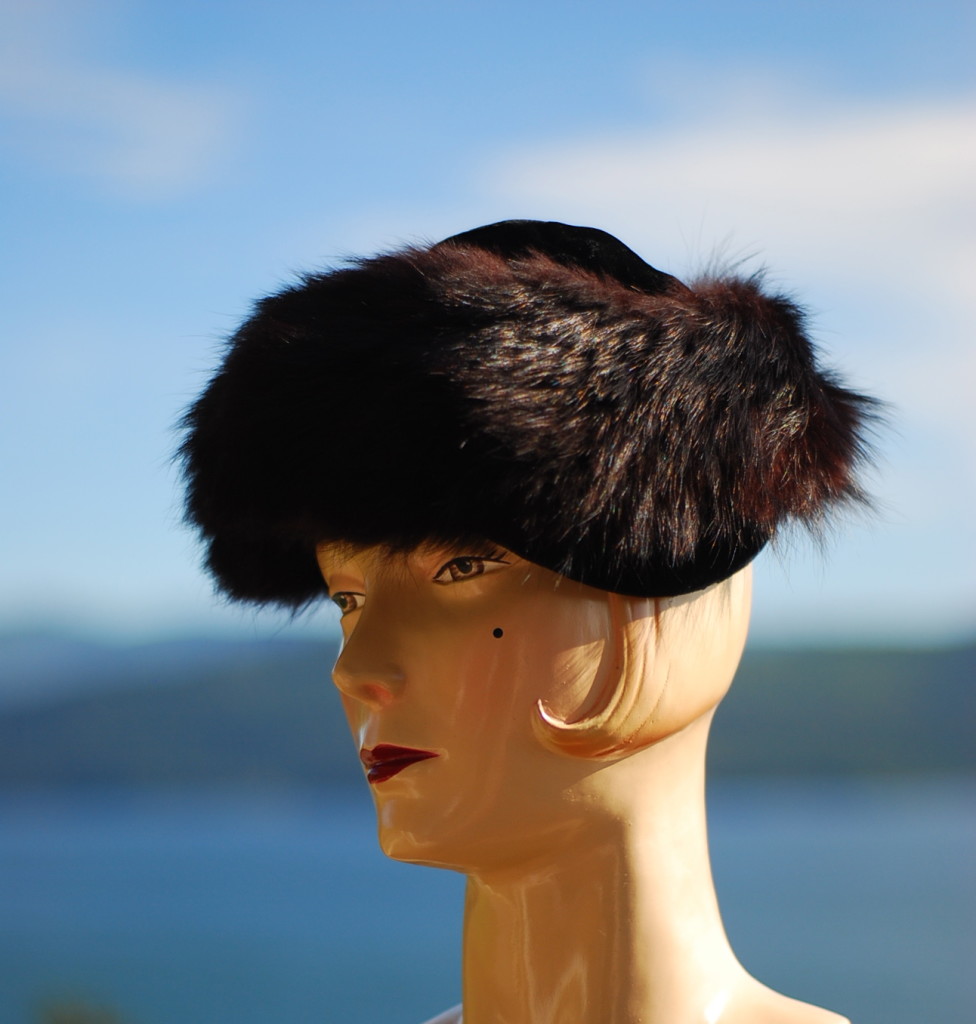
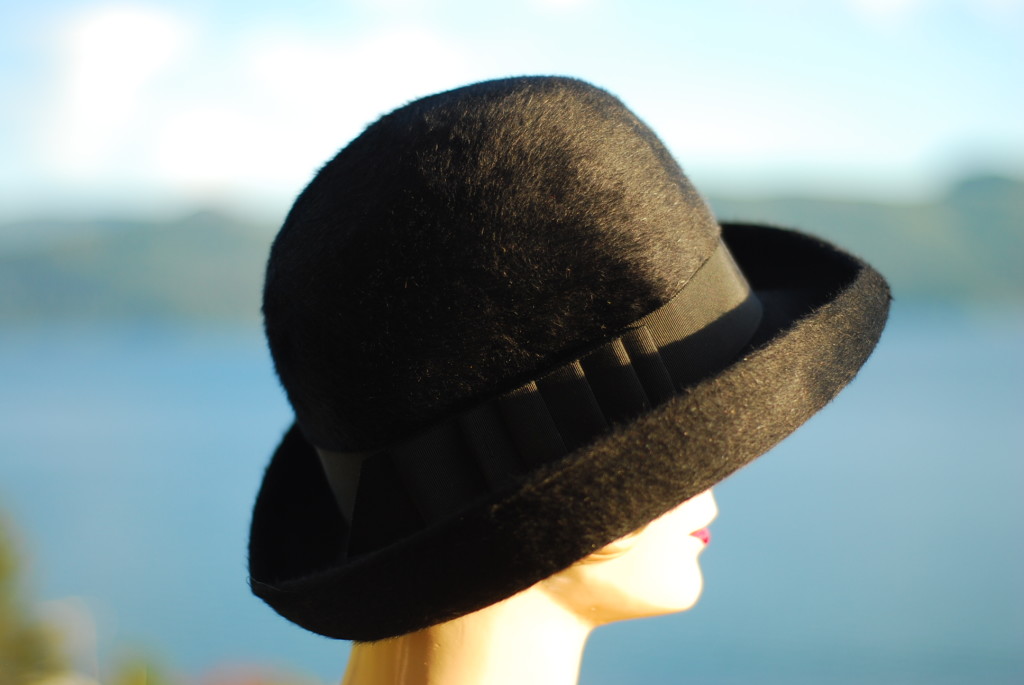
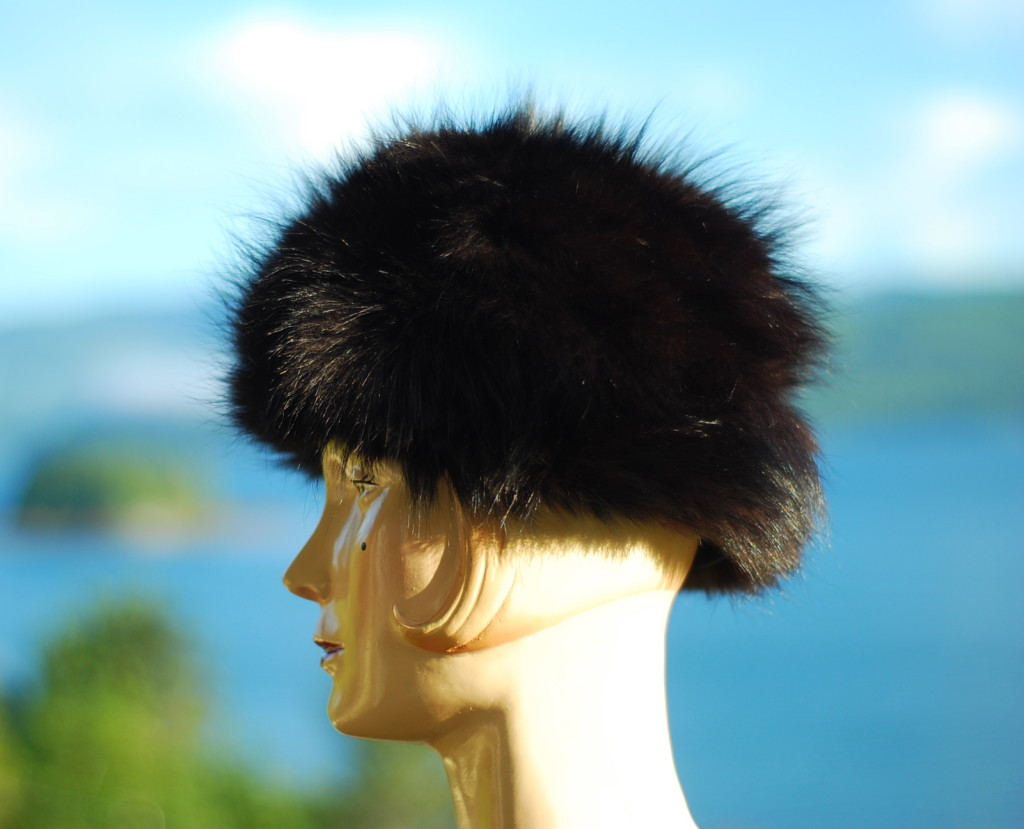
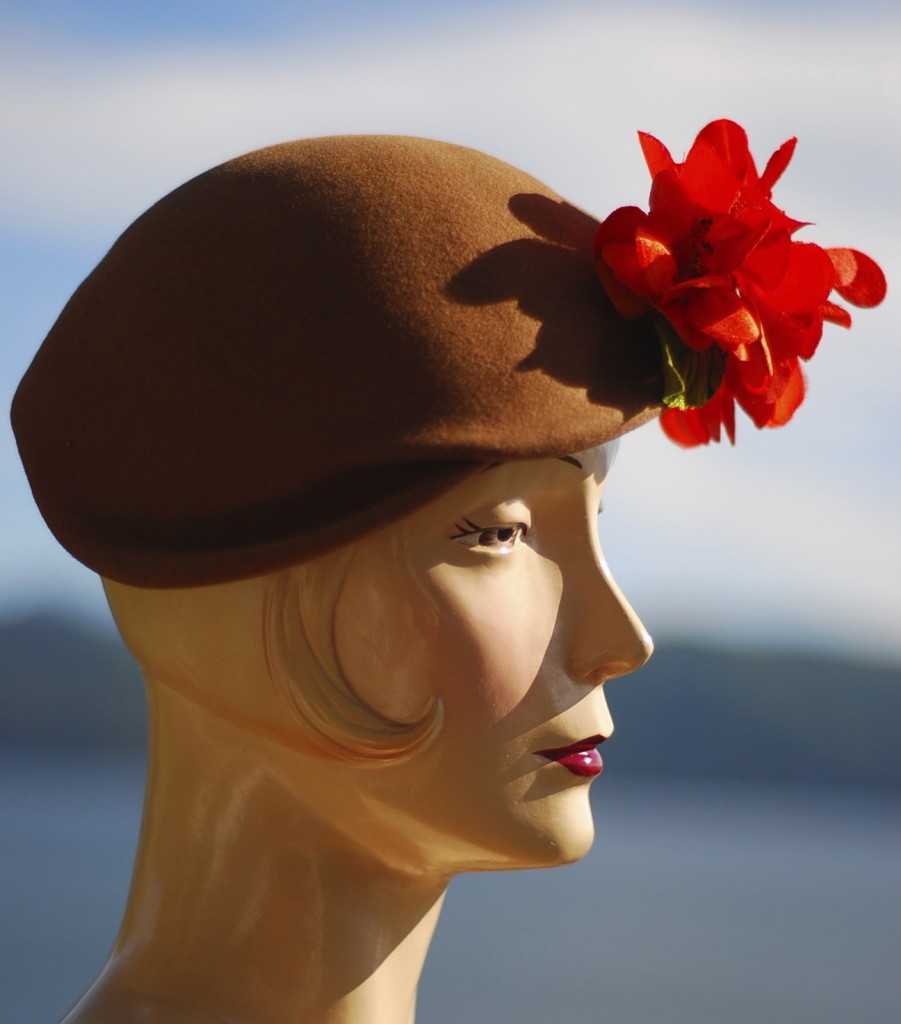
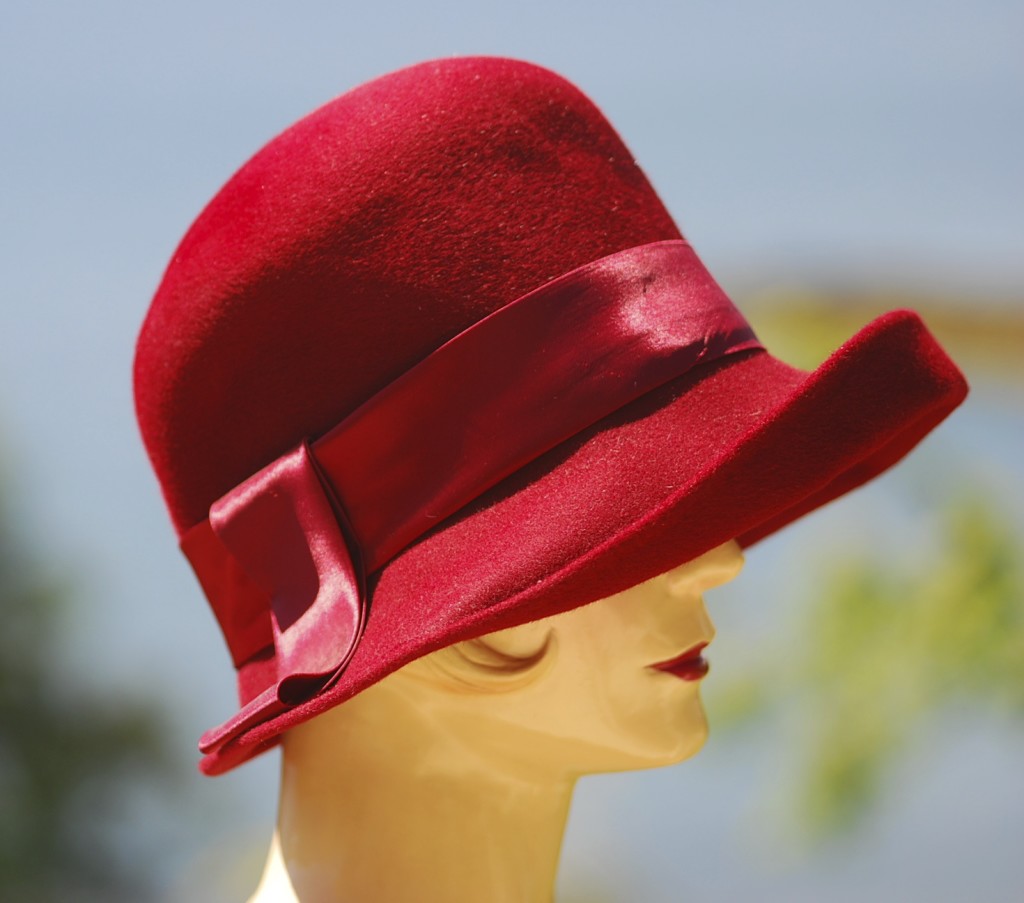
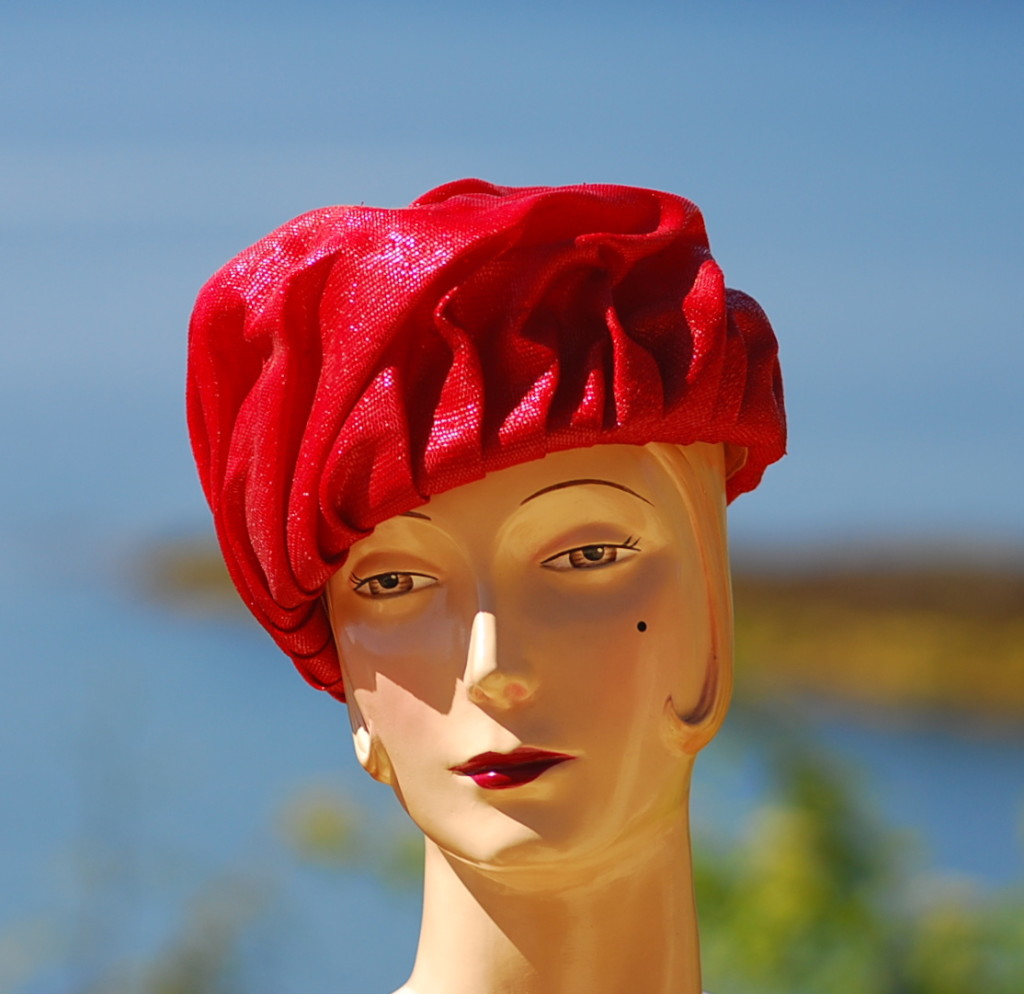
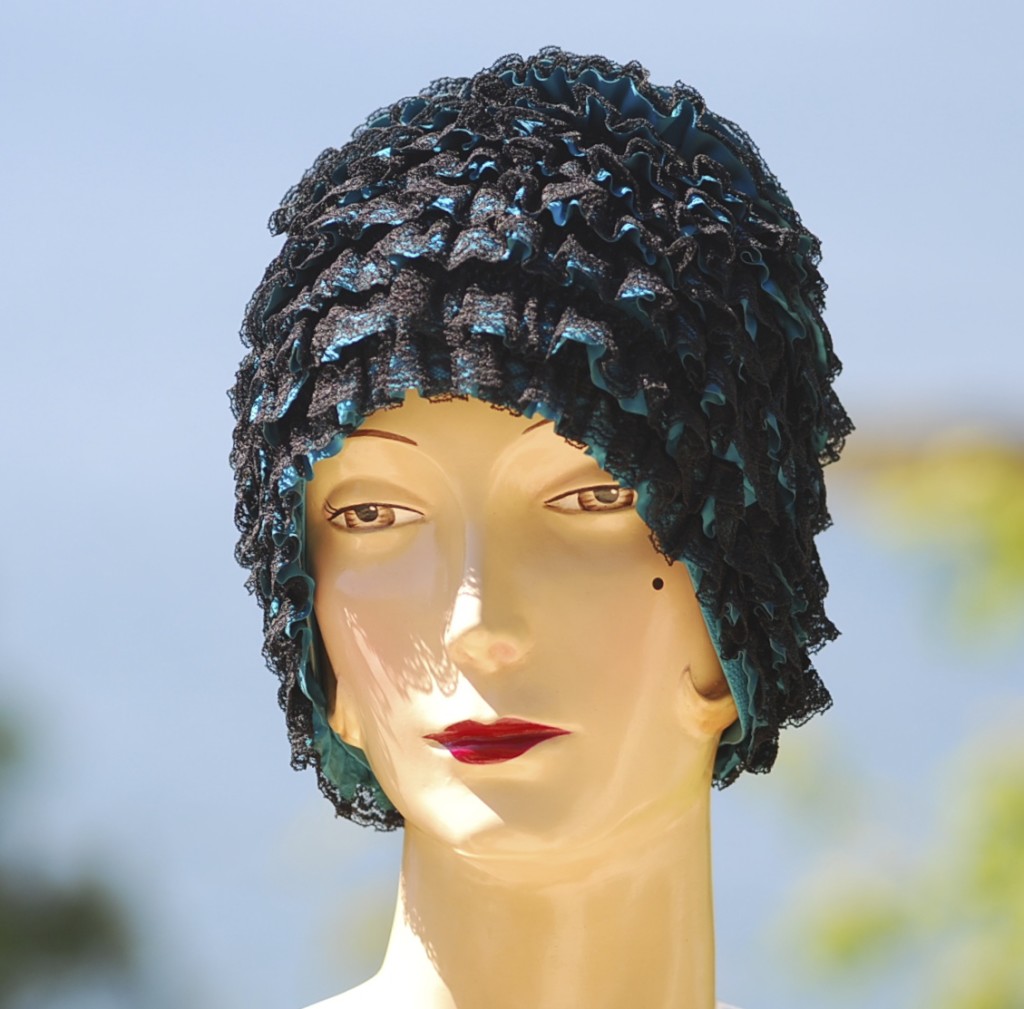
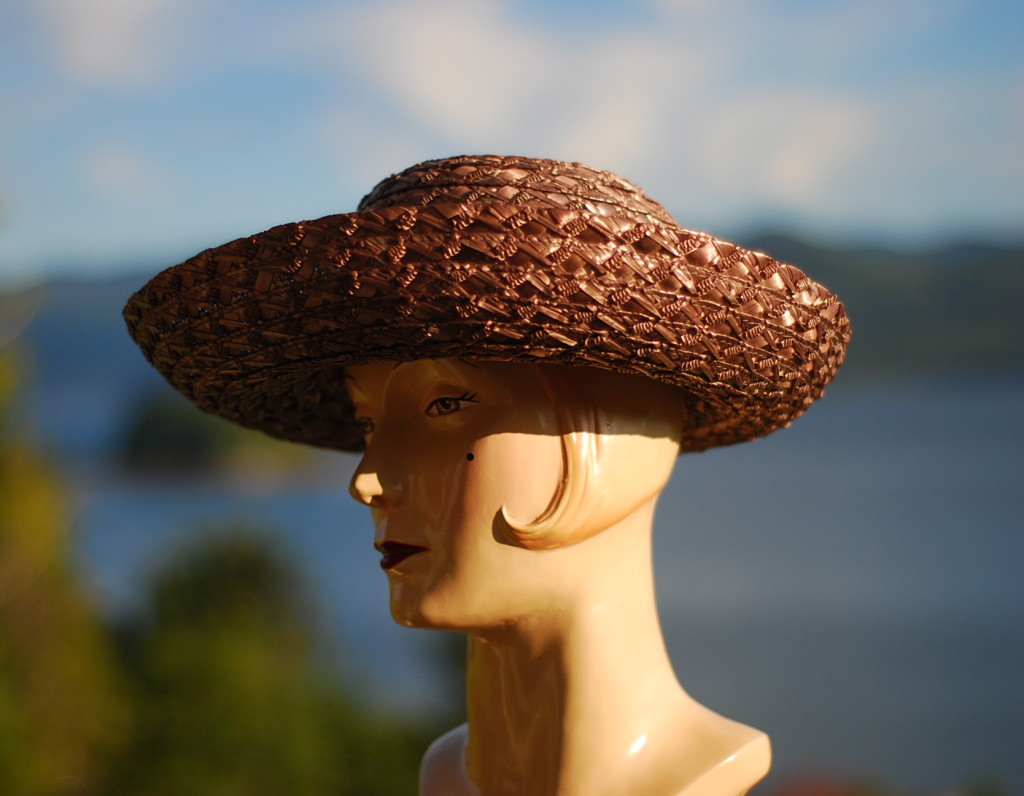
Copyright Valerie J. Hayes and Quiet West Vintage (2015). Unauthorised use and/or duplication of this material without express and written permission from this blog’s author/owner is strictly prohibited. Excerpts and links may be used, provided that full and clear credit is given to Valerie J. Hayes and Quiet West Vintage with appropriate and specific direction to the original content.
March 27, 2015
| Valerie Hayes
| View All Articles & Photos, Vintage Hats
It has been an early spring in Vancouver. The kind where you suddenly notice that all the trees lining the streets are in full bloom. The hyacinths, crocuses, and daffodils have been braving the cool breezes too, this past couple of months. We still have much to look forward to. Like how spring hats and spring flowers go together, reminding us of garden parties, and the long sunny days ahead. The following pictures were taken on the deck a couple of years ago when the clematis was in full bloom.
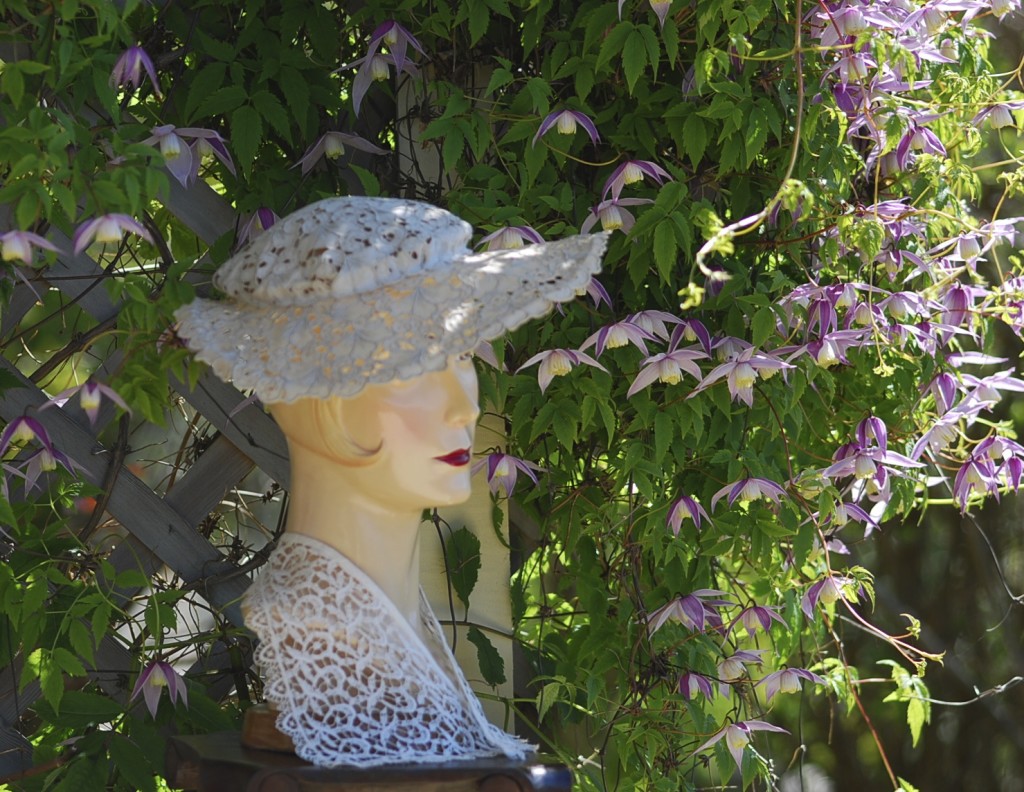
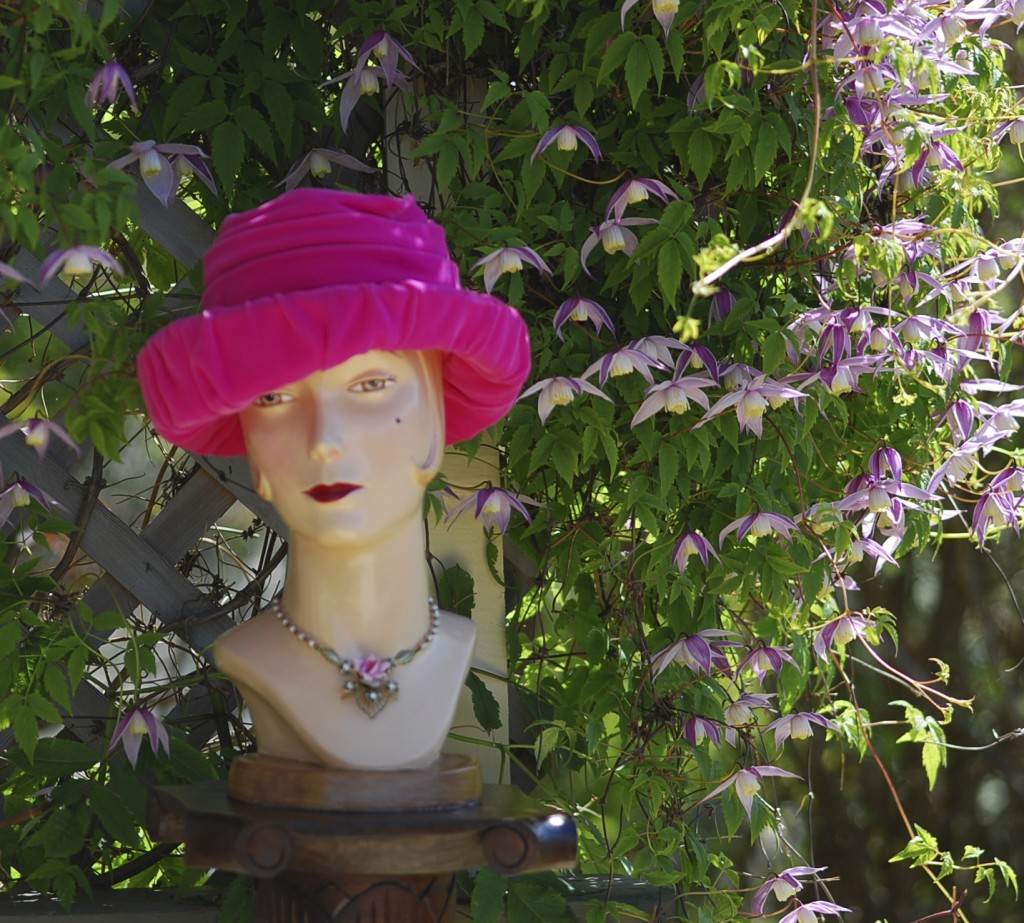
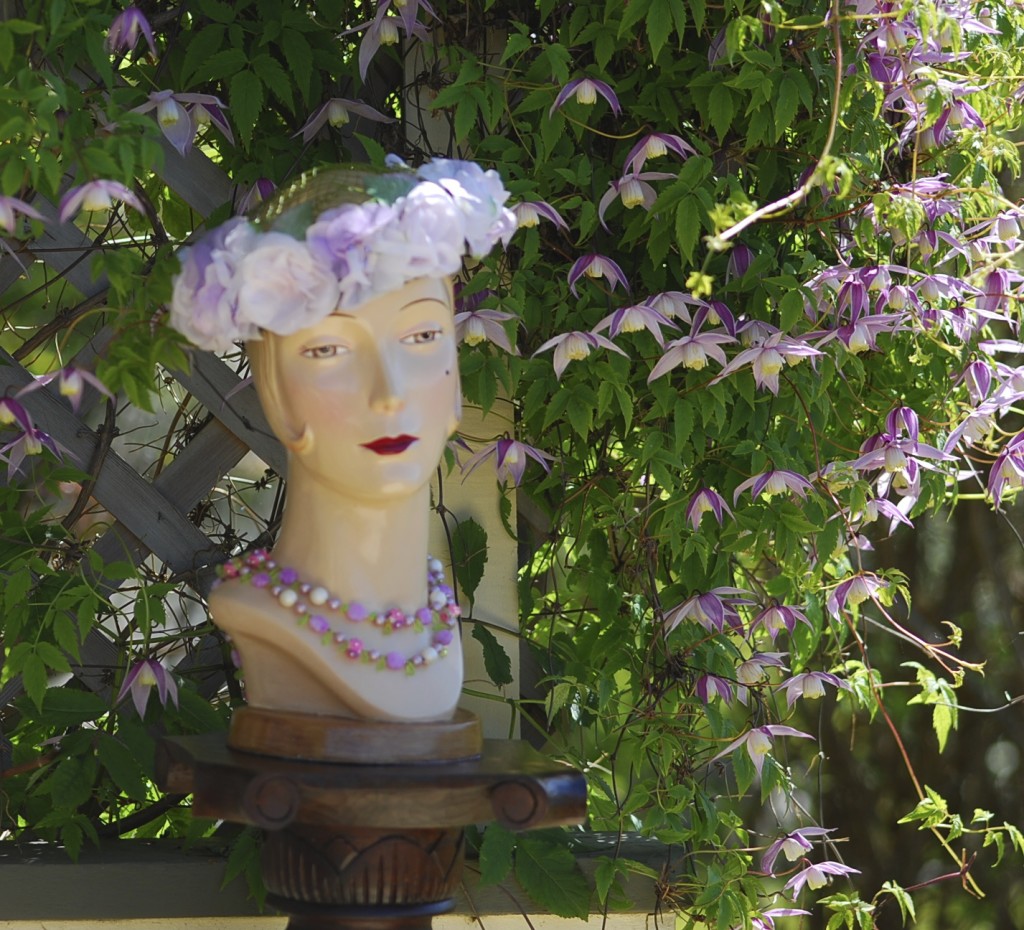 Copyright Valerie J. Hayes and Quiet West Vintage (2015). Unauthorised use and/or duplication of this material without express and written permission from this blog’s author/owner is strictly prohibited. Excerpts and links may be used, provided that full and clear credit is given to Valerie J. Hayes and Quiet West Vintage with appropriate and specific direction to the original content.
Copyright Valerie J. Hayes and Quiet West Vintage (2015). Unauthorised use and/or duplication of this material without express and written permission from this blog’s author/owner is strictly prohibited. Excerpts and links may be used, provided that full and clear credit is given to Valerie J. Hayes and Quiet West Vintage with appropriate and specific direction to the original content.
March 22, 2015
| Valerie Hayes
| Textile Art, View All Articles & Photos, Vintage Outfits
This funky 1960’s red linen mini dress features a gold hand painted rose, that goes from the shoulder to the thigh. If you love roses – why not wear one? It’s guaranteed not to wilt!
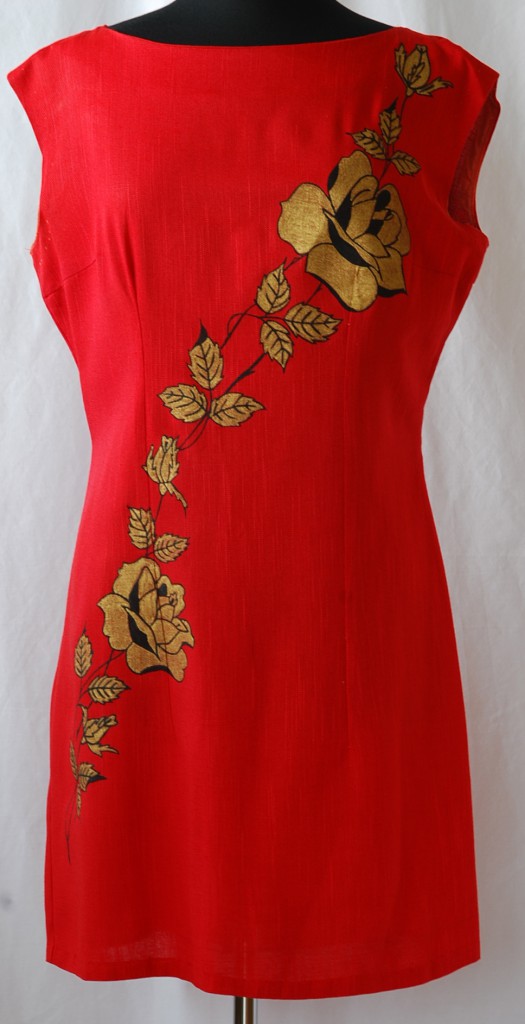
1960’s Hand Painted Gold Rose on Red Linen Mini Dress
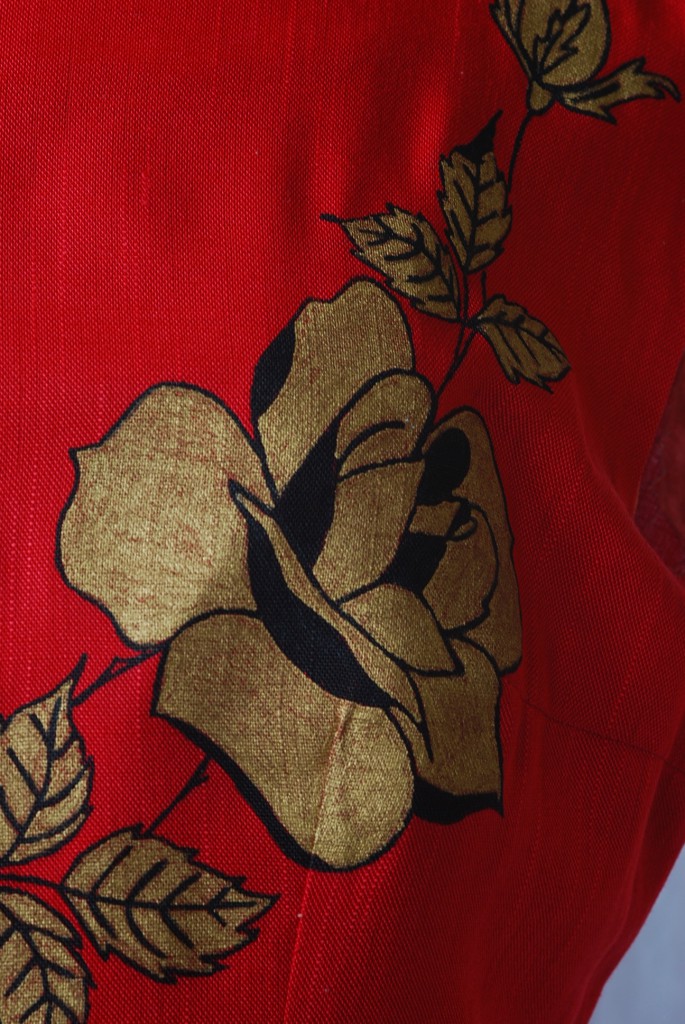
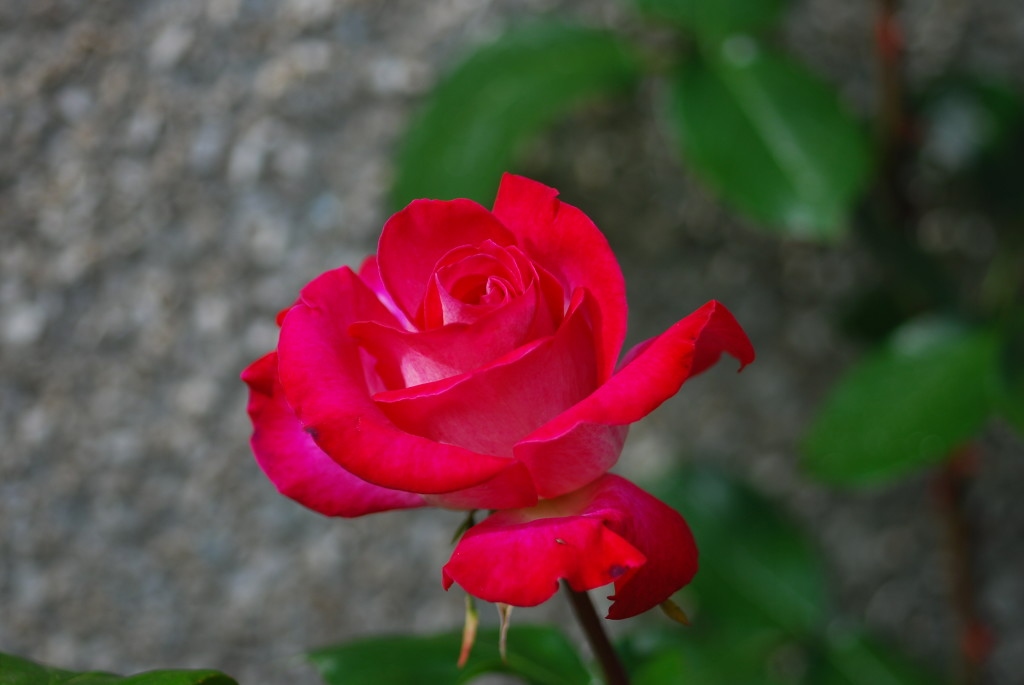
Copyright Valerie J. Hayes and Quiet West Vintage (2015). Unauthorised use and/or duplication of this material without express and written permission from this blog’s author/owner is strictly prohibited. Excerpts and links may be used, provided that full and clear credit is given to Valerie J. Hayes and Quiet West Vintage with appropriate and specific direction to the original content.
March 17, 2015
| Valerie Hayes
| Inside Passage Legendary Map, Poetry By Valerie Hayes, Thoughts & Ideas, Valerie Hayes, View All Articles & Photos
This Inside Passage Legendary Map poem was written as a “rhyming riddle” to enhance the lyric voice on the map. It is placed in two line segments in the cameos around the border of the Inside Passage Legendary Map. One of the extra detailed features of the map – is to be able to figure out the order of the verse in the border of the map.
Poet-Pourri
Words like petals – Form a poem;
Flower blooms – Then bows her head.
Sheds thoughts upon the ground ~
Moss – Prepared – Has made a bed
Poetic petals flutter down.
Depart from proud, stately stems
‘Til Nature has them land
Bathed in dew – Just humble gems.
Nature inspires deep respect,
Sweet pot-pourri recants…
Woods are made fresher yet ~
For the poet-pourri – Enchants.
Valerie J. Hayes

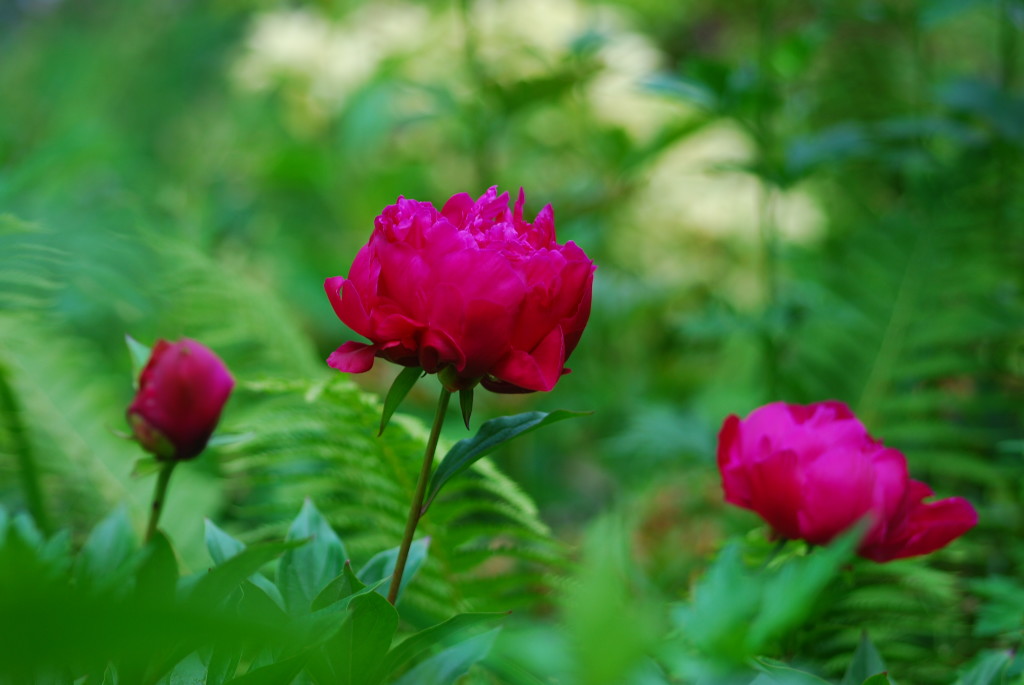


Copyright Valerie J. Hayes and Quiet West Vintage (2015). Unauthorised use and/or duplication of this material without express and written permission from this blog’s author/owner is strictly prohibited. Excerpts and links may be used, provided that full and clear credit is given to Valerie J. Hayes and Quiet West Vintage with appropriate and specific direction to the original content.
March 17, 2015
| Valerie Hayes
| View All Articles & Photos, Vintage Hats
Among the highlights of millinery craftsmanship, the vintage flowers are almost as uplifting as the real ones. The first hat in the post features a 1950’s hat with a Macy’s New York label. Covered in white flowers with a bright pink flower and pussy willows adorning the front ~ it sings of spring. The underside of the brim is lined with green cut out leaves. The pink hat below it is from the sixties. The flowers on this hat are layered between an organza fabric. The third one is a veiled hair band, that came in a small clear box labeled “Date Hat” for a spring prom or dance. The others are examples of past decade arrangements and colours that show the once very popular practice of putting flowers on hats.
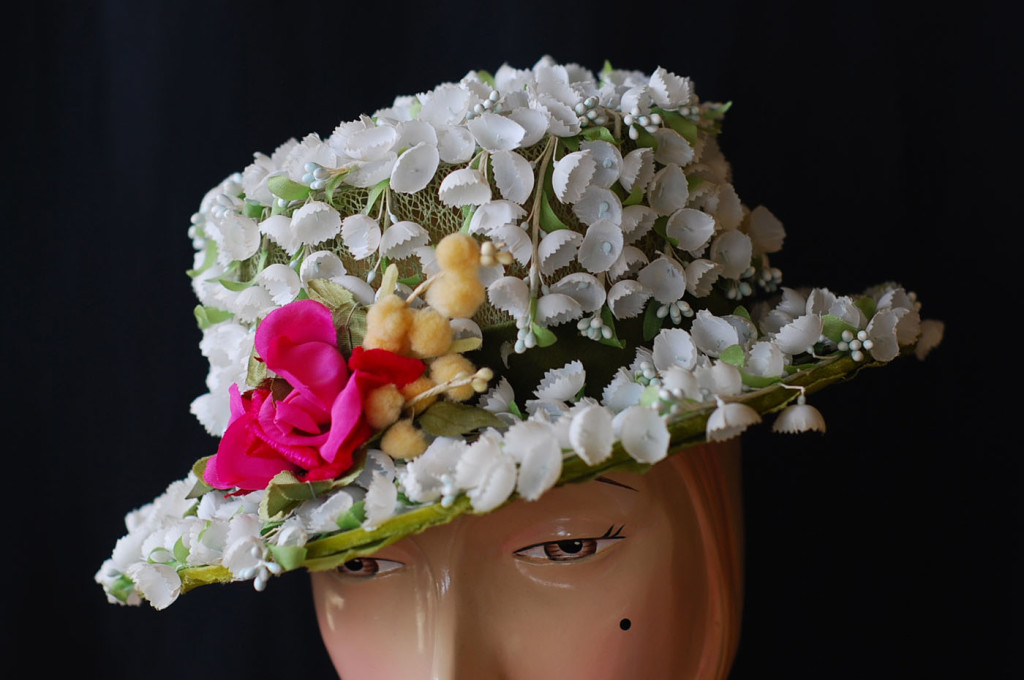
Macy’s New York 1950’s Spring Flowers
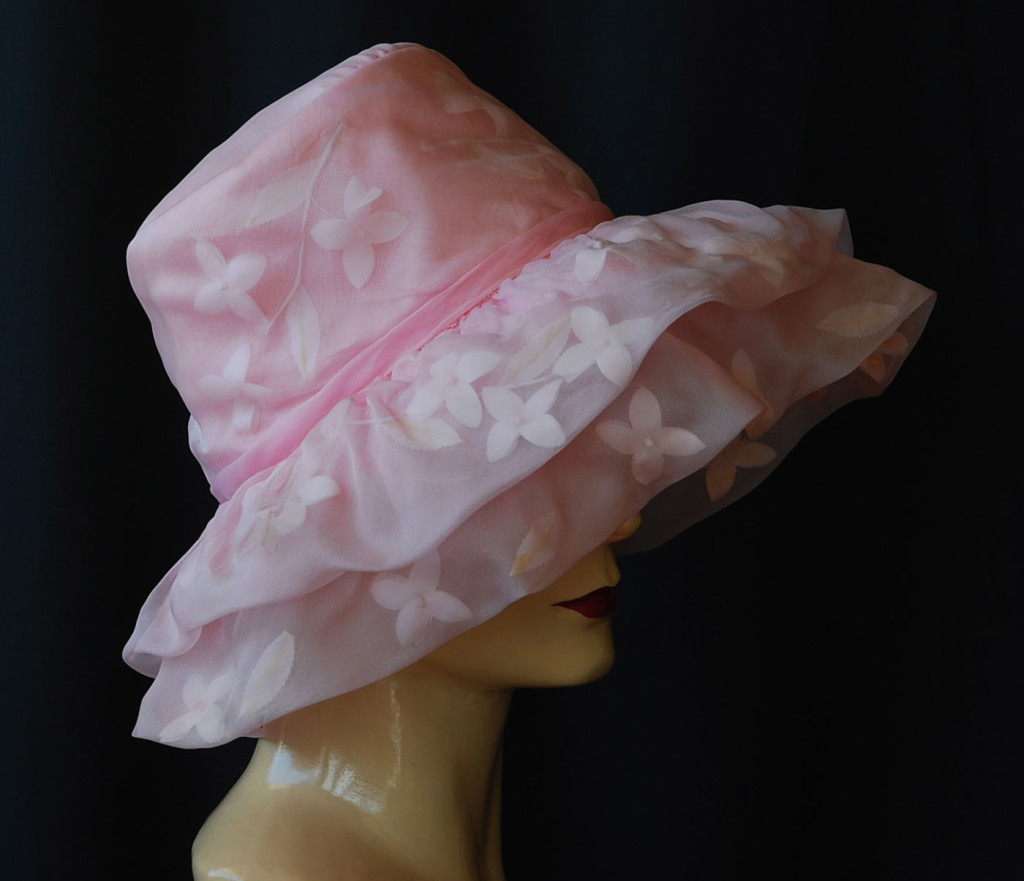
Hudson’s Bay
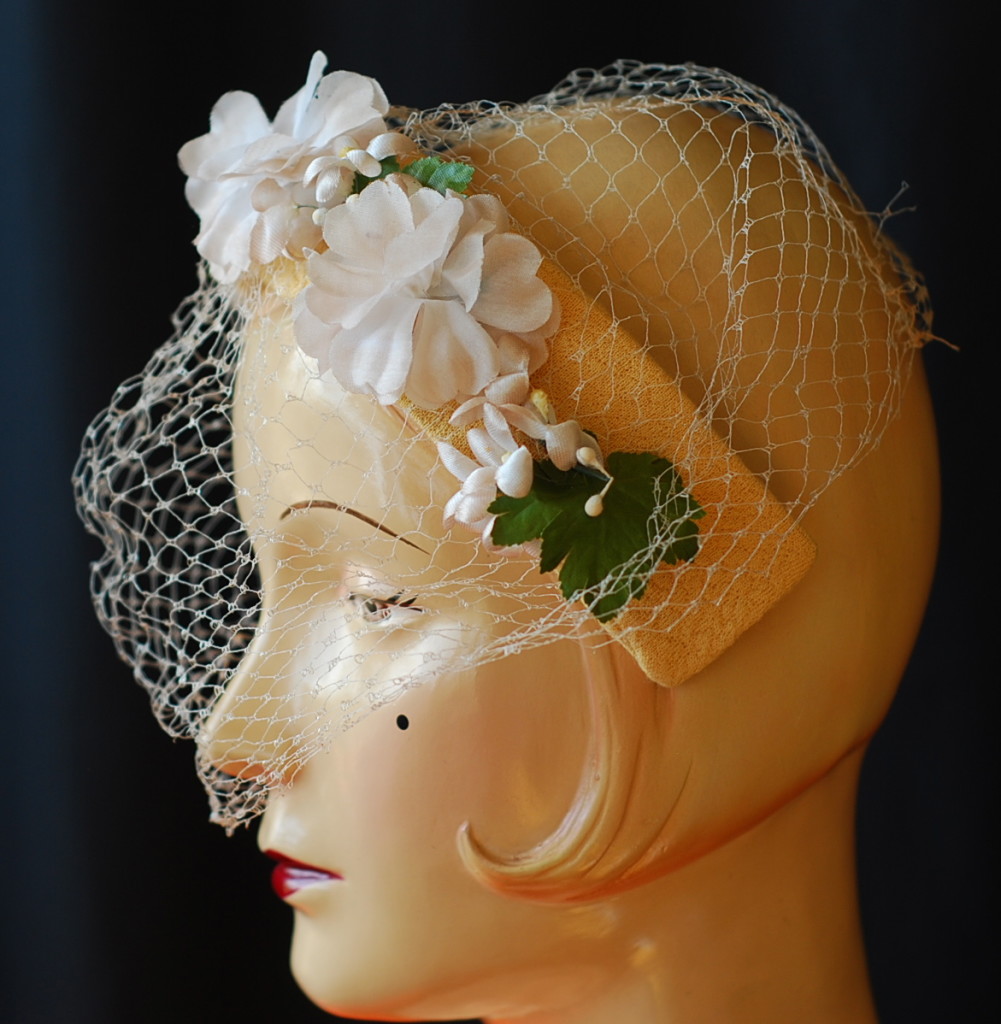
A Date Hat
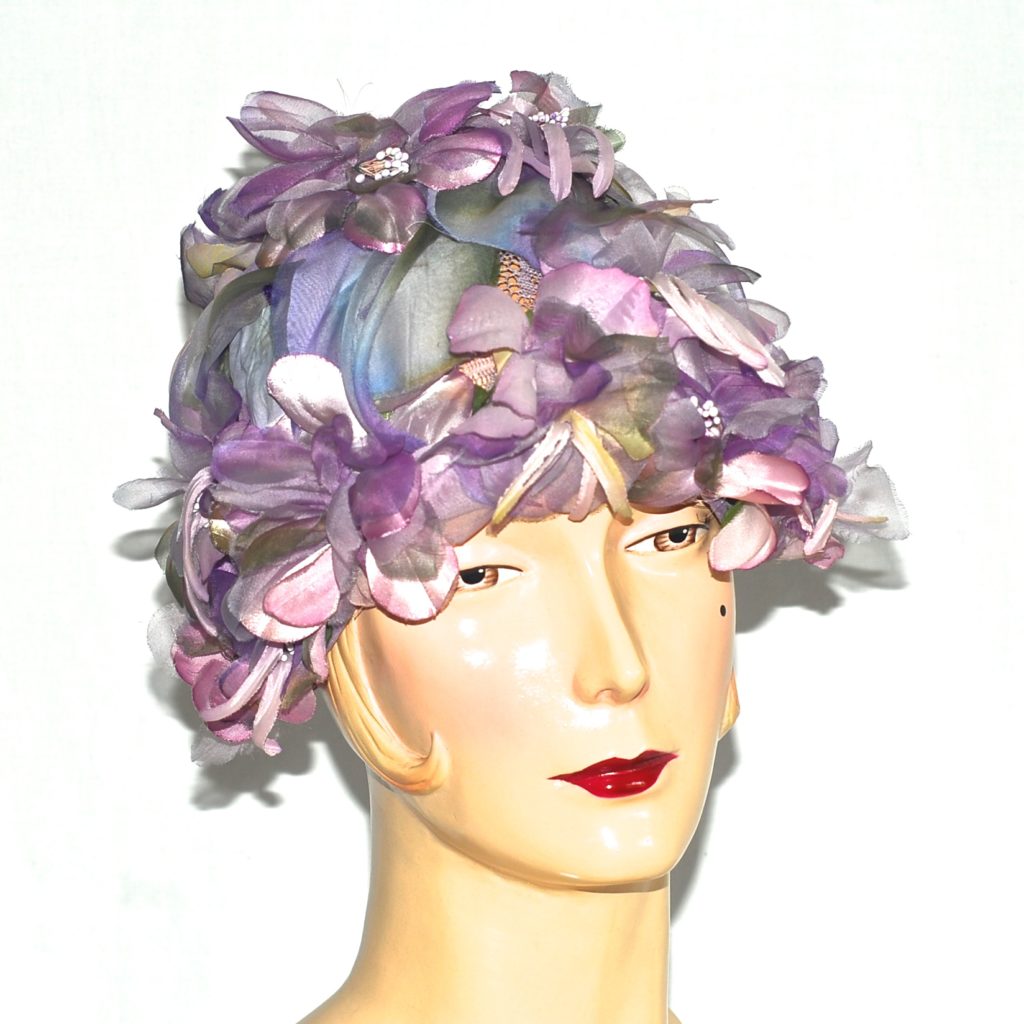
Modern Miss 1960’s
Copyright Valerie J. Hayes and Quiet West Vintage (2015). Unauthorised use and/or duplication of this material without express and written permission from this blog’s author/owner is strictly prohibited. Excerpts and links may be used, provided that full and clear credit is given to Valerie J. Hayes and Quiet West Vintage with appropriate and specific direction to the original content.
February 23, 2015
| Valerie Hayes
| Textile Art, View All Articles & Photos, Vintage Outfits
For those who have done extensive needlework, embroidery and beading on fine garments – they can readily see the time and craftsmanship involved in these creations from the past. However – it is hard for most of us to imagine the time and patience required to bead such a sweater as the one featured in this post. The fifties era holds claim to some of the most beautifully artistic beaded sweaters of all time. These fine beaded sweaters have what it takes to hob nob with the most cherished mid-century vintage and luxury designer pieces. It is rare to find them in good condition (especially the lighter coloured ones) – that have survived the rigours of the past sixty five years to age as gracefully as this!
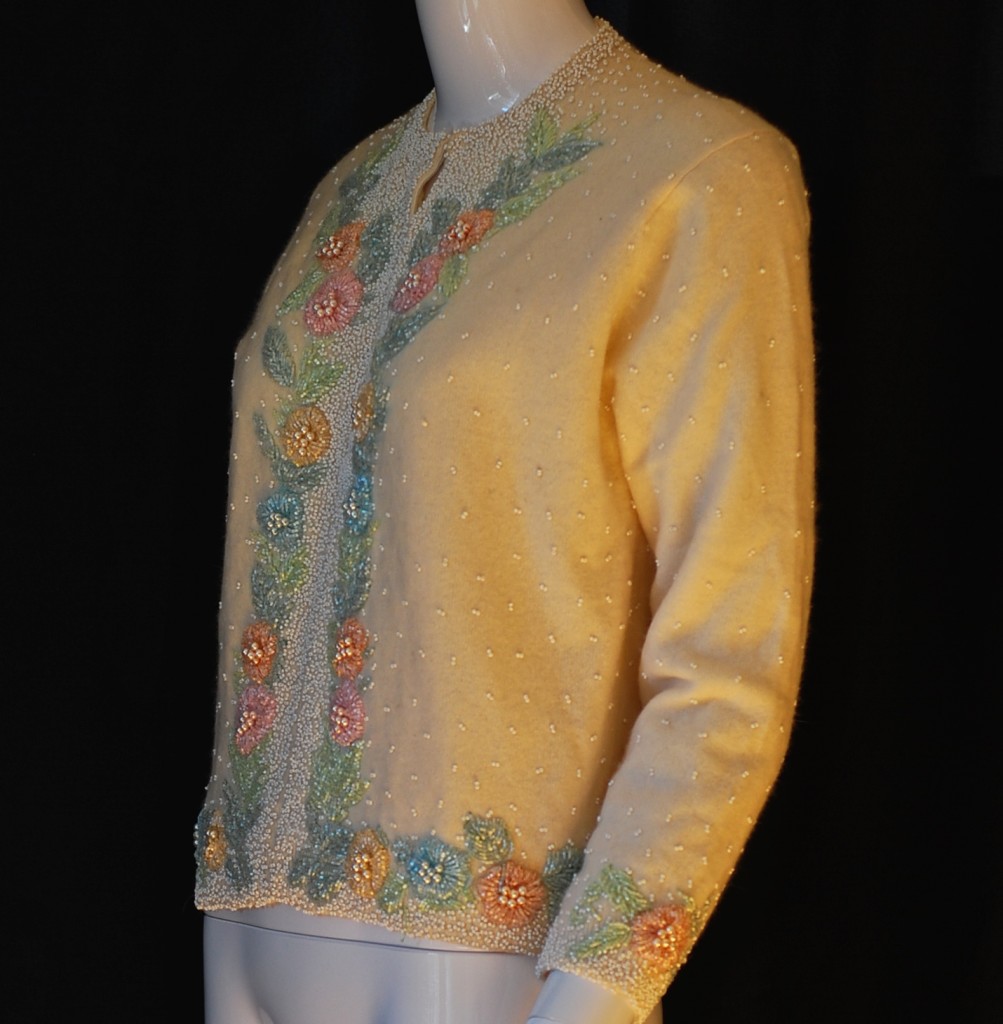
If you happen to have a hand beaded sweater from the fifties that needs cleaning; the following description is a common-sense method of care and cleaning that I use for beaded woollens:
– Rule number one is to handle it very gently, for the sake of the beadwork as well as the wool. Create a bath of water that is blood warm or body temperature, not quite tepid. Add and mix Zero and then gently insert the sweater.
– If the sweater has a stain, you can put some Oxiclean directly on the stain and see if it will lift it out. Swirl gently. Don’t soak it for very long.
– Empty the bath and add water to rinse two or three times until the soap is rinsed out. Lay it flat on a rack with a big towel over it and gently shape it.
– If the lining has stains or colour bleed from the exterior, in my experience, they are less likely to come out than stains in the wool.
– However, if the lining is white cotton and lifts away from the sweater, you can insert a white linen hankie between the lining and the wool. This enables you to treat the stain on the lining without coming in contact with the wool on the sweater.
In the case of the sweater shown in this post, the lining is synthetic. It appears that the colour from the surface beading and thread, over time, has leeched onto the lining in certain spots. I have not attempted to treat that, because it is not visible, and is not likely to come out. It is not worth taking any risk that might damage the exterior of the sweater.
The other tip to share with those of you who have an interest in preserving this type of artwork on textiles, especially with wool – is to put the item in a snap lid plastic container and freeze it for 24 hours. You can do this even before washing it. Freezing kills moth larva and is a good practice for maintaining fine vintage woollens. But, don’t wash it immediately after freezing it. Let it return to room temperature first. The idea is not to shock it too much. Also, a drop or two of neem oil can be mixed with the Zero for washing certain woollens – as an extra prophylaxis.
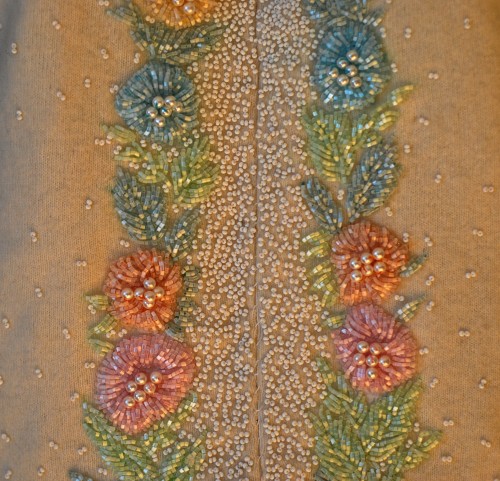
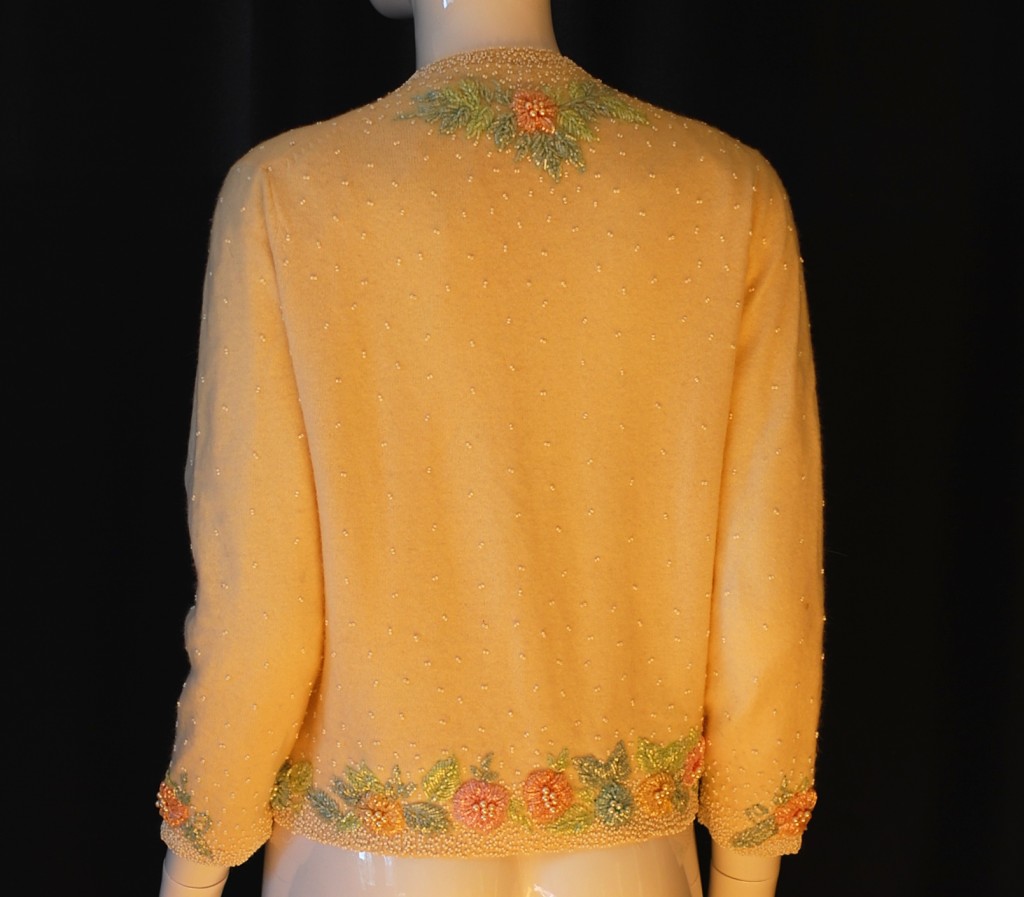
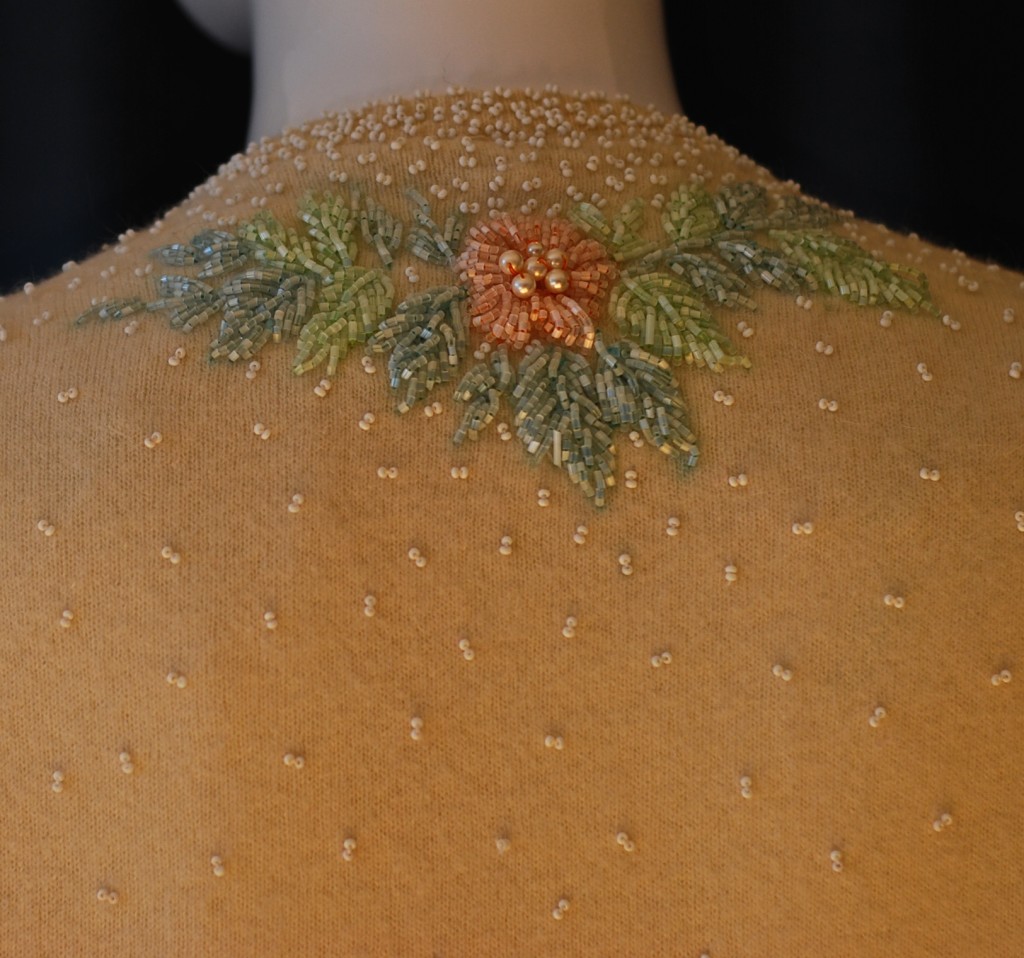
Copyright Valerie J. Hayes and Quiet West Vintage (2015). Unauthorised use and/or duplication of this material without express and written permission from this blog’s author/owner is strictly prohibited. Excerpts and links may be used, provided that full and clear credit is given to Valerie J. Hayes and Quiet West Vintage with appropriate and specific direction to the original content.
February 19, 2015
| Valerie Hayes
| Designer History, View All Articles & Photos, Vintage Outfits
Certain designer labels seldom turn up in western Canada’s second hand clothing market, with London’s Rhonda Zilkha being one of them. I have found one item so far with her label. When I started researching her history, I was surprised to see the list of celebrities who wore her designs, in particular Princess Diana – because she was consistently gracious and model-like in the way she dressed and carried herself.
Ronit Zilkha’s story in the link below, provides us with an honest and poignant insight into the fashion industry – as she gives a detailed description of the rise and fall of her own label:
https://www.dailymail.co.uk/femail/article-1233459/When-empire-collapsed-I-numb-shell-shocked-fashion-queen-Ronit-Zilkha.html
Below is a black maxi skirt with a front slit by Ronit Zilkha, likely from the nineties:
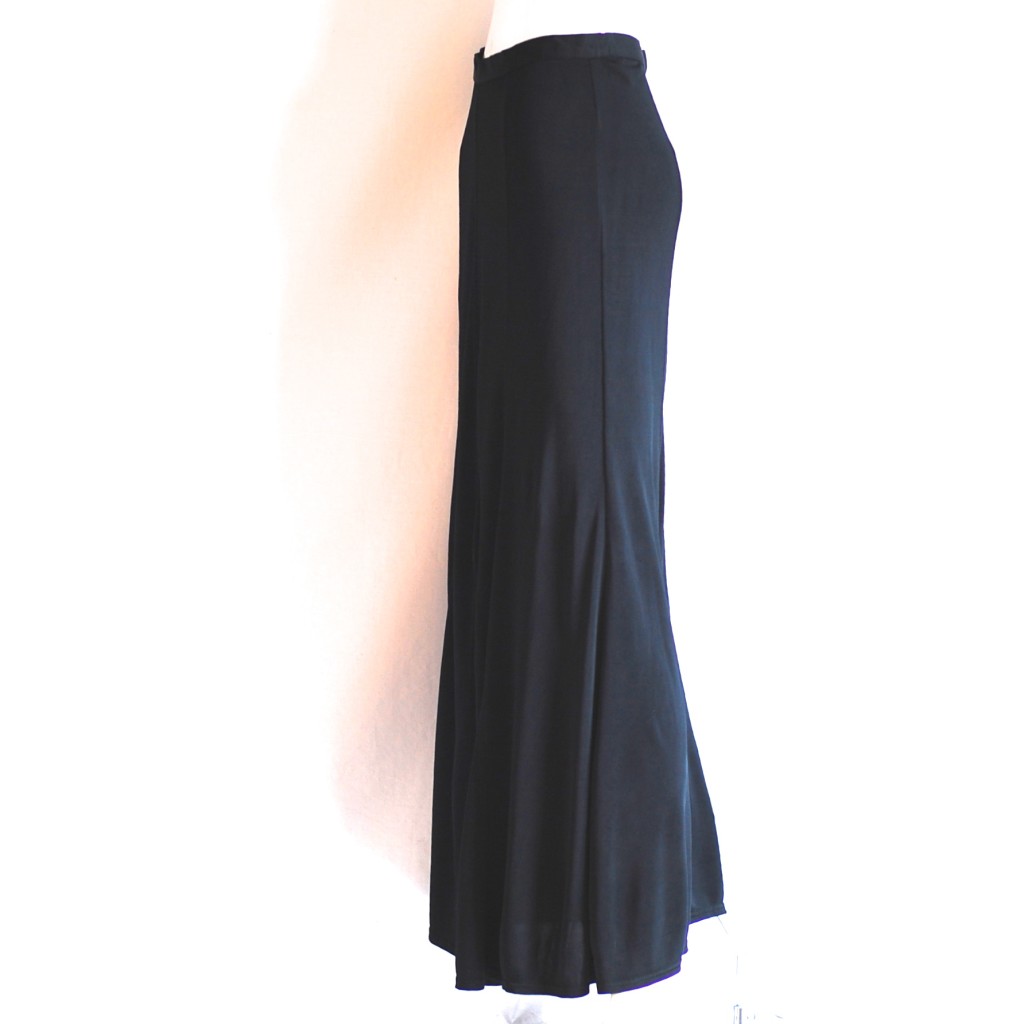
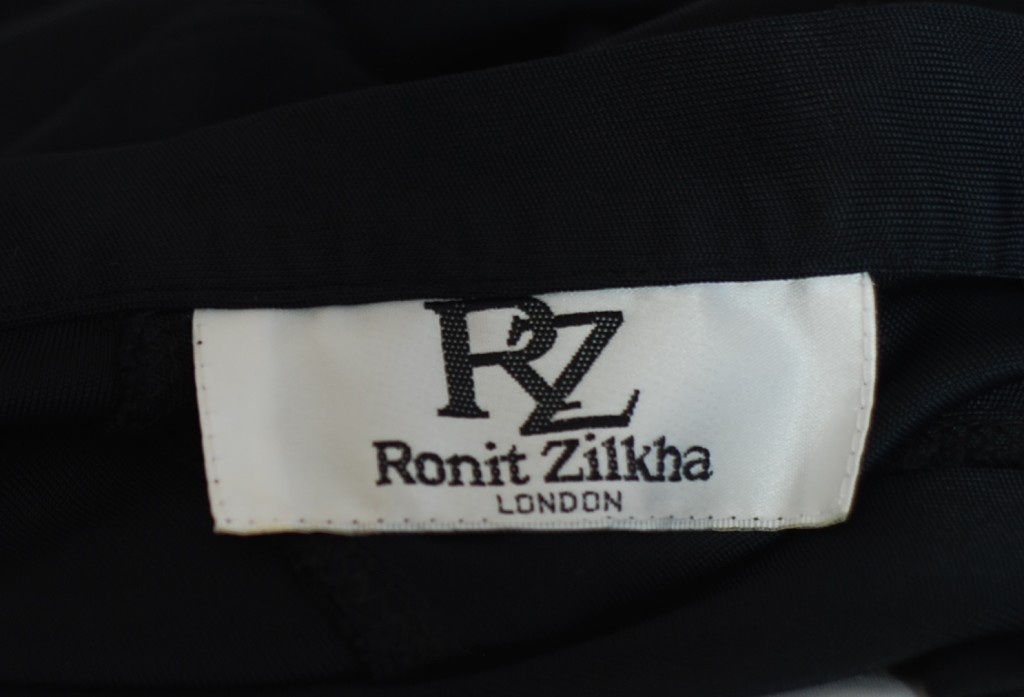 Copyright Valerie J. Hayes and Quiet West Vintage (2015). Unauthorised use and/or duplication of this material without express and written permission from this blog’s author/owner is strictly prohibited. Excerpts and links may be used, provided that full and clear credit is given to Valerie J. Hayes and Quiet West Vintage with appropriate and specific direction to the original content.
Copyright Valerie J. Hayes and Quiet West Vintage (2015). Unauthorised use and/or duplication of this material without express and written permission from this blog’s author/owner is strictly prohibited. Excerpts and links may be used, provided that full and clear credit is given to Valerie J. Hayes and Quiet West Vintage with appropriate and specific direction to the original content.
February 8, 2015
| Valerie Hayes
| View All Articles & Photos, Vintage Outfits
This prodigious, heavy cotton velvet opera cape is accented with a fur trimmed hood and red satin lining. It is a perfect topper for an evening out when the weather is still cool – as it is in Vancouver in February. The vintage cape was made in Canada, shown in contrast over a more contemporary skimpy lace dress. The long sleeved lace dress would most likely be worn with a slip or undergarment, depending on how risque one wants to be. I chose the dress to go with the cape for this shot, because of the way the lace covered arms look when the cape is buttoned up. There is a label on the cape “Royal Emblem” – but so far, I have not been able to find any details on the designer. Judging by the buttons, it is estimated to be from the fifties.
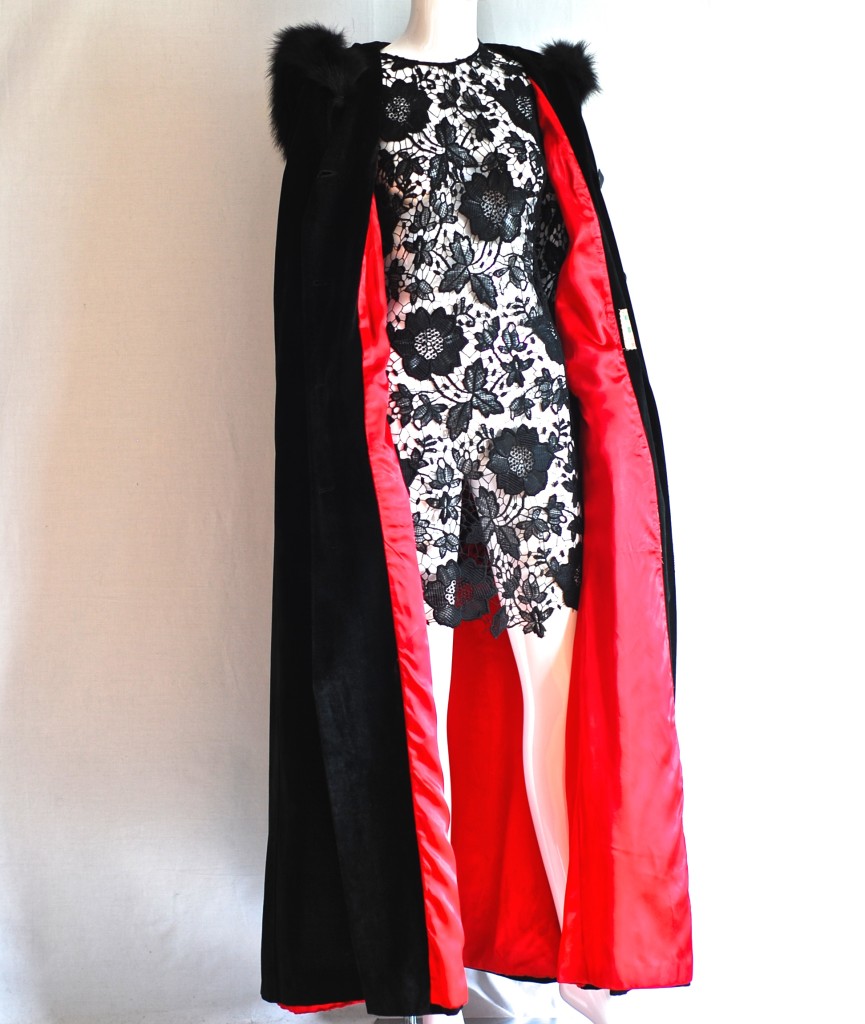
Vintage Fur Trimmed Velvet Opera Cape
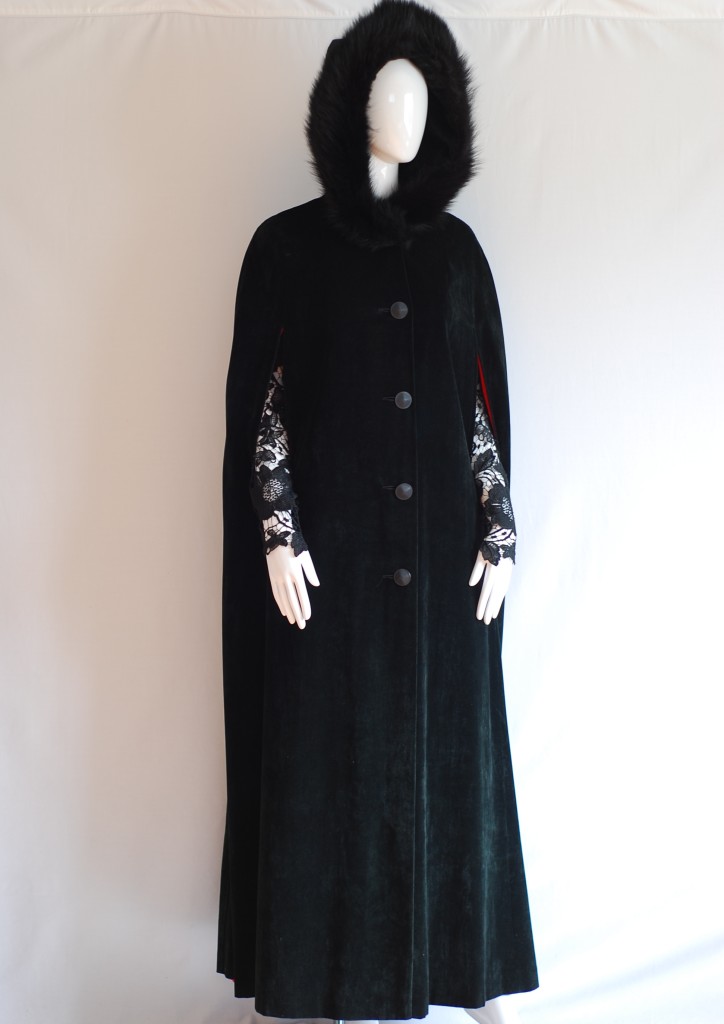
February 6, 2015
| Valerie Hayes
| Business & Web Development, Designer History, View All Articles & Photos, Vintage Outfits
In 2013, the founders of Marni Knits in Toronto, retired and closed shop after more than fifty years in business together. The story of this company is so inspirational because it shows us; not only the teamwork and longevity surrounding their union and marriage, but also, that their designs and creations came from a true “hands on” labour of love. The following CBC story provides the background and history of this sweet Canadian love story – giving us a glimpse into how they managed to knit their lives together:
https://www.cbc.ca/news/canada/toronto/after-50-years-toronto-couple-quits-knit-wear-business-1.1320559
Below is an example of a hand loomed dress by Marni Knits. So far, it is the only Marni Knit item in the Quiet West Vintage collection. It is estimated to be from the seventies:
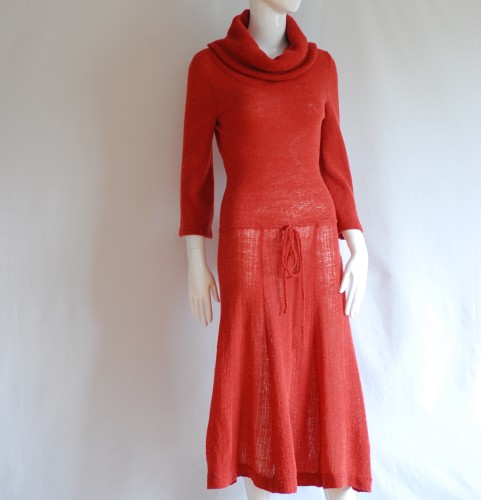
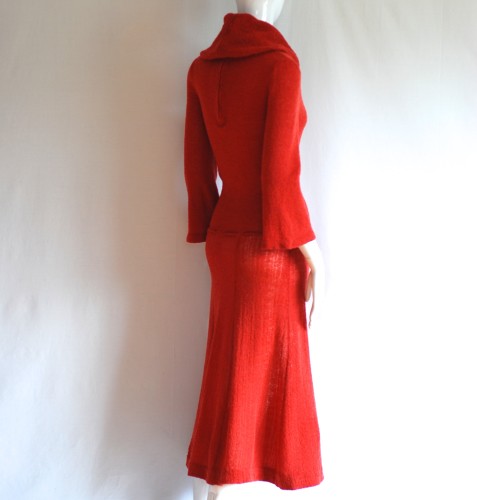
Copyright Valerie J. Hayes and Quiet West Vintage (2015). Unauthorised use and/or duplication of this material without express and written permission from this blog’s author/owner is strictly prohibited. Excerpts and links may be used, provided that full and clear credit is given to Valerie J. Hayes and Quiet West Vintage with appropriate and specific direction to the original content.
January 22, 2015
| Valerie Hayes
| Fashion Research, Textile Art, View All Articles & Photos, Vintage Outfits
This gorgeous silk hand embroidered piano shawl is still luxurious and vibrant, almost a hundred years after it was made with painstaking patience. This one, fortunately, has been stored away from dust and direct sunlight over the years. Piano shawls have to be handled with great care to avoid knotting and tangling the fringe. Originally made to cover pianos, these shawls were used in elaborate fashion photo shoots in the twenties with a revival featured in Vogue magazine in the late sixties. The last two pictures in the post show the reverse side of some of the embroidery.
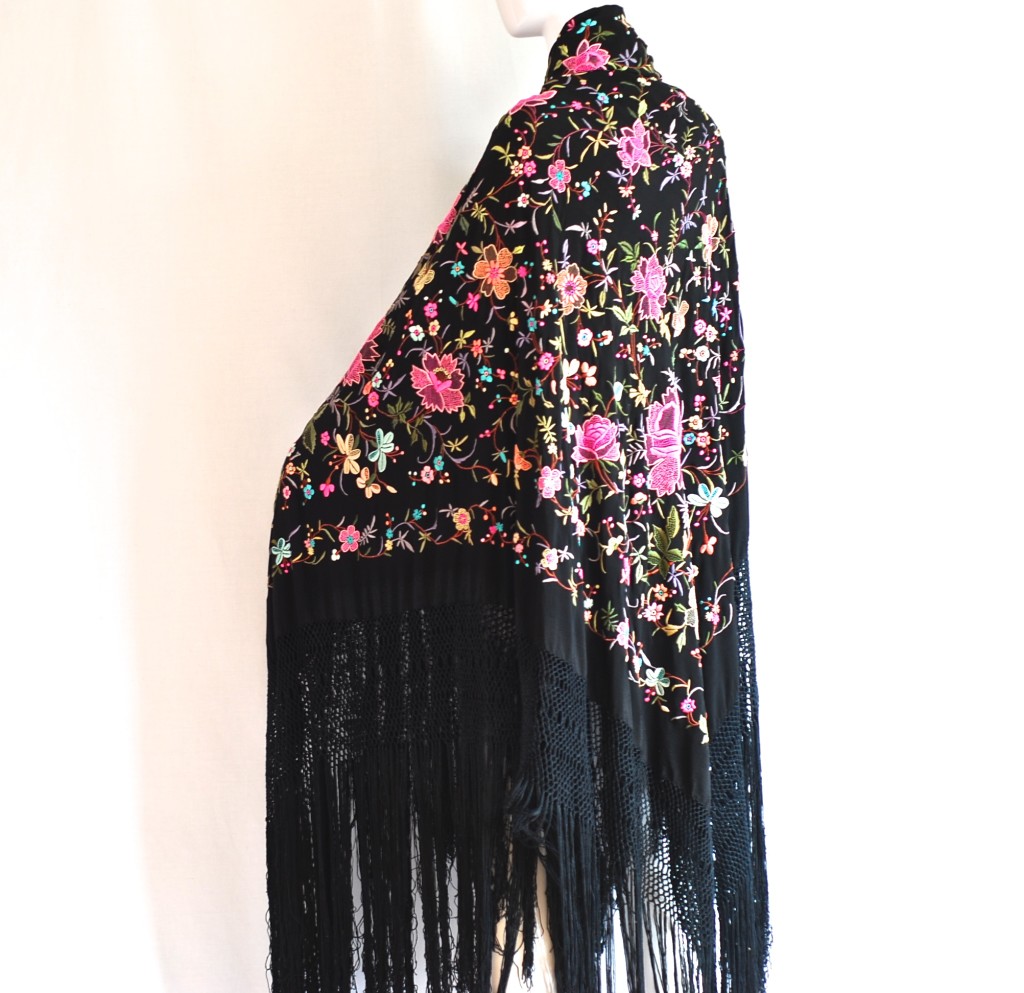
1920’s Hand Embroidered Silk Fringed Piano Shawl
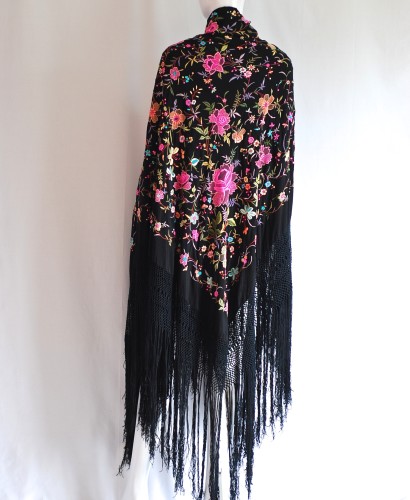
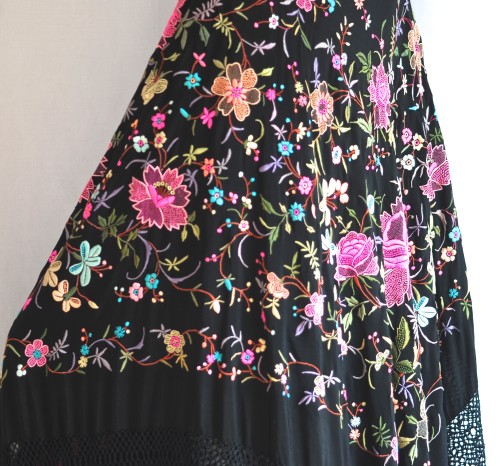
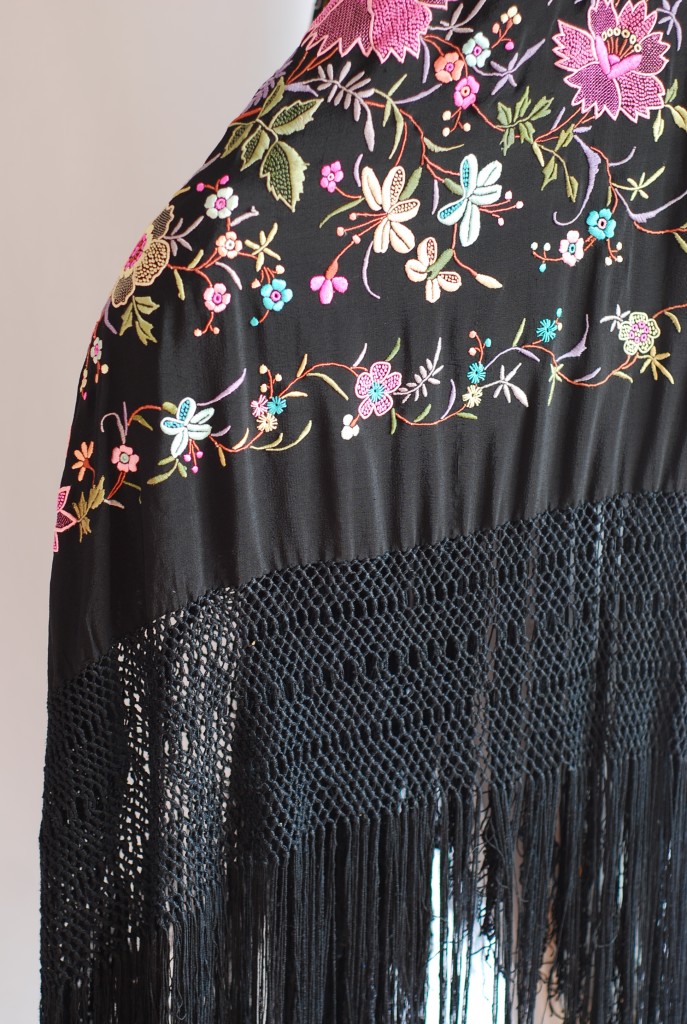
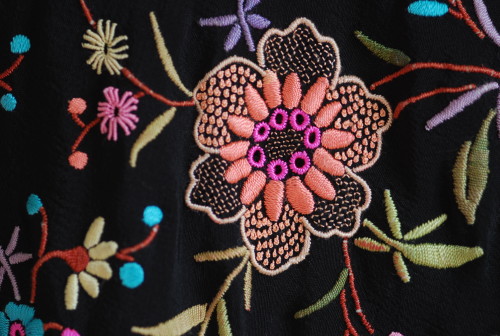
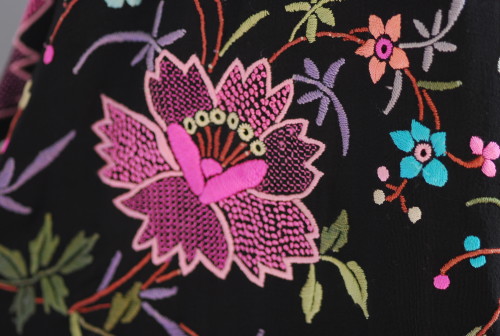
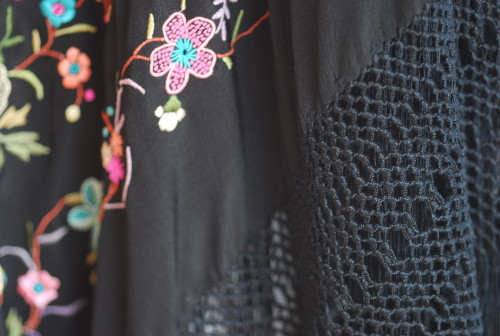
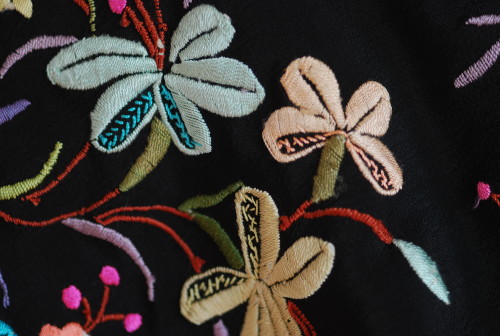
Reverse Side
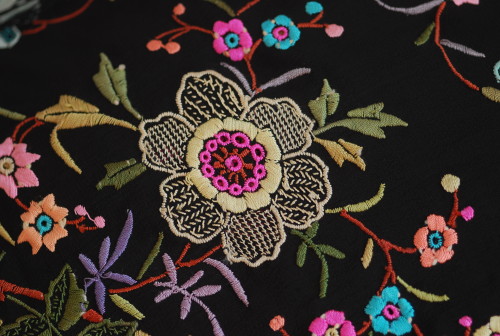
Reverse Side
Copyright Valerie J. Hayes and Quiet West Vintage (2015). Unauthorised use and/or duplication of this material without express and written permission from this blog’s author/owner is strictly prohibited. Excerpts and links may be used, provided that full and clear credit is given to Valerie J. Hayes and Quiet West Vintage with appropriate and specific direction to the original content.
January 9, 2015
| Valerie Hayes
| Business & Web Development, Fashion Research, View All Articles & Photos, Vintage Jewelry
Tesserae is the term that is used to describe one of the smallest components of stone or glass used to create a mosaic. During the Renaissance (14th-17th century) Italy – with its famous glass makers and master craftsmen, began to create micro mosaic jewelry. They created scenes and religious icons by arranging tiny bits of cut glass within a setting.
The real trend or popularity of wearing micro mosaic jewelry followed the Renaissance period into what is described as the Grand Tour between the 17th and 19th century. This promotional tour consisted of the European upper class traveling to Italy to take in the famed Italian arts and culture. During this time, the Italian peninsula became a popular tourist destination for the scenery, the enhanced social status, education and cultural adventure that was part of the Grand Tour experience.
Micro mosaics were used in other art objects in addition to jewelry. It was generally considered that the finer and smaller the tesserae, the more valuable the piece. The pin and bracelet in this post are examples of Italian mosaic jewelry. You can click on the image and then maximize it for a closer look at the tiny tesserae – as well as the detailed metal work within the setting.
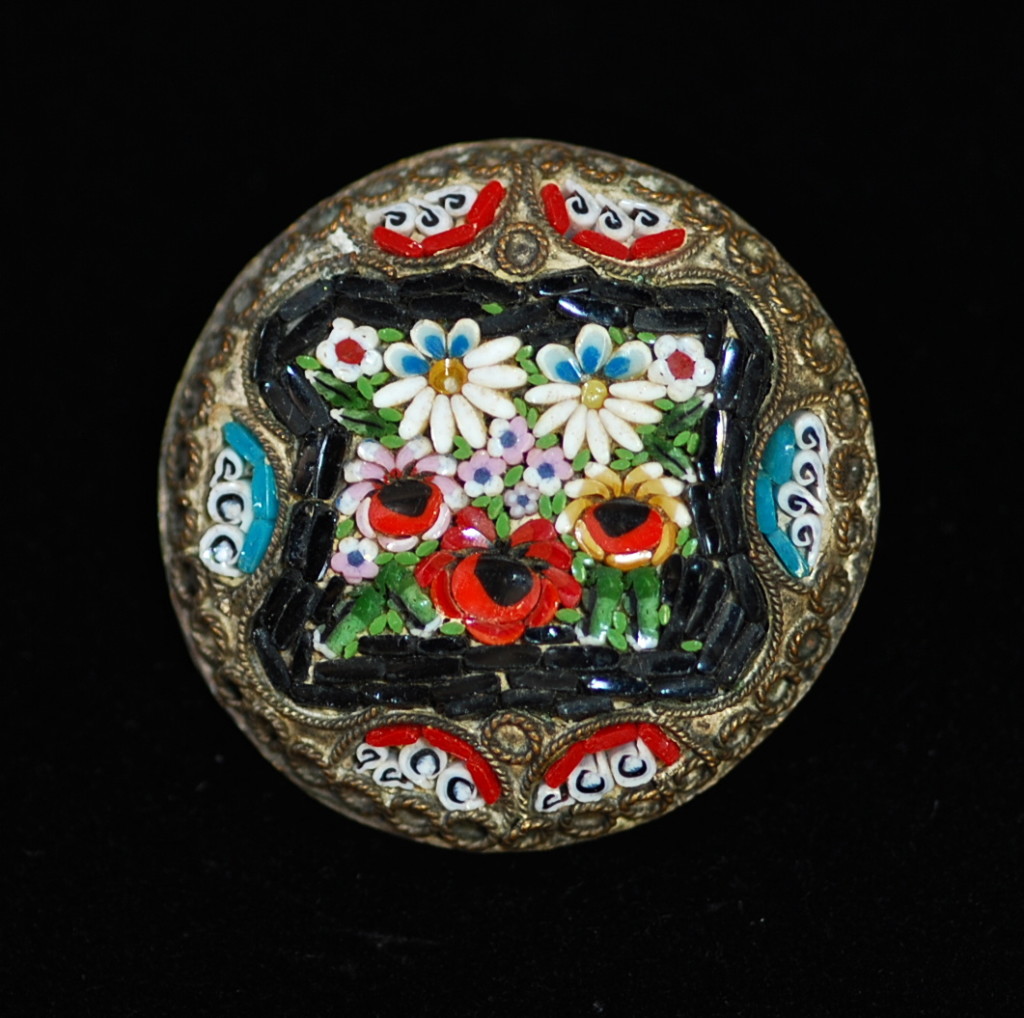
Italian Mico-Mosaic
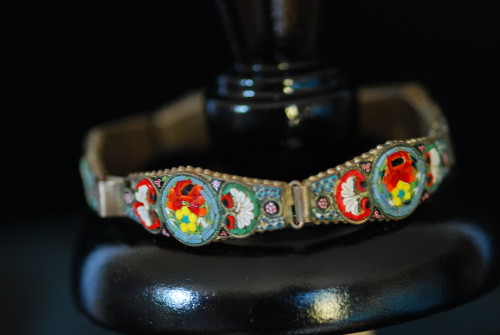
Copyright Valerie J. Hayes and Quiet West Vintage (2015). Unauthorised use and/or duplication of this material without express and written permission from this blog’s author/owner is strictly prohibited. Excerpts and links may be used, provided that full and clear credit is given to Valerie J. Hayes and Quiet West Vintage with appropriate and specific direction to the original content.
January 2, 2015
| Valerie Hayes
| Health & Wellness, Thoughts & Ideas, View All Articles & Photos
Happy New Year to all, with much gratitude toward loved ones. I always feel a sense of relief when we get into January, mostly for the longer days and anticipation of warmer weather.
Some of the most fascinating research is being done in the field of embodied cognition. It is still in the early stages of study and somewhat vague in definition, but nonetheless it represents a leap of understanding in cognitive science. My interpretation of what it means, is that instead of our brains being locked away inside our heads with only our unique perceptions and mental representations to stimulate behavior and solve problems – we actually have cognitive resources that are distributed across our brains, our physical bodies – and our environment.
One of the essential meanings of embodied cognition is that states of the body modify states of the mind. So far, the only real study I have been able to find on clothing and embodied cognition is one involving a white lab coat and the perceptions it creates. That study alone, indicates that what we wear creates a significant impression with regards to the way we feel, as well as to how others perceive us.
With advanced and increasing knowledge about the brain, psychologists and philosophers have delved more and more into the field of embodied cognition and question how words, objects and events are perceived or made meaningful to us. The research so far demonstrates that language comprehension depends on emotion, perception and metaphor. This becomes the primary motivator of our behavior. It is the motivation and resulting coordinated action that links us to other people. The most compelling aspect of the linguistic component, is the extensive use of metaphor. Every conceptual metaphor from a “couch potato” to looking and feeling like a “million bucks” or saying it “fits like a glove” to a “wolf in sheep’s clothing” provide us with examples of metaphors that describe concepts, some of which are highly complex and abstract.
What the increasing awareness and knowledge regarding embodied cognition brings to the fashion industry, is that if our physical bodies share in our cognitive processing, perception and interactions – then the way we dress and care for our physical bodies is far more important than mere vanity or practicality. It is an outward representation of at least some of the elements of cognition. The notion of intellectualizing fashion is not based on whim or fancy, but on a much wider and more holistic framework than has been previously acknowledged.
Just as the medical world began to recognize the need to treat the whole person (body) in the seventies, we now have that holistic element extending to our brain, mind, body, outward appearance, emotions, perceptions – and the environment. This means that if we are able to “pull it together” – it could be what brings us closer to self-actualization and the authentic self – which is the opposite of narcissism and mere vanity.
The food for thought that I leave with you for the New Year – is that all of our potential is wrapped up in embodied cognition – to enigmatically include many facets of existence that are outside and well beyond our concept of self.
Copyright Valerie J. Hayes and Quiet West Vintage (2015). Unauthorised use and/or duplication of this material without express and written permission from this blog’s author/owner is strictly prohibited. Excerpts and links may be used, provided that full and clear credit is given to Valerie J. Hayes and Quiet West Vintage with appropriate and specific direction to the original content.
December 10, 2014
| Valerie Hayes
| View All Articles & Photos, Vintage Outfits
From face veils to fedoras and super sultry dresses, the film noir look is full of high tension sex appeal, intrigue and mystery. This post features an outfit that has the film noir allure with sparkles that outline your shape – even in the shadows. It is a 1950’s silver metallic jacquard weave, shimmeringly provocative, slinky party dress. The hat is a simple beaded skull cap with a silver trimmed flower and feathered hair clip attached to it. Add your jewels and stilettos – and you will be sure to leave the party without a backward glance!
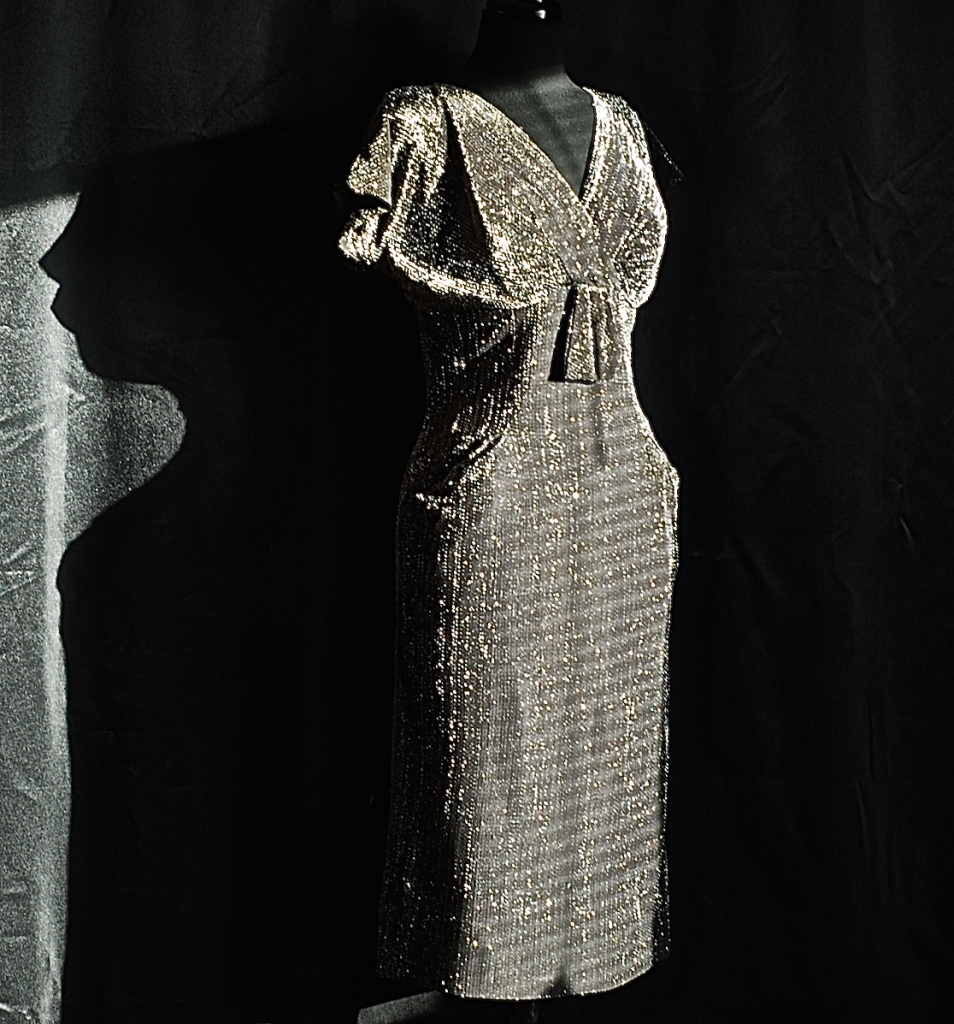
Film Noir Without A Backward Glance
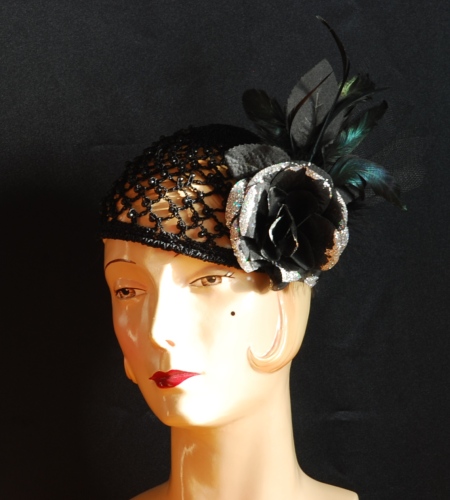
December 3, 2014
| Valerie Hayes
| View All Articles & Photos, Vintage Outfits
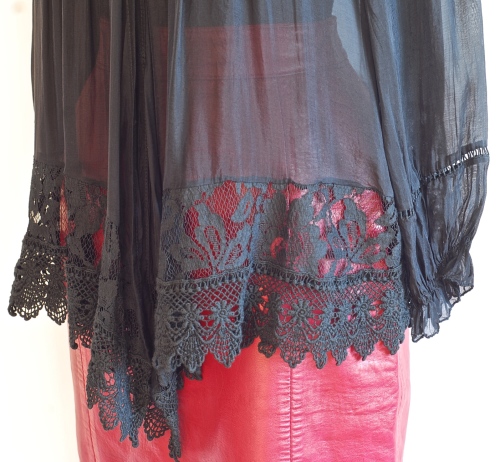
Silk and Viscose Lace Blouse – Made in Italy. Vintage Leather Skirt by The Olde Hide House – Acton
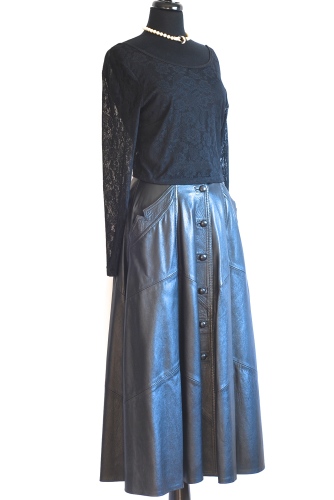
Top Traciel – Made in USA. Leather Flared Skirt by Pentik Select – Made in Italy
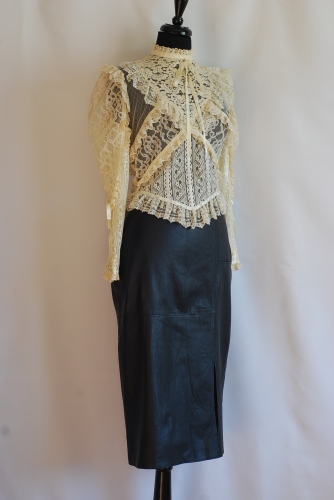
Vintage Mixed Lace Blouse. Leather Pencil Skirt by Emanuel Zoo – Made in Italy
November 28, 2014
| Valerie Hayes
| Business & Web Development, Fashion Research, View All Articles & Photos
In the eighties and nineties I organized a few vintage fashion shows and did some basic research in order to do the narration for each show. What I learned then, is that fashion has traditionally had a thirty-five year cycle, where the styles of one era would be revived and re-created again, with some innovative variations. Because of this, there were distinctive things that “dated” clothing. For example, in the seventies, we wore bell-bottoms that were so wide and long that the bottoms became frayed and you tripped over them while crossing the street. Or, when those high-rise jeans that fit snugly around your waist went to the other extreme, followed by several years with clothing racks full of jeans and slacks that were so low in the rise that they had a one-inch long zipper. If you wore the style from a previous decade – it was ridiculed. But, let’s face it – some styles are ridiculous. Absurd actually. But, it’s not necessarily their age that makes them absurd.
Sometime into the eighties the fashion cycle began to shrink. During that time the frequency of the changes in fashion began to increase. The thirty-five year cycle went to twenty years, then ten, and early in the millennium, I recall reading that it had shrunk to seven years. This rapid cycling has become known as fast fashion. The mass produced disposable end of the clothing market has been churning out vintage inspired trends faster than we can follow. The underlying reason for this is that constantly changing trends and low prices will drive volume sales and increase the fashion industries profits. But ironically, what it has also done, is to increase individual freedom and create a much broader horizon for individual style and choice. Sort of an “anything goes” scenario that is a fairly new concept in the scope of fashion history. Therefore, this rapid spin of fast fashion might be losing its point, or its sustainability, as others predicted would happen years ago. On the up side, it has resulted in a significant blurring of the line between what’s in and what’s not in style. Since things so often swing to extremes, and fast fashion is filling up the landfills – maybe now we can swing back to the foundational quality and garment care that our wiser forefathers embraced.
To be rational about all the vintage buzz, a high percentage of vintage clothing is not worth keeping or copying. Just because it is vintage doesn’t mean it has style. And just because it is second hand doesn’t mean it is vintage. When clothing is advertised as vintage inspired or vintage styled – it is simply a capitalization of a now popular buzz-word, in order to increase the sales of their mass produced clothing. The other thing to be aware of – is that a percentage of authentic vintage clothing is made with exceptional style, quality of workmanship and material – yet it may not have a designer label. I know this statement seemingly contradicts a previous post I wrote about licensing brands, fakes and knock-offs, but in that case, the reference is to designer and contemporary clothing. Vintage has a different knowledge base regarding fabrics and sewing techniques, with some unusual quirks in the placement and types of labels used. Some of the beautiful and professionally made dresses from the thirties, forties and fifties don’t have designer labels.
There will always be trends. I believe the trend that is developing now is one of a much more sophisticated consumer. One who is inclined to research, to be more environmentally aware – and will wear what suits her personality and body type without being swayed so much by the spin surrounding fashion trends. Perhaps another off the grid trend is a reduced willingness to sacrifice comfort or mobility for style. After all, it’s pretty difficult to look effortlessly chic with a grimace on your face, or by tripping over twenty-four inch wide bell-bottoms. The truly fashion savvy women will seek both form and function – without sacrificing too much of either.
Copyright Valerie J. Hayes and Quiet West Vintage (2014). Unauthorised use and/or duplication of this material without express and written permission from this blog’s author/owner is strictly prohibited. Excerpts and links may be used, provided that full and clear credit is given to Valerie J. Hayes and Quiet West Vintage with appropriate and specific direction to the original content.
November 17, 2014
| Valerie Hayes
| Poetry By Valerie Hayes, Thoughts & Ideas, View All Articles & Photos
Fallen Nature
Calm and quiet as a devoted monk,
Bows strong and steady from his trunk.
For a century or more he stood –
And cast strange shadows in the woods.
Age and loyalty – Twist and hide,
Invaluable rings he wore inside.
Arthritis creeped into every fold –
Kind moss cloaked him from the cold.
Pray for fruit on each gnarled limb
Until the dawn of day deluded him.
He goes unnoticed…
Its been so long
That when he’s gone
Sad mist surrounds ~
Drips dew drops down…
On the tombstone stump –
Deep in the ground.
Valerie Hayes
Copyright Valerie J. Hayes and Quiet West Vintage (2014). Unauthorised use and/or duplication of this material without express and written permission from this blog’s author/owner is strictly prohibited. Excerpts and links may be used, provided that full and clear credit is given to Valerie J. Hayes and Quiet West Vintage with appropriate and specific direction to the original content.
November 5, 2014
| Valerie Hayes
| Textile Art, View All Articles & Photos
For those of us who love the intrigue and beauty of vintage fashion, it often extends beyond the way we dress to the way we decorate our homes. The linens, lace, artwork, and furniture are part of the quintessential blend of vintage expression and reflection. The use of textiles with the varied patterns, stained glass to catch the changing light, hand made Persian carpets, and fine hand-painted Asian porcelain are among my favourite things for home decor. Whatever attracts us to a bygone era, whether it is a form of escapism, or the realization that some things, especially things that are created as a labor of love – are worth our appreciation and care.
Creative efforts generally produce positive values. Every creative endeavour that has lasting value requires intensive effort. For some, it is an immeasurable effort that may never bring recognition to the individual in his or her lifetime. But, as we all know – creative effort and energy, freely shared, as a labor of love – provides returns that are rich in intrinsic enjoyment and fulfilment. Once an idea is captured and turned into something tangible – it takes on a life of its’ own, often outliving the person who created it.
The best summary of creative effort that I read many years ago, simply stated that “creativity is judged by the number of people who are moved by it.” It brings joy to the individual and has the potential to make a lasting impression. Of all the things I have collected and studied closely, marvelling at the time and attention to detail that went into creating it, I feel gratitude toward whoever made it. It makes me think of the philosophical aspects of materialism and how it paradoxically (in my mind) contrasts and competes with idealism. Because essentially, without idealism – nothing matters.
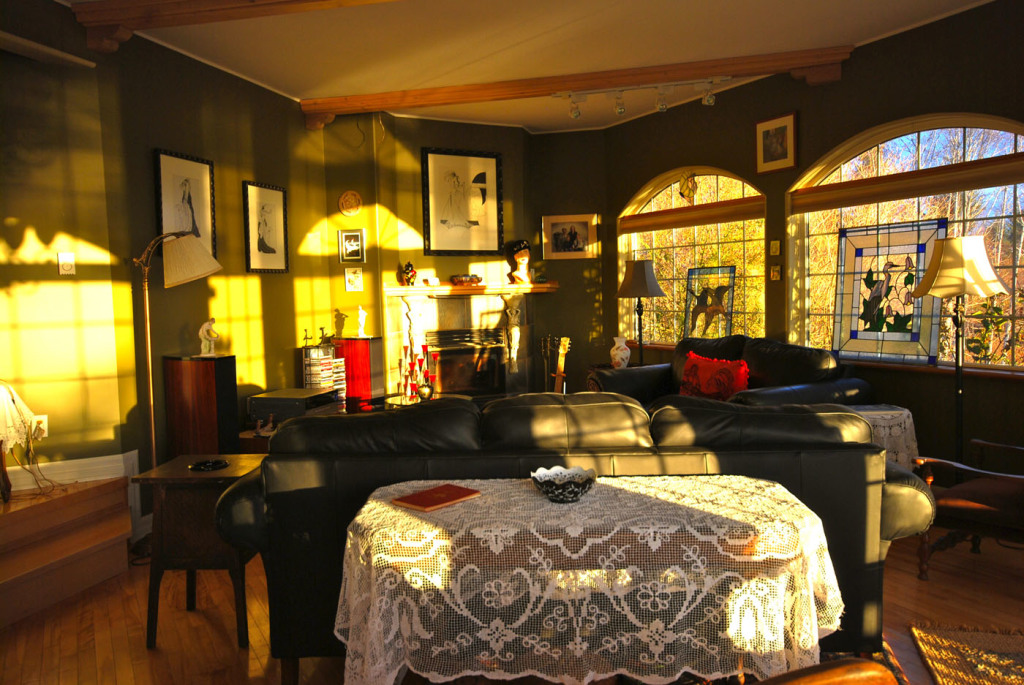
Vintage Reflections In Sunlight & Shadows

Copyright Valerie J. Hayes and Quiet West Vintage (2014). Unauthorised use and/or duplication of this material without express and written permission from this blog’s author/owner is strictly prohibited. Excerpts and links may be used, provided that full and clear credit is given to Valerie J. Hayes and Quiet West Vintage with appropriate and specific direction to the original content.
November 4, 2014
| Valerie Hayes
| Poetry By Valerie Hayes, Thoughts & Ideas, Valerie Hayes, View All Articles & Photos
Silk & Ruin
Silk & Ruin
Runs so Fast ~
Always Cruisin’
Snags the Past —
Goes Unnoticed
By the Masses…
As Fine Conjecture
Slips About ~
And in Reverse —
It Wears me Out!
Valerie Hayes
Copyright Valerie J. Hayes and Quiet West Vintage (2014). Unauthorised use and/or duplication of this material without express and written permission from this blog’s author/owner is strictly prohibited. Excerpts and links may be used, provided that full and clear credit is given to Valerie J. Hayes and Quiet West Vintage with appropriate and specific direction to the original content.
October 21, 2014
| Valerie Hayes
| Business & Web Development, Designer History, Textile Art, View All Articles & Photos
There are scarves everywhere. Hundreds of them steadily turn up in every thrift store. A high percentage of them are boring. By boring, I mean there is no sensation that is evoked from the fabric. That, combined with a lack of strong visual appeal, is what creates the first impression. As part of the hunt, I have developed some shortcuts, based on the first impression. Although it sounds crazy – I skim the masses and look for a scarf that is alive. Alive with the sensation of the fabric, vibrant colours and an intriguing design. Then I check the hem, labels, corners, and look for signatures.
And sure enough, sooner or later, out of hundreds – one stands out in vibrancy and touch. It feels luxurious and the colors interplay beautifully within the canvas of the design. The edges are hand rolled and hand stitched. Such a scarf, when folded and draped, still captures and blends the components of the design.
To share a few things I have learned about luxury scarves:
Consider the fabric – Natural fabric is the most luxurious. It absorbs and captures the colors more vibrantly than synthetics. Silk and cashmere are also the warmest and softest to wear around your neck.
Consider the design – When laid flat, a scarf is like a canvas. The more colors and complexity, that which embodies detailed and sophisticated artwork – the more luxurious the scarf. The identification of artists among the famous scarf makers like Hermes, is a specialty of its own. What makes a luxury scarf really stand out in my opinion, is the way the fabric drapes and folds, bringing out smaller components of the design, that seem to blend beautifully no matter how you fold, drape or tie it.
Consider the colours – The most expensive scarves have the most number of colours, usually in a dynamic and vibrant range. Similar to offset printing, the more colour, the more expensive it is to set up and run the press.
Consider the finishing – No matter how you fold or tie a scarf, the finishing or edging is apparent. Luxury scarves have hand rolled and hand stitched hems. This complements and frames the scarf with a rounded softness and impeccable corners that do not have loose threads and linear flatness. I have read that it takes a good seamstress at least an hour to hand sew the hem of a scarf. But the time it takes would vary quite a bit, depending on the size of the scarf.
Expanding fashion horizons – Some scarves are truly beautiful works of art. The little bit that I have learned does not delve into the artistry of individual designers too much. But the artistry captures the imagination and makes you realize that it is an entire arena of fine arts, with much to be learned and appreciated.
The first two images in the post feature a silk Hermes scarf by H d’Origny, an artist well known for designing silk ties. He is now in his eighties. The two scarves featured below the Hermes, are scarves that in my opinion, are among the finest examples of luxury scarves. Both are vintage signed Louis Feraud scarves. The others are some more examples of beautiful scarves with interesting designs.
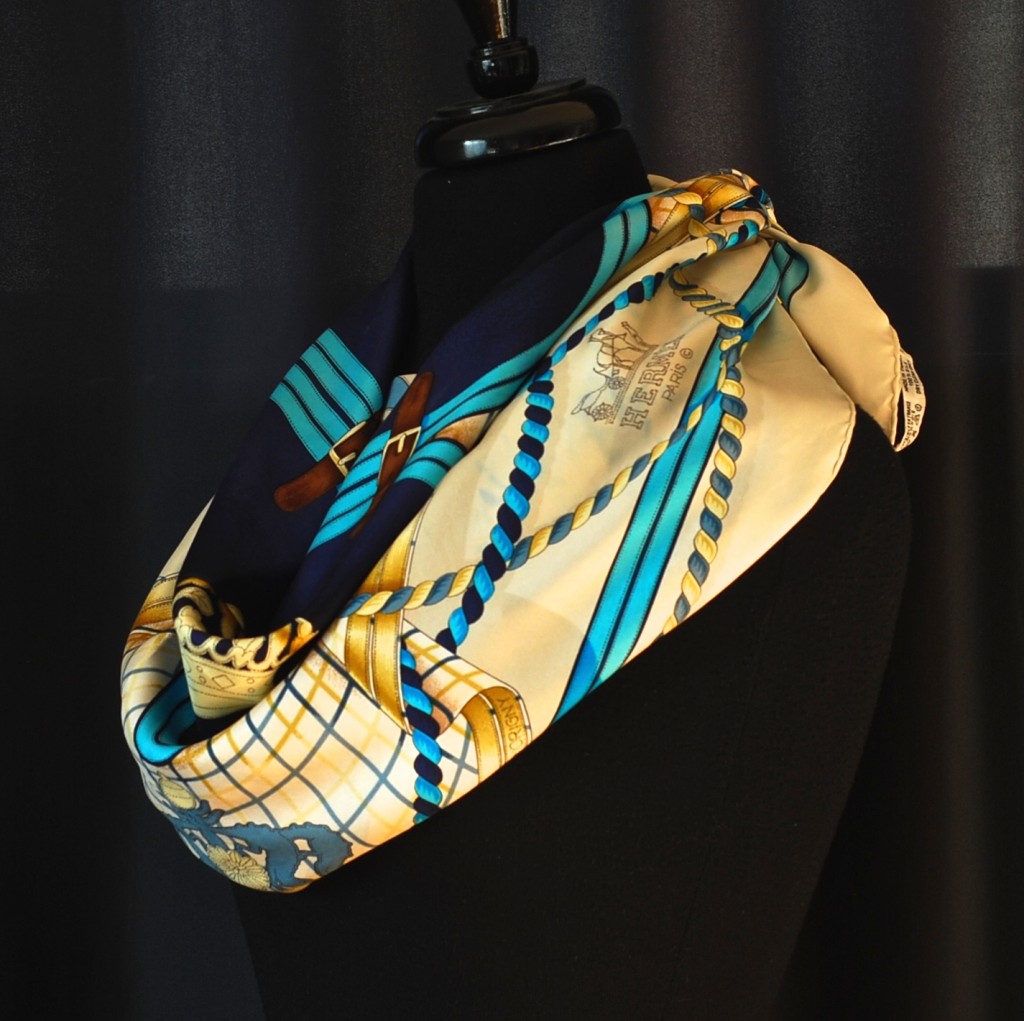
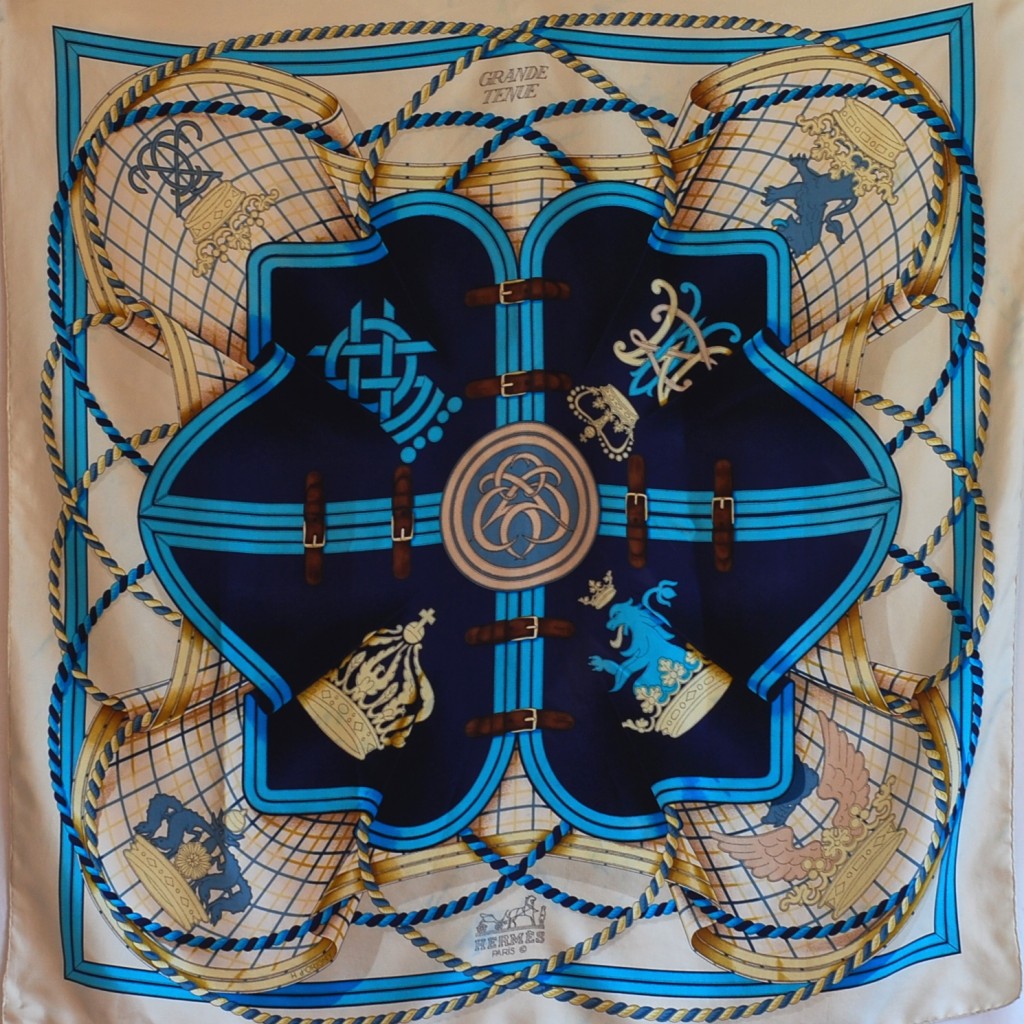
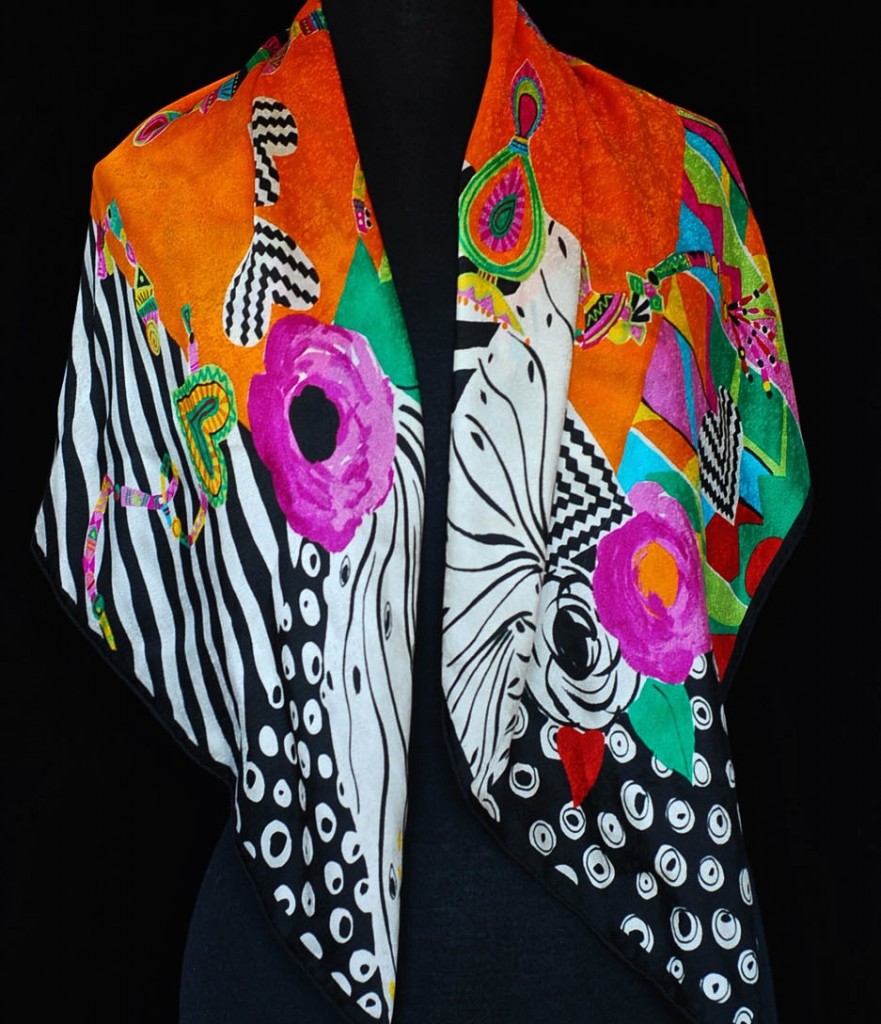
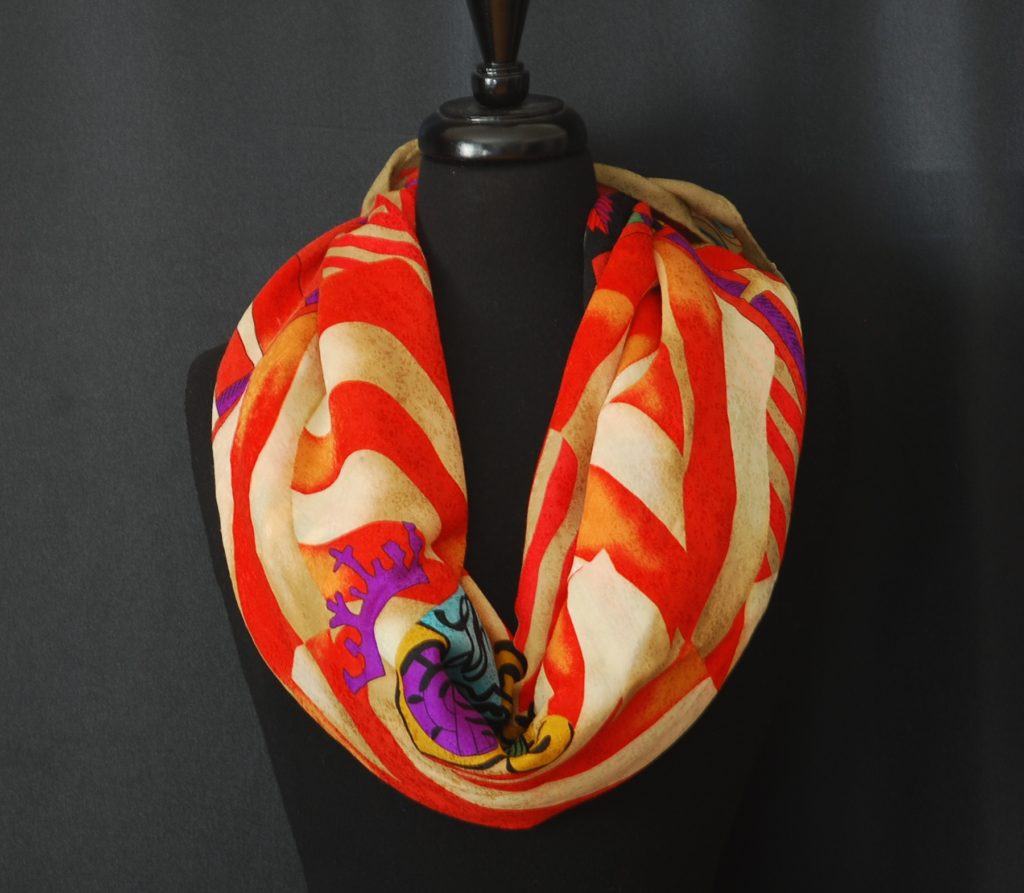
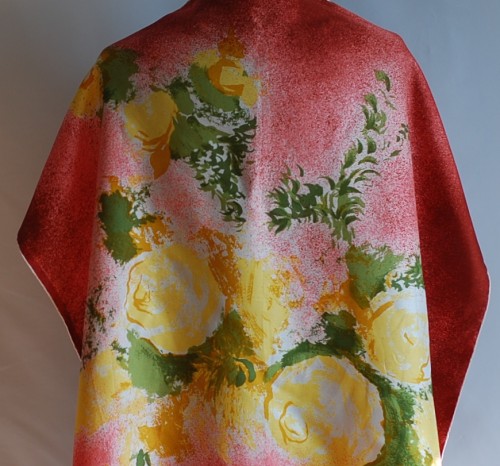
The Impressionistic Image
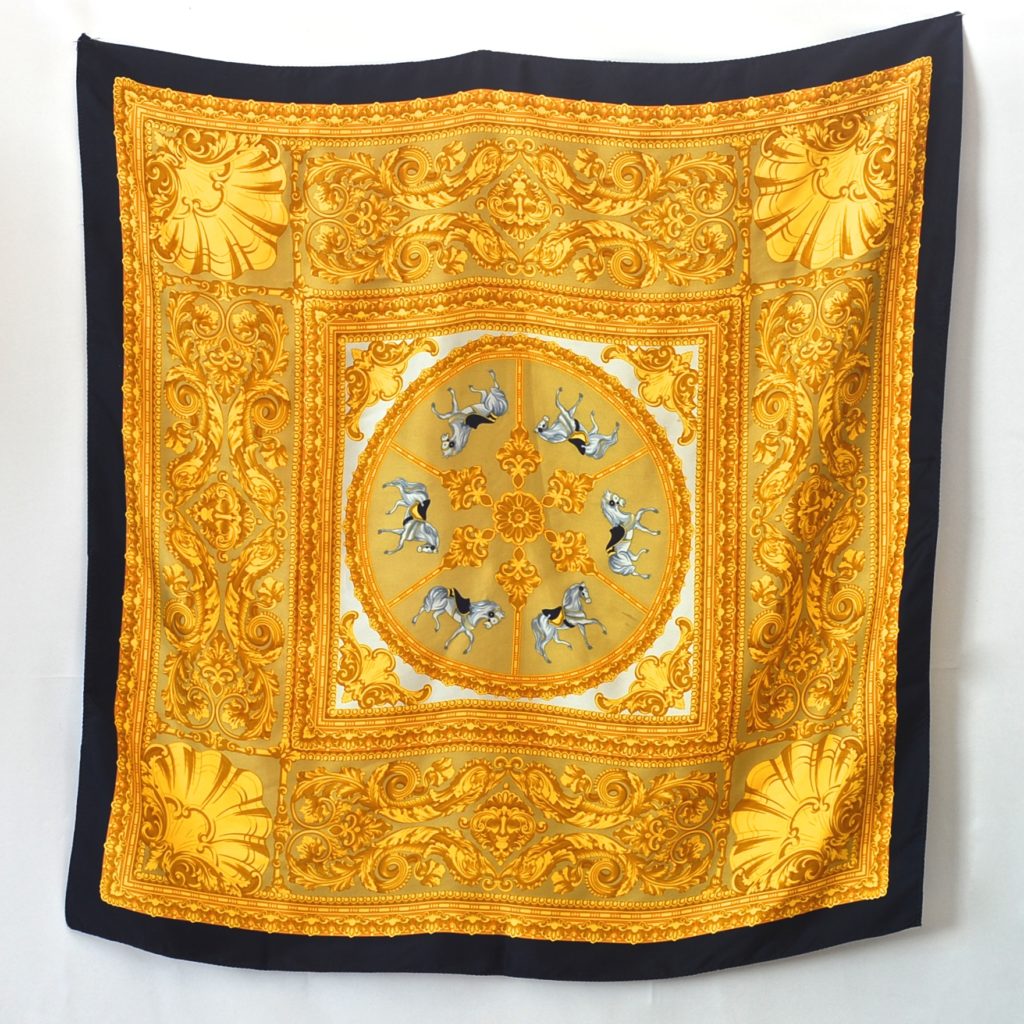
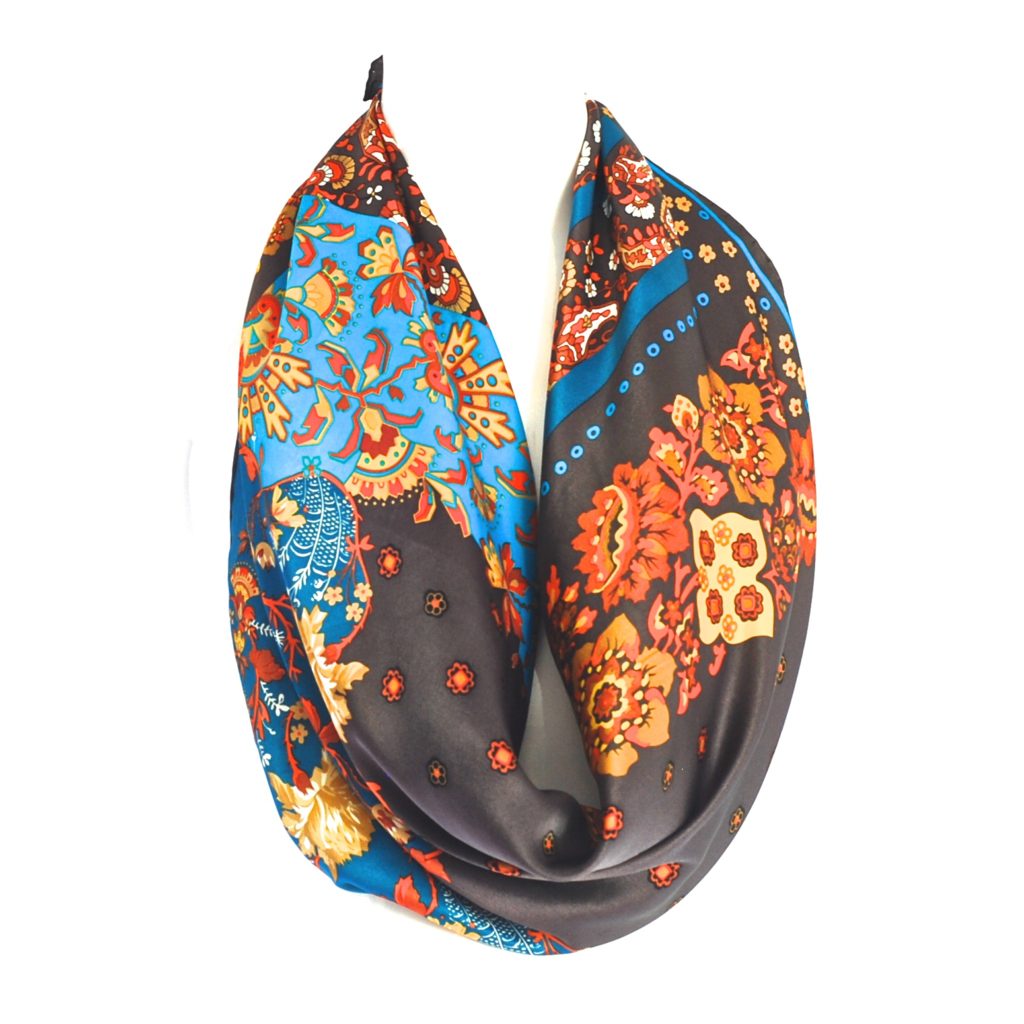
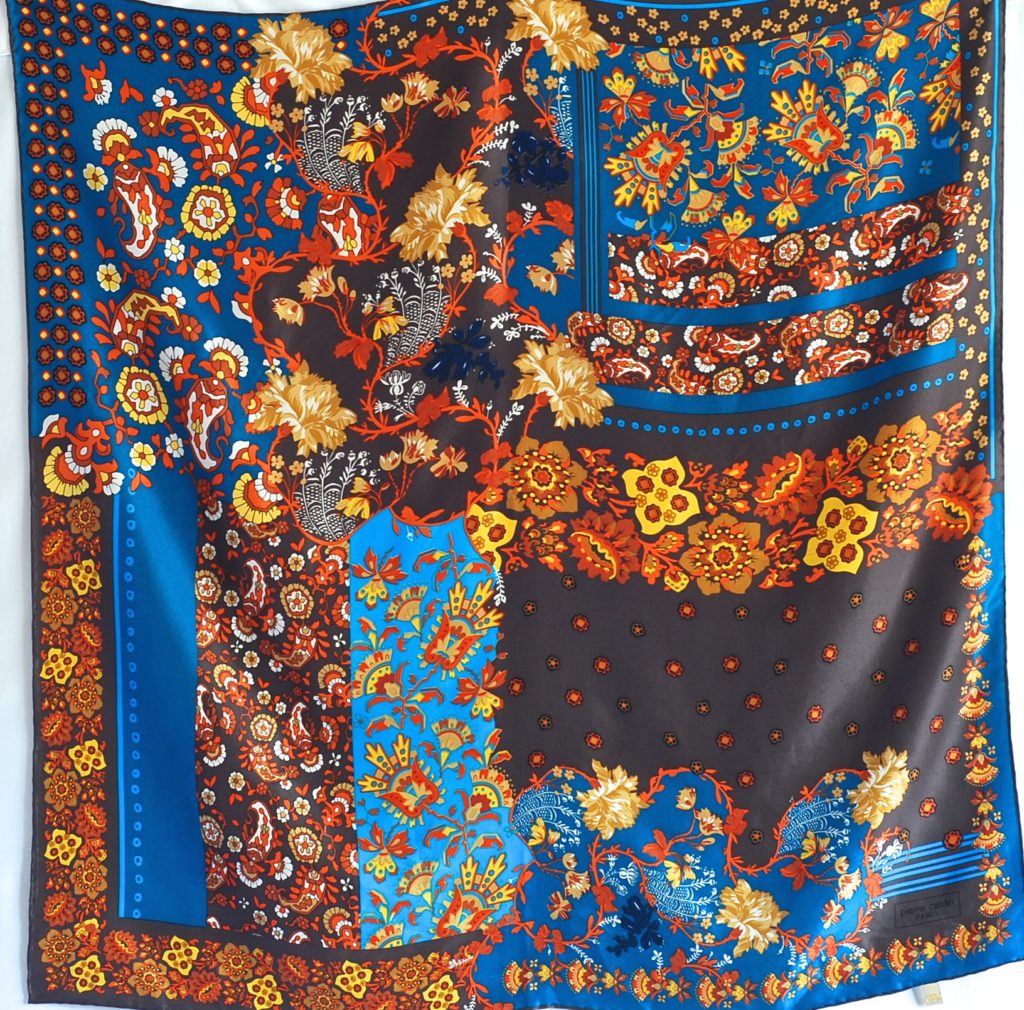
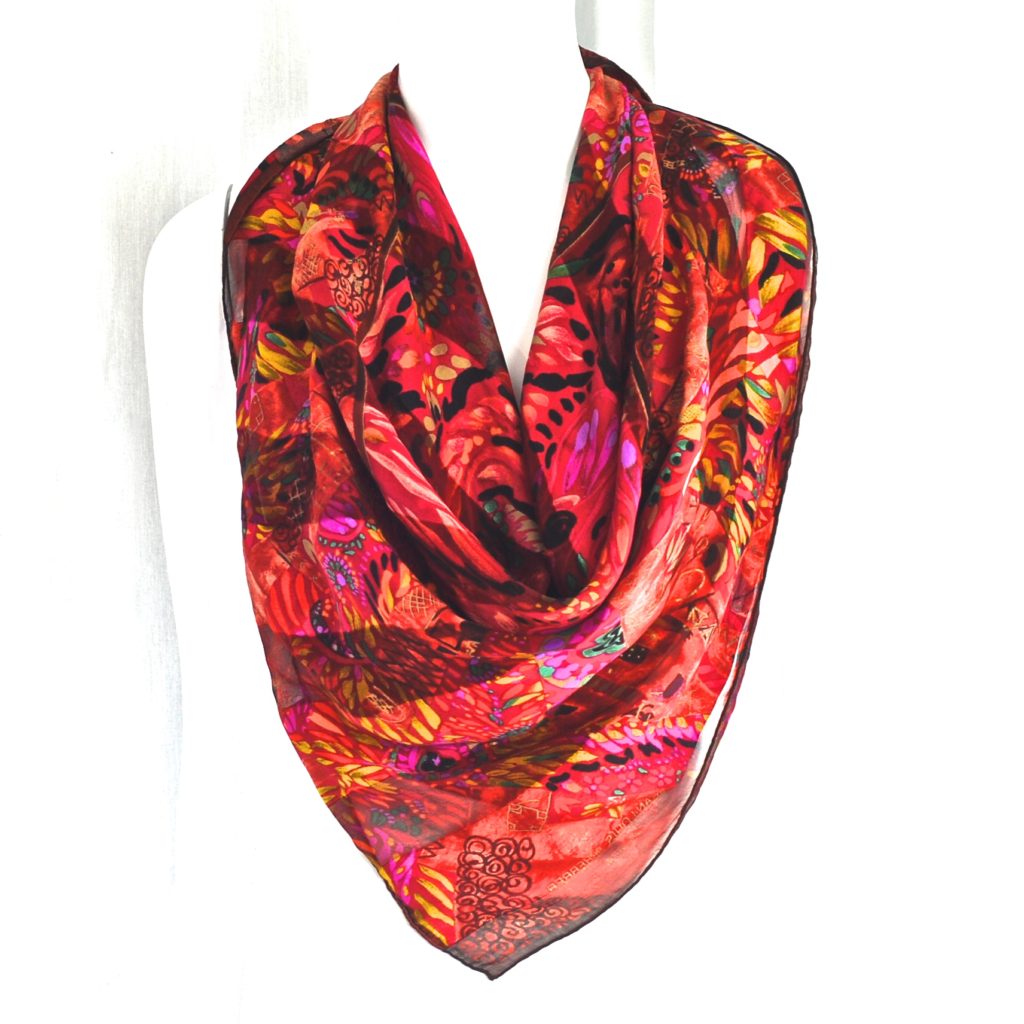
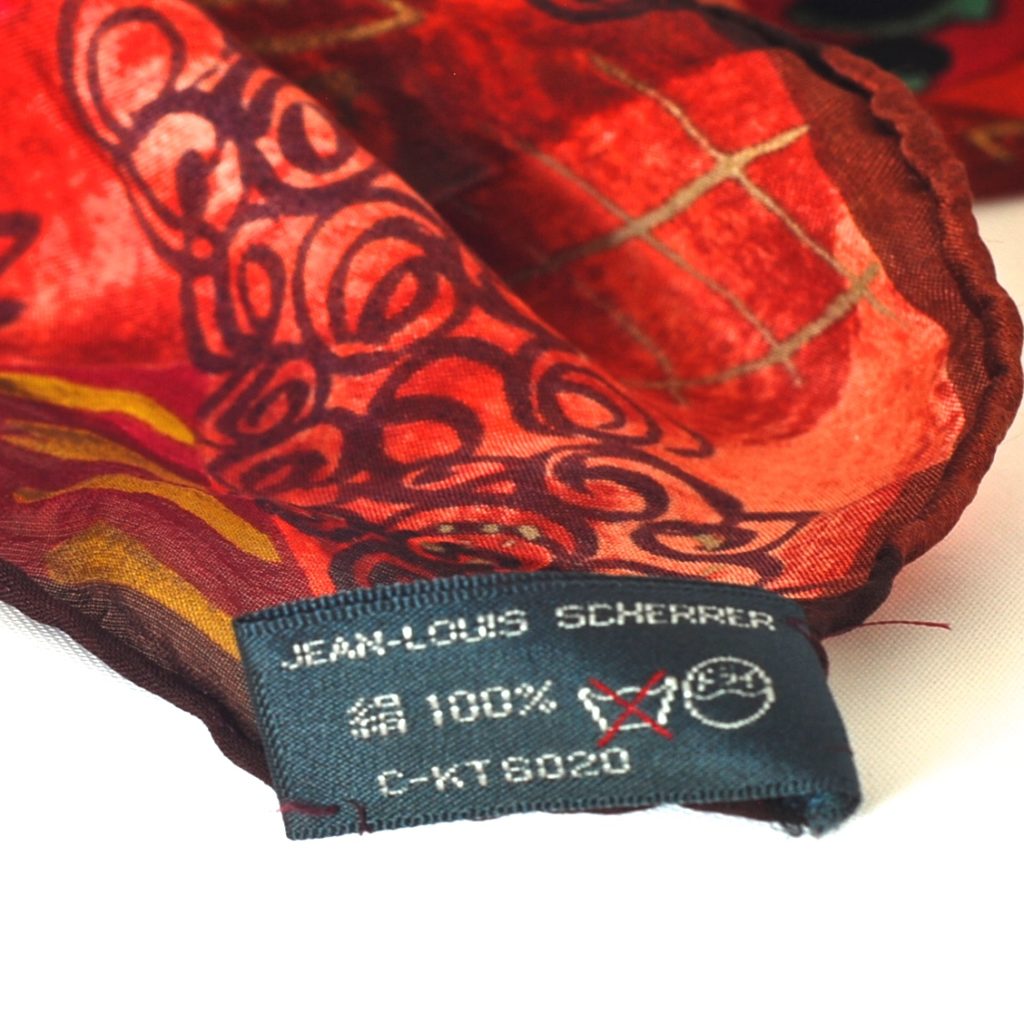
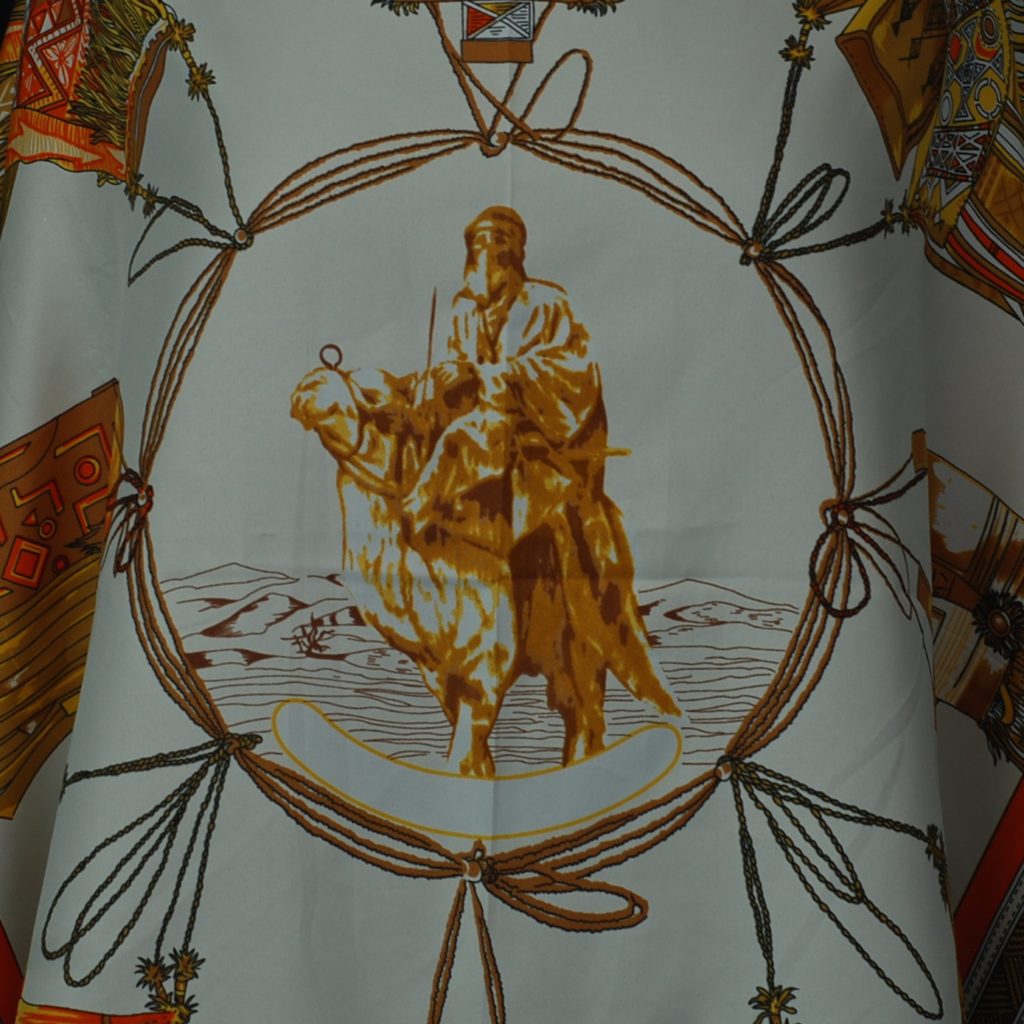
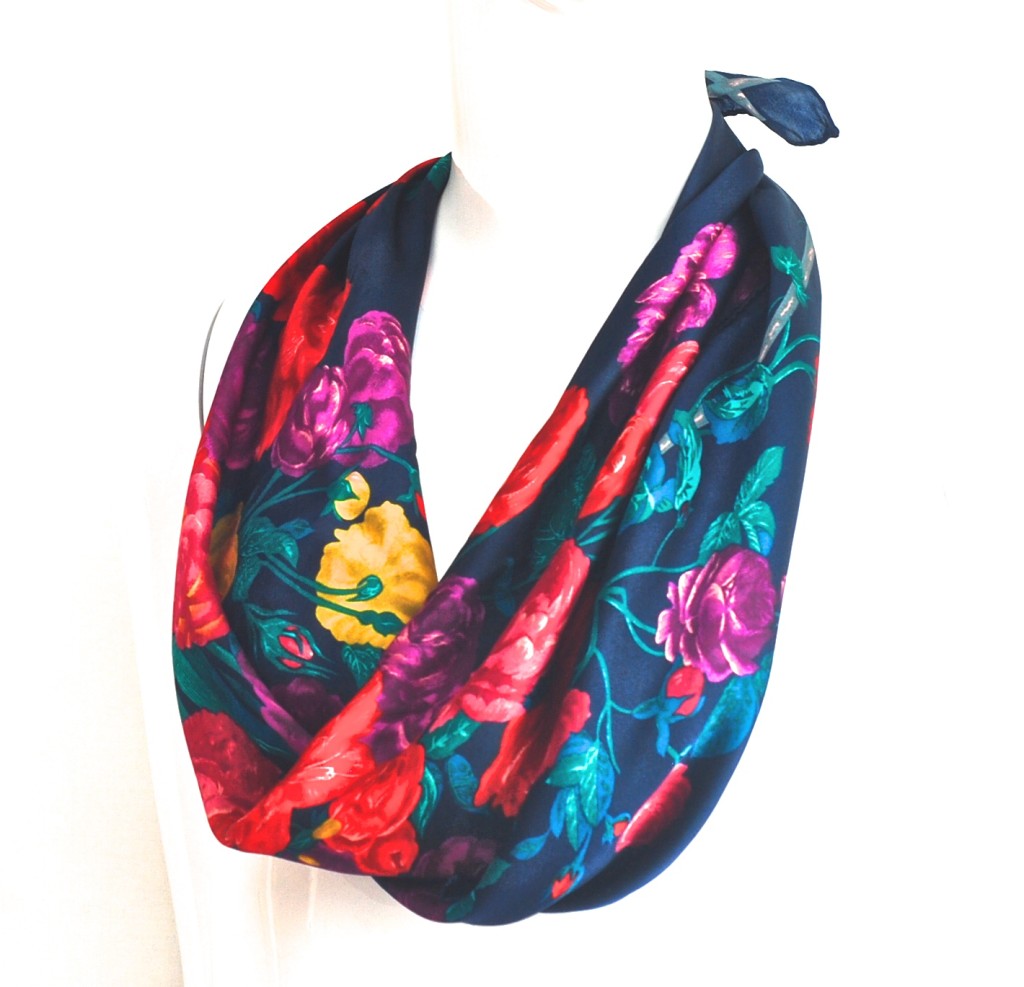
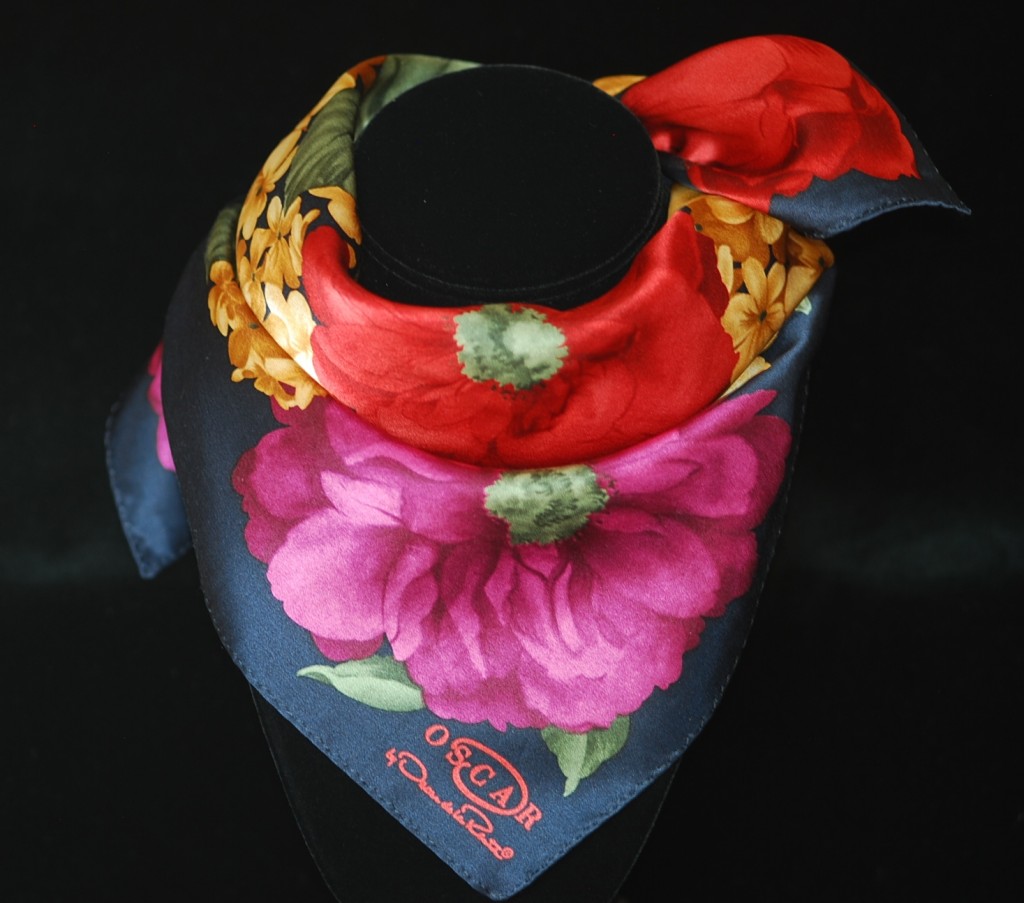
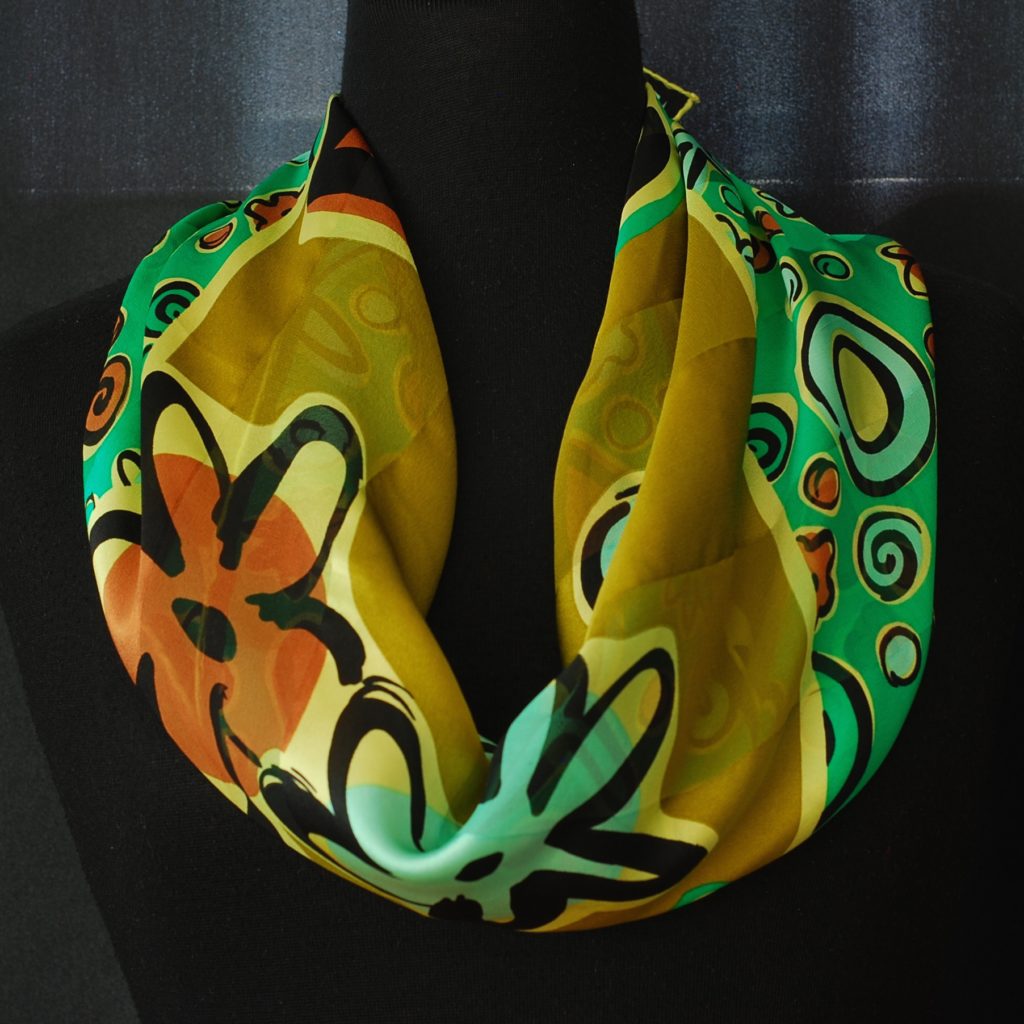
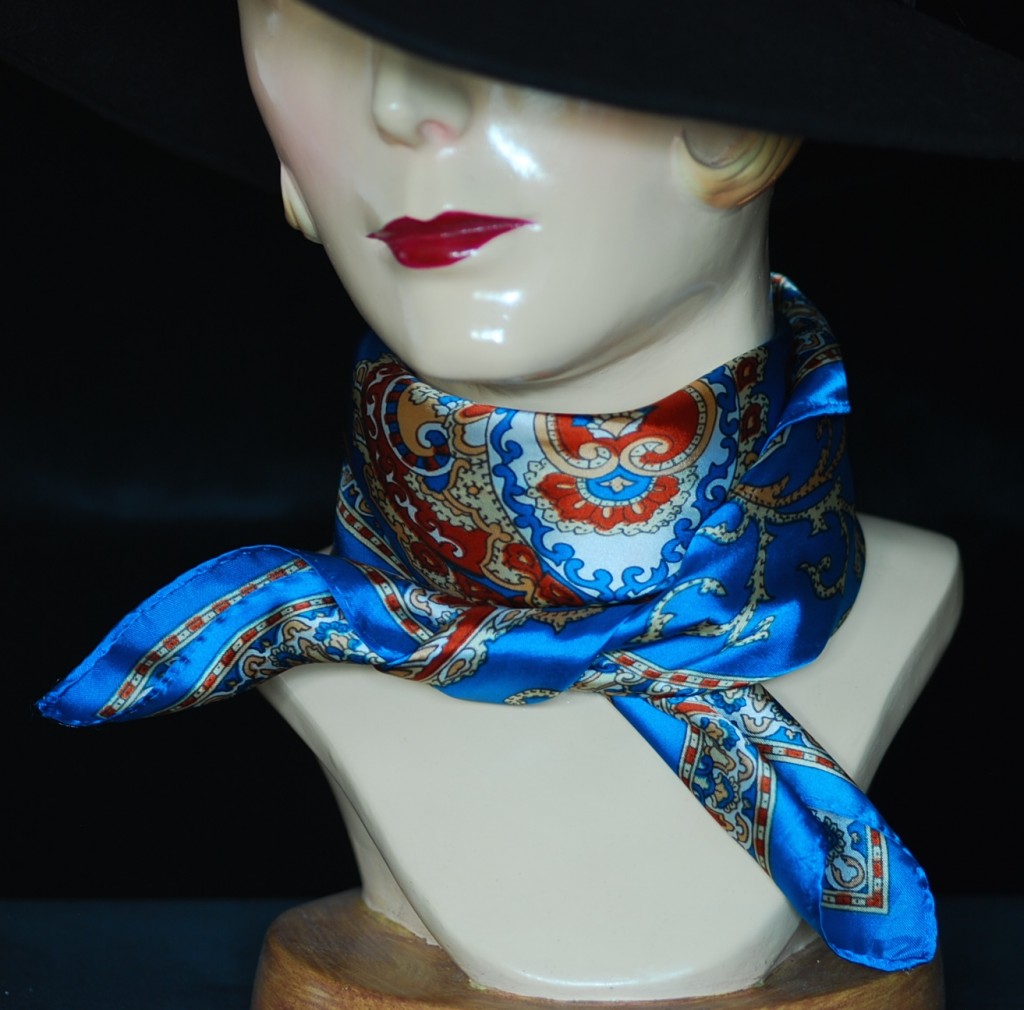
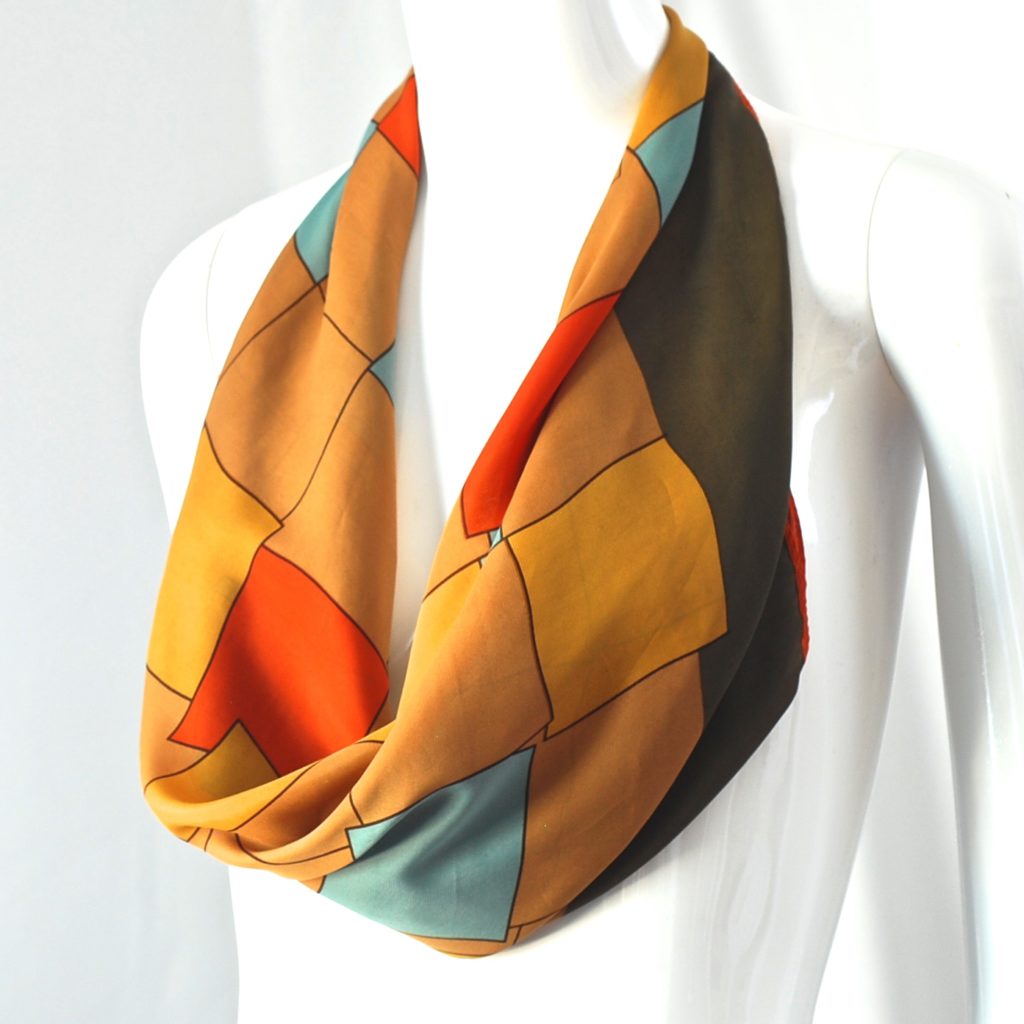
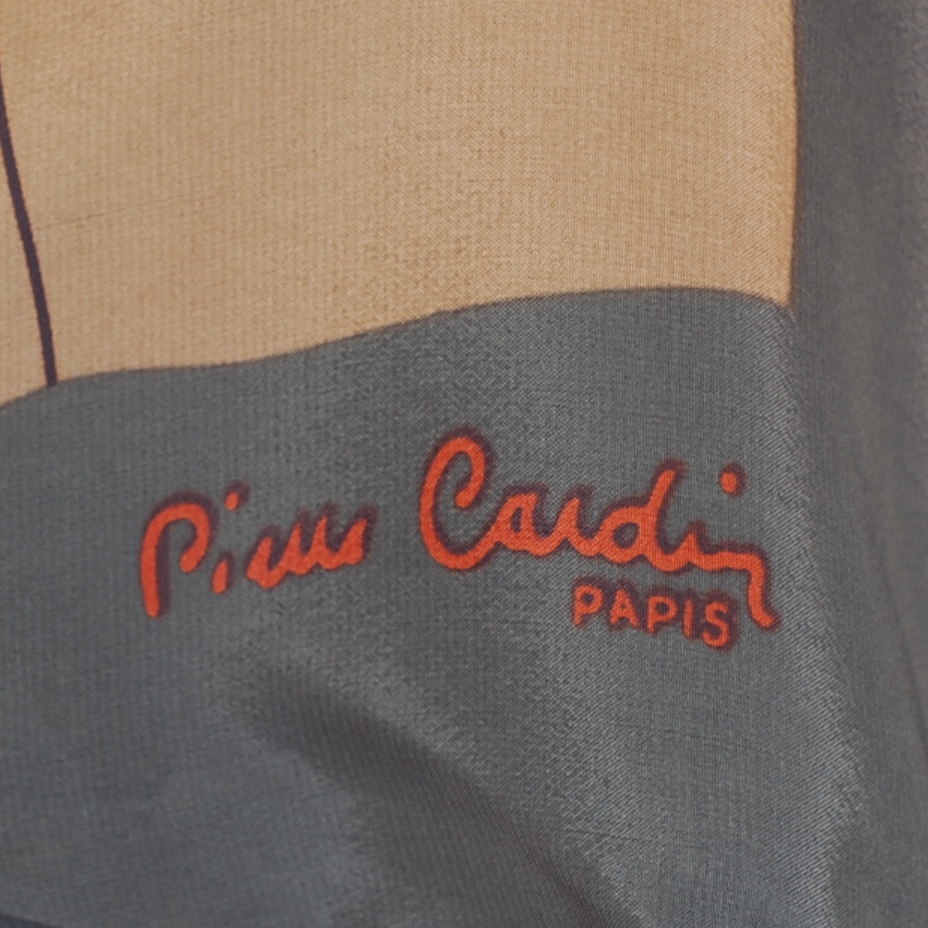
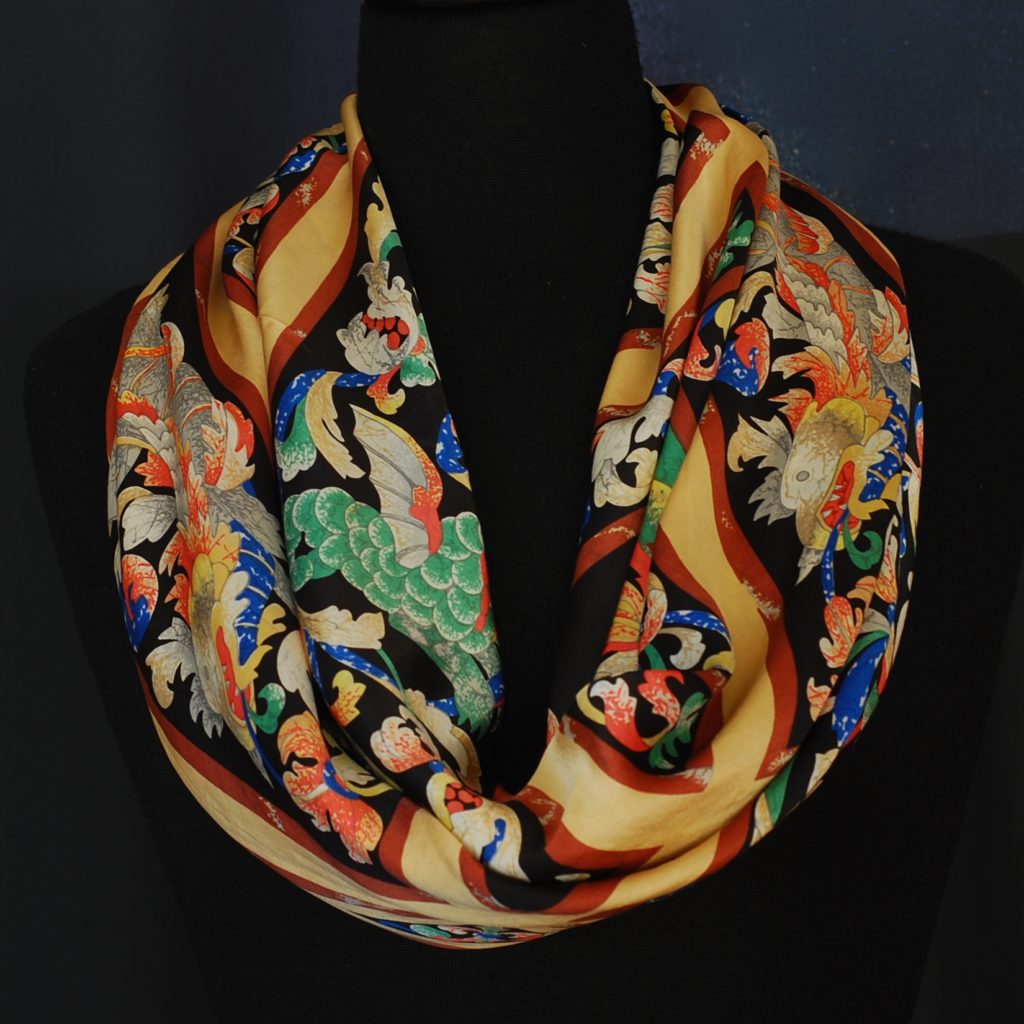
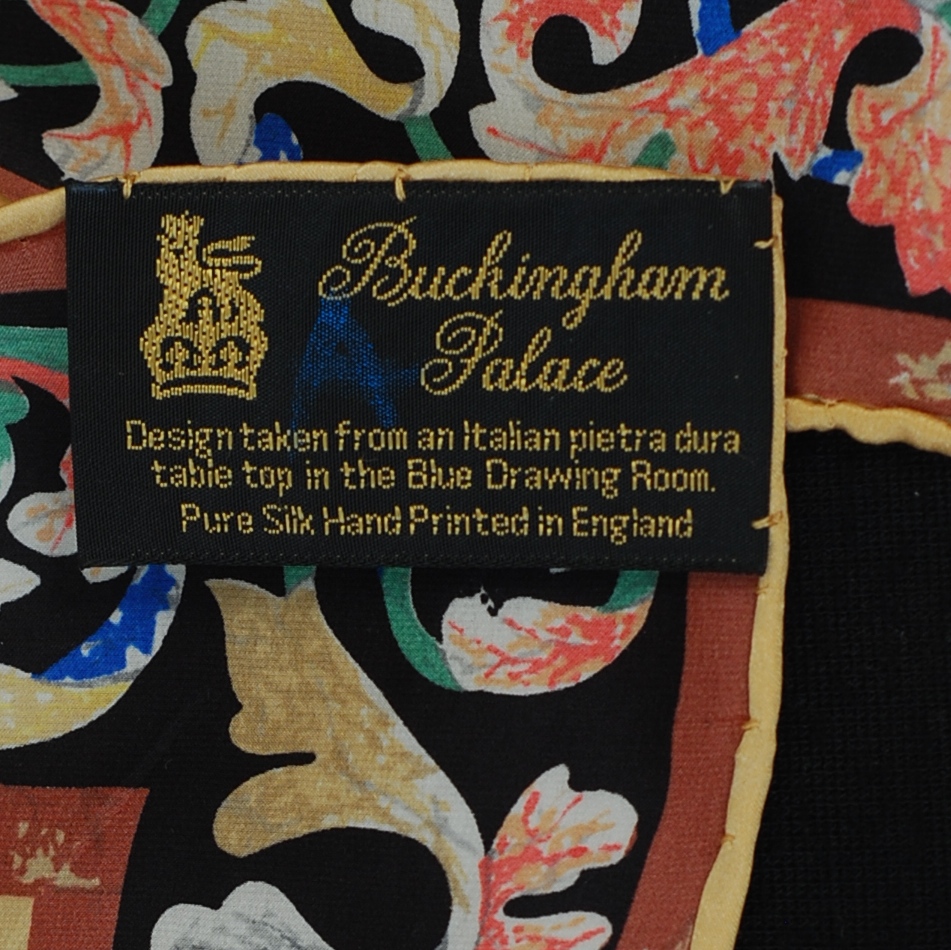 Copyright Valerie J. Hayes and Quiet West Vintage (2014). Unauthorised use and/or duplication of this material without express and written permission from this blog’s author/owner is strictly prohibited. Excerpts and links may be used, provided that full and clear credit is given to Valerie J. Hayes and Quiet West Vintage with appropriate and specific direction to the original content.
Copyright Valerie J. Hayes and Quiet West Vintage (2014). Unauthorised use and/or duplication of this material without express and written permission from this blog’s author/owner is strictly prohibited. Excerpts and links may be used, provided that full and clear credit is given to Valerie J. Hayes and Quiet West Vintage with appropriate and specific direction to the original content.
October 5, 2014
| Valerie Hayes
| Business & Web Development, Fashion Research, View All Articles & Photos, Vintage Outfits
The French without a doubt have the knack for fashion, with an intuitive grasp of what is ephemeral – and an even better grasp of what is timeless. To take it a step further, the style magazines tell us that the trick to developing a Parisian look is to avoid trends and work toward developing a uniquely personal signature look. The individual aesthetic is something that involves a healthy assessment of what looks and feels best, from both an objective and a subjective point of view.
Regardless of trends, true confidence involves choosing styles that flatter your figure and show what makes you distinct. For some, knee length pencil skirts look fantastic. Others look and feel better in A-line or pleated skirts. In general, the Parisian style has its foundation in quality staple items and a neutral palette. When choosing staple garments such as skirt styles, the fit is most important. Adding some French fashion pieces to your wardrobe, that are tailored to your own individual style and figure – will quite possibly become favorite wardrobe staples for many years to come. Timeless!
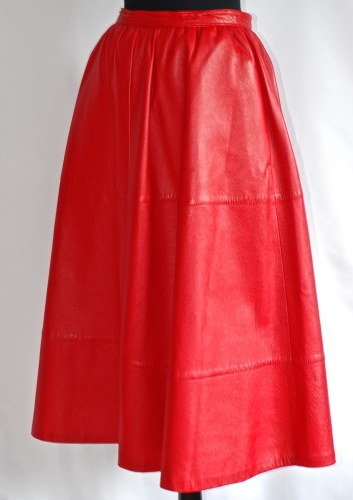
Philippe Salvet
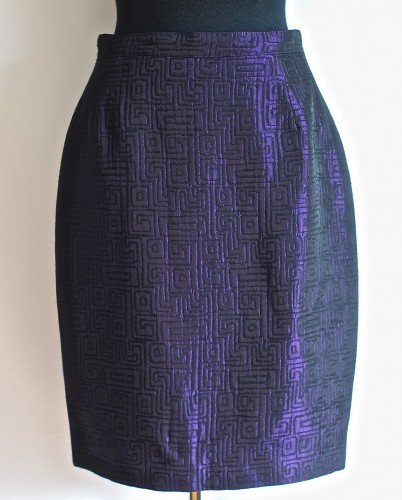
M Daquin
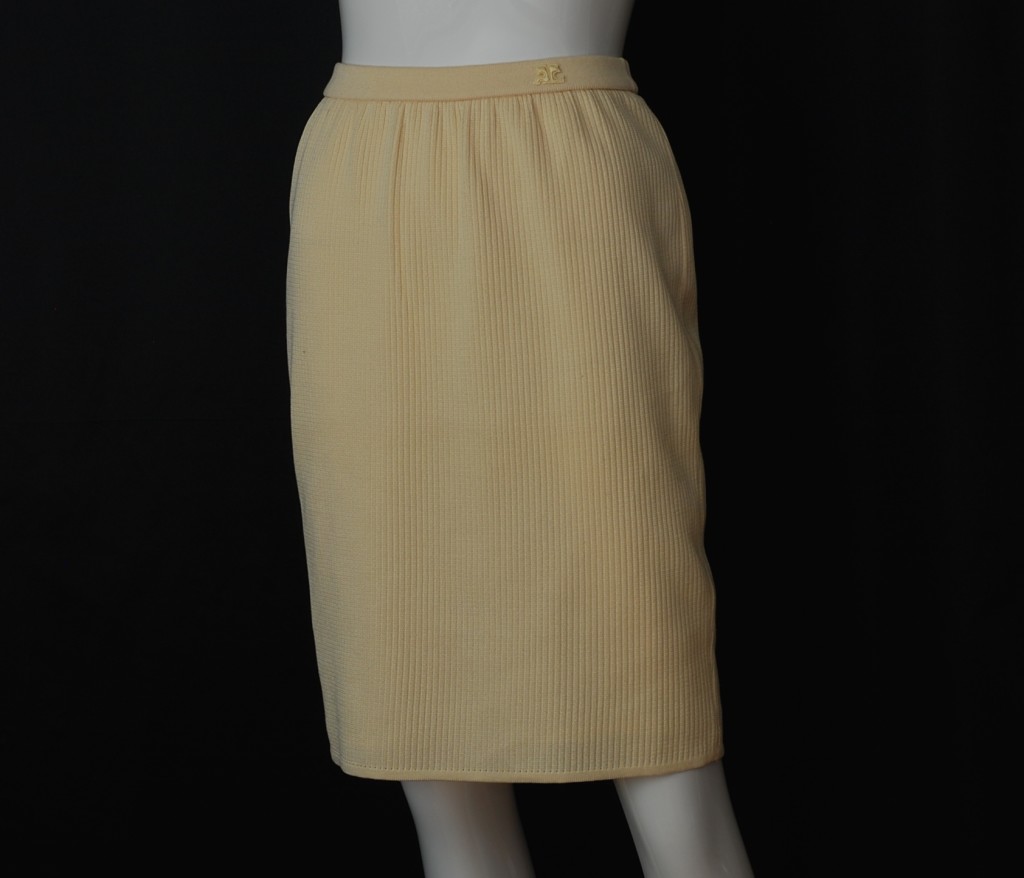
Courreges
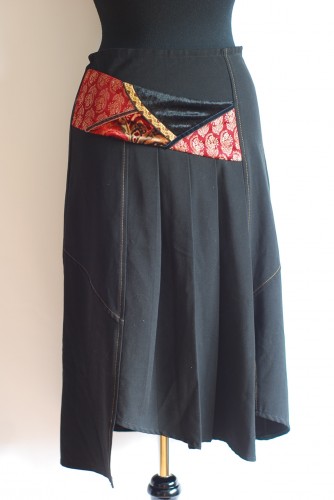
It’s By A.A
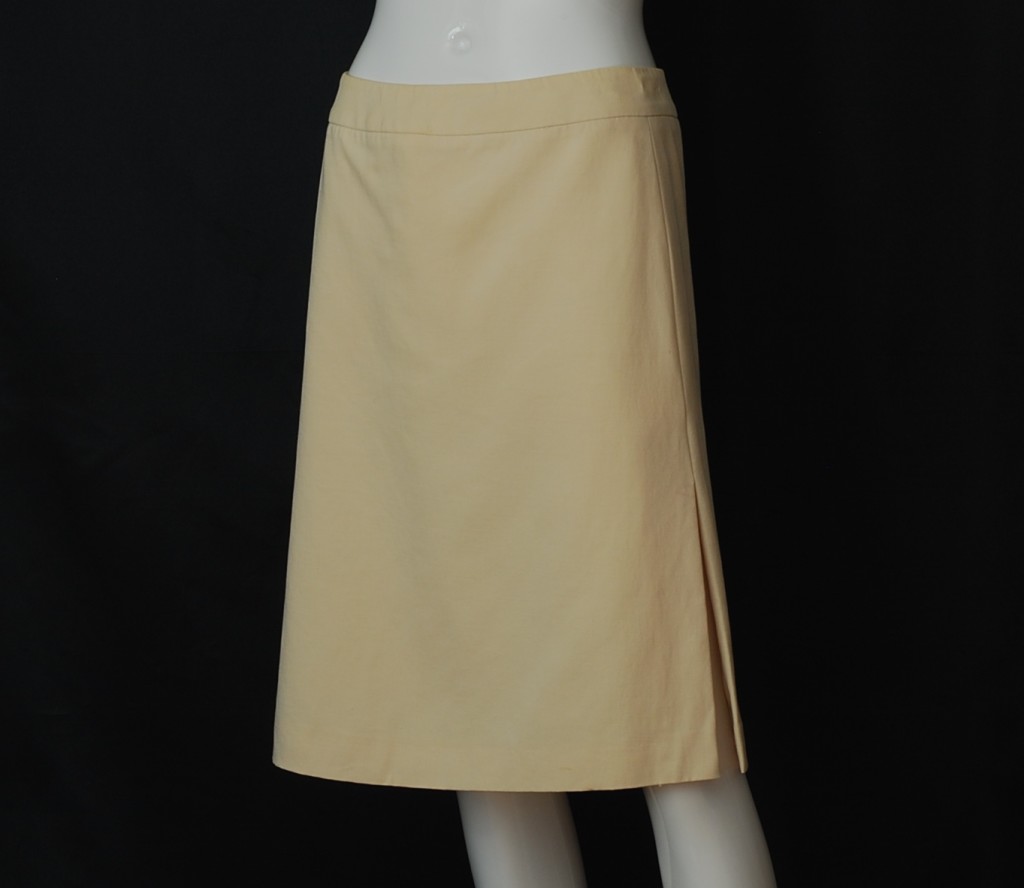
Lanvin
Copyright Valerie J. Hayes and Quiet West Vintage (2014). Unauthorised use and/or duplication of this material without express and written permission from this blog’s author/owner is strictly prohibited. Excerpts and links may be used, provided that full and clear credit is given to Valerie J. Hayes and Quiet West Vintage with appropriate and specific direction to the original content.
September 27, 2014
| Valerie Hayes
| Business & Web Development, Designer History, Fashion Research, View All Articles & Photos
The fashion industry is a complex one, increasingly so as time goes on, since both the licensed brands and the fakes are outsourced and mass-produced in China. If the brand has a legitimate licensing agreement, then it can be argued that the item is legally not a fake. Therefore how do you tell what is fake and what is not on these high-ticket items? Do you stop to google the corporate history, bankruptcies and mergers before you buy that Armani or Fendi blazer? In a sense, mass produced luxury brand is an oxymoron. There is a fundamental contradiction when it comes to value.
The changes in the fashion industry since the nineties or so has been staggering. One of the biggest changes is the upsurge of luxury brand outsourcing. I believe that the mass produced licensed brands should not be passed off as anything other than mass-produced and should be priced accordingly. The notion that a blazer that is mass produced in China is in the same price range as a one-off blazer made in Italy, France or Germany (with attention to detail, hand stitching and quality fabric), just because of a licensing agreement – is not fair to the consumer. The design is not everything. The fabric, workmanship and country of origin do matter.
As an example, a vintage Fendi blazer is made of 100% wool, has hand stitched trim and is very well constructed. It has all labels including where it was made. In contrast, a contemporary Fendi blazer that is a more recent purchase, has a nice style – but it is flimsy, a polyester blend. It has the Fendi label inside the jacket but no tags to indicate where it was made.
For those who are familiar with changes in the clothing labels over the past few decades, or with vintage clothing, you will be familiar with some of the early union labels. The American International Ladies’ Garment Workers’ Union (ILGWU) was formed in 1900 to protect the almost all female working population from being exploited in sweatshop factories in North America. Canadian clothing from 1968 to 1984 also has the union label. These union labels are very valuable in dating vintage clothing. They also signify the North American history of the recognition of fundamental economic rights of the women and children in “sweatshop factories” – garment workers who had been working under conditions of slave labour. It was part of the battle for women’s rights in general. This is an example of what a union label looks like. It is often found in the waist or side seam of a garment.

Licensing luxury brand names is a goldmine for the licensor. But, licensed and mass produced luxury brand is not the same as the original brand. In my opinion, the country of origin – where the item was manufactured – should be a tag that is required on all garments. That way, a licensed brand can be easily identified and the consumer can decide if it is worth it. If an item is manufactured without such a tag – such as the newer Fendi blazer that I described – it does not have the quality, workmanship or label to indicate where it was made. In my opinion, that Fendi blazer is worth far less, and even in the absence of a country of origin label, it would not be honest to pretend that it is not Made in China, because after awhile you can tell, almost the minute you pick something up, if it is Made in China. It can look pretty in a picture, but it’s not the same as the real thing. You can’t expect to create a luxury product by paying low wages, with lower quality fabrics, using standards of mass production – without compromising quality.
Just like the old adage “Size Matters” – So do labels. Don’t be fooled by zero sizes and omissions of labels, or so-called authentic brand licensing. There is a big difference between the original luxury brand products and the mass produced imitations.
Copyright Valerie J. Hayes and Quiet West Vintage (2014). Unauthorised use and/or duplication of this material without express and written permission from this blog’s author/owner is strictly prohibited. Excerpts and links may be used, provided that full and clear credit is given to Valerie J. Hayes and Quiet West Vintage with appropriate and specific direction to the original content.
September 24, 2014
| Valerie Hayes
| Fashion Research, View All Articles & Photos, Vintage Outfits
The wiggle dress was used to describe a 1950’s dress style that has a narrow fit in the waist and torso. The defining trait is that it is narrower at the bottom than it is at the hips. It is a style that emphasizes an hourglass figure and was favoured for the pin-up girl photography.
The reason it was called the wiggle dress is because you have to take small steps while walking – thus creating a gait that causes the hips to sway. It may have been a style that rose out of a vintage inspired revival of the hobble skirt, which was in vogue from 1910 into the twenties. The hobble skirt was long and very narrow at the bottom. Even more of a challenge! When the corsets and caged hoops went out, next came a dress design that made it faster to hop than to walk! Now all that is needed with the fifties wiggle dress is five inch heels and there will be no running wild while wearing one of these outfits! It’s probably easiest to just strike a pose and look pretty.
Aside from hoops, corsets and bustles – the real wiggle dress is up there when it comes to impracticality. It feels like your legs are bound every time you take a stride. Nowadays, the wiggle dress is a term that is used to describe a variety of vintage and “vintage inspired” dresses. But, to reduce it to the origin of the actual wiggle – if it doesn’t constrict your stride – it’s not a wiggle dress! Here is an example of one. I did wear it once – and can attest to the baby steps it took to get anywhere.
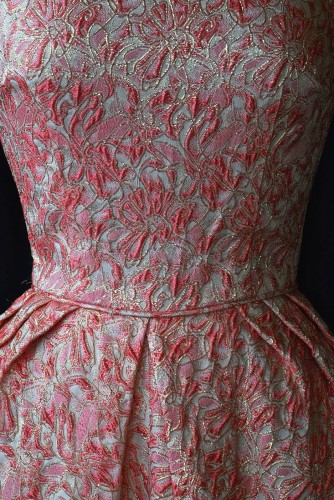
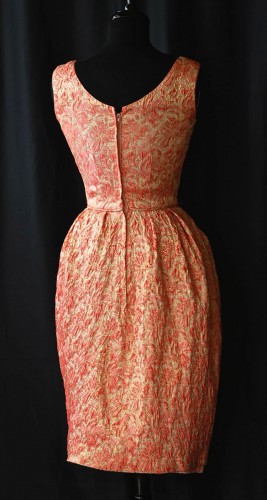
Copyright Valerie J. Hayes and Quiet West Vintage (2014). Unauthorised use and/or duplication of this material without express and written permission from this blog’s author/owner is strictly prohibited. Excerpts and links may be used, provided that full and clear credit is given to Valerie J. Hayes and Quiet West Vintage with appropriate and specific direction to the original content.
August 24, 2014
| Valerie Hayes
| Fashion Research, Feature Articles, View All Articles & Photos
If we look at an overview of fashion history over the past two hundred years – it is quite revealing. The pendulum did swing. It seems that the two world wars had the greatest influence on women’s fashion, which led to the fashion revolutions of the twenties and again in the sixties. When the men went to war, women had to take care of the farms, children, businesses – and in many cases, do the work of a man. It changed things. There was a period of liberation and newfound confidence that developed. Women did not have to be put on display in corsets and hoops. In danced the flapper era, bobbed hair and the Charleston.
The Charleston is a dance that became popular in 1923, when it was featured in the Broadway show called “Runnin’ Wild”. It became a dance craze associated with flappers, prohibition and the term speakeasy. The term speakeasy caught on when a newspaper described saloons and taverns as speak-easies. During prohibition there were many places that sold alcohol. They were raided frequently, but were so profitable – it made no difference. In fact there was a marked increase in organized crime associated with prohibition. In addition to the term speakeasy, the taverns were also referred to as Big ol Ben, Big Toad, Blind Pig or Blind Tiger. The viewing of the animal was argued to be the main attraction. The owner of the establishment would place an animal on display. The patrons would get served alcoholic beverages after they paid to see the animal. They drank and danced the Charleston – frequently with women dancing while the men watched. It is most interesting to know that a song that was written and composed for a Broadway Musical ended up having such far-reaching societal impact with a strong political message. People just refused to have no fun. And although that is a double negative – it turned out okay.
The Second World War was rife with so much propaganda and grief – it took years for the next wave of rebellion to percolate. When it did – the skirts got shorter and some went on acid Kool-Aid trips. There was a generation gap like never before. LSD was a popular drug during the sixties. A Swiss chemist discovered it in 1949. Once they became aware of the psychoactive properties, it went to big Pharma and was marketed by the drug company Sandoz. The drug was widely used recreationally as well as in medical research. The stories of the use of LSD in psychiatry, oftentimes on unsuspecting patients, so their reaction could be studied – was appalling. It was not until there was public outcry over bad trips, suicides and flashbacks associated with the drug, that they stopped using it. Sandoz stopped production in 1963 – however, it was used in medical research up until 1980. The drug was made illegal as a recreational drug in the late sixties.
The sensational death of Diane Linkletter (TV personality Art Linkletter’s daughter) in 1969 became widely publicized, when she supposedly jumped to her death from a sixth story window when high on LSD. This event became the catalyst for beginning the war on drugs. But, in digging a little deeper into the death of Diane Linkletter, I learned that she was not alone in the apartment. The toxicology showed that she did not have any drugs in her system. Many years later, her boyfriend who was with her at the time, was involved in another suspicious death involving a female celebrity. At the very least, it could be said, that Diane Linkletter’s death is a mystery. And the war on drugs was a pointless hoax.
Marijuana does not have the colored past that is associated with alcohol and LSD as far as drama and tragedy is concerned. It was made illegal long before the more potent drugs like LSD. In 1923 it was somehow placed under the Opium Act, yet it is clearly not an opiate. If you ingested a half a pound of it, it would not show up in toxicology studies as an opiate. Nor would it give the same symptoms of overdose as opiates. As we all know, there is a long history associated with attempts to have marijuana legalized. And similar to prohibition – no matter how many raids crop up – it is still profitable. The thing that seems odd to me is that marijuana is not a narcotic, therefore, how can it be classified as one? It would seem that all drugs, regardless of what they are used for, should be classified with some accuracy, and not lumped together with drugs that have completely different properties. After all, drug properties are supposed to be science.
Fashion and creative freedom stem from a certain level of rebellion. I would term it as a peaceful rebellion, since fashion statements do not usually harm anyone (with the exception of six inch heels!) Fashion – like music, poetry, writing, painting, gardening, and interior design – is all about self-expression. Oppression, contradictions, control, and hypocrisy all force change. The greater the effort to control, the more people will find a way to define themselves. Every individual is unique. We hope not to be changed by the rippling effects of conflict and war. We hope not to be robbed of our identity in any way. To allow others to define us is a mistake and waste of potential. From a purely practical perspective, not all styles and trends suit all body types. We can look back into the political context of the different eras that gave rise to the hemlines. Those individual statements contributed to a movement.
The distinction to be made about Runnin’ Wild – is that it was not so much about being bad, as it was an expression of freedom. After all, if you look at either the flapper style or the Charleston, they are hardly sinister. Even the flapper’s response to prohibition was not all that bad. They actually made a point…when they kicked up their heels.
Copyright Valerie J. Hayes and Quiet West Vintage (2014). Unauthorised use and/or duplication of this material without express and written permission from this blog’s author/owner is strictly prohibited. Excerpts and links may be used, provided that full and clear credit is given to Valerie J. Hayes and Quiet West Vintage with appropriate and specific direction to the original content.
August 23, 2014
| Valerie Hayes
| Business & Web Development, Feature Articles, Thoughts & Ideas, View All Articles & Photos
The word tautology has a nice ambiguous ring to it. It originated with the ancient Greeks who soon saw it as the mere repetition of words to support an argument. The logic behind it, a concept which later cropped up in propositional mathematics – is that if you reword and say the same thing over and over, each statement will fill the contingent of logic, support the argument and make it true. There is a formula.
In the forties and fifties Rudolf Flesch contributed to the recognition of tautologies in the written word. He wrote titles like “The Art of Clear Thinking” with a chapter title “How Not To Be Bamboozled”. He also wrote “The Art of Plain Talk”. Gotta love this guy!
But isn’t repetition with a few variables thrown in, the only way to reinforce something? Tautologies are getting tighter. It is the contraction of the sheer volume that must now be sifted. The information age is causing them to shrink – like wool in a hot washer. If you take out all superfluous words and repetitions – it strips the wordy embellishments to reveal the core. Padded writing is sort of like a glitzy, tacky overdone outfit.
Now, we have SEO’s and key words. We have a skeleton of tautologies in every realm. We just have to remember – that repetition – doesn’t necessarily mean that something is true or authentic. Authenticity has a solid ring to it. It holds onto some class. Maybe stripping away all superfluous and repetitious words brings us closer to poetry…since poetry says as much as possible with as few words as can be gotten away with. Therefore the core concept often has an elemental truth.
It might be on the horizon to drum up SEO’s out of a poem or a song…and like birds in the forest – the white noise is lost, leaving only the voice.
Copyright Valerie J. Hayes and Quiet West Vintage (2014). Unauthorised use and/or duplication of this material without express and written permission from this blog’s author/owner is strictly prohibited. Excerpts and links may be used, provided that full and clear credit is given to Valerie J. Hayes and Quiet West Vintage with appropriate and specific direction to the original content.
August 23, 2014
| Valerie Hayes
| Business & Web Development, Fashion Research, My Story, Textile Art, View All Articles & Photos
The other night I was talking to a woman about how certain aptitudes seem to come down through the generations, like it is in your blood. She was telling me about her own history in Prince Edward Island coming from a background of artists and how she learned about, and developed an appreciation for beautiful things.
My earliest recollection of my Swedish grandmother, is of watching her spend hours upon hours, spinning and carding wool. I knew she found solace in the rhythmic constancy of the spinning. She also made beautiful quilts. She fashioned bits of satin into flowers of all different colours, to create a big bouquet in the center. Then she would embroider stems and apply the leaves. Sometimes she made the flowers out of a combination of fabrics – brocades, velvet or printed cottons. The quilt, with its layers of wool in the center, was her canvas.
The spinning looked simple enough. As an adult, I have not had a chance to study many spinning wheels. When I did, I realized it is not that simple. I chatted with a woman who does spin, and is quite passionate about it. She said she had learned how to spin from watching You Tube videos, which makes a great deal of sense, since you can pause it and go over sections, you don’t yet grasp. She also explained, how at first it is a real struggle, like you want to tear your hair out. But then – when you get it, you can’t understand why you found it so difficult. I told her about my grandmother and how it almost seemed like spinning was an escape for her, and a way to relax – while shutting the world out.
From what I have read, spinning is an art form. Like other art forms, there is a variety of ways to approach it. In essence it is the art of twisting fiber, fleece, wool, silk, alpaca, angora, mohair, flax, etc. into a continuous thread. It can be spun thick or thin, plyed or unplyed, dyed, or left natural.
The You Tube website is called “The Joy of Spinning”. It turns out spinning does have an effect on the limbic system, and pathways in the brain, to create a sort of Zen-like state. You get into a flow, yet at the same time, you have to maintain concentration.
Although I don’t know how to spin yarn in the real sense, I am most convinced there is joy and relaxation to be found in doing so.
Because my Grandma proved something to me long ago…Our brains like to spin!
Copyright Valerie J. Hayes and Quiet West Vintage (2014). Unauthorised use and/or duplication of this material without express and written permission from this blog’s author/owner is strictly prohibited. Excerpts and links may be used, provided that full and clear credit is given to Valerie J. Hayes and Quiet West Vintage with appropriate and specific direction to the original content.
August 23, 2014
| Valerie Hayes
| Business & Web Development, Feature Articles, Inside Passage Legendary Map, My Story, Poetry By Valerie Hayes, Thoughts & Ideas, View All Articles & Photos, Vintage Hats
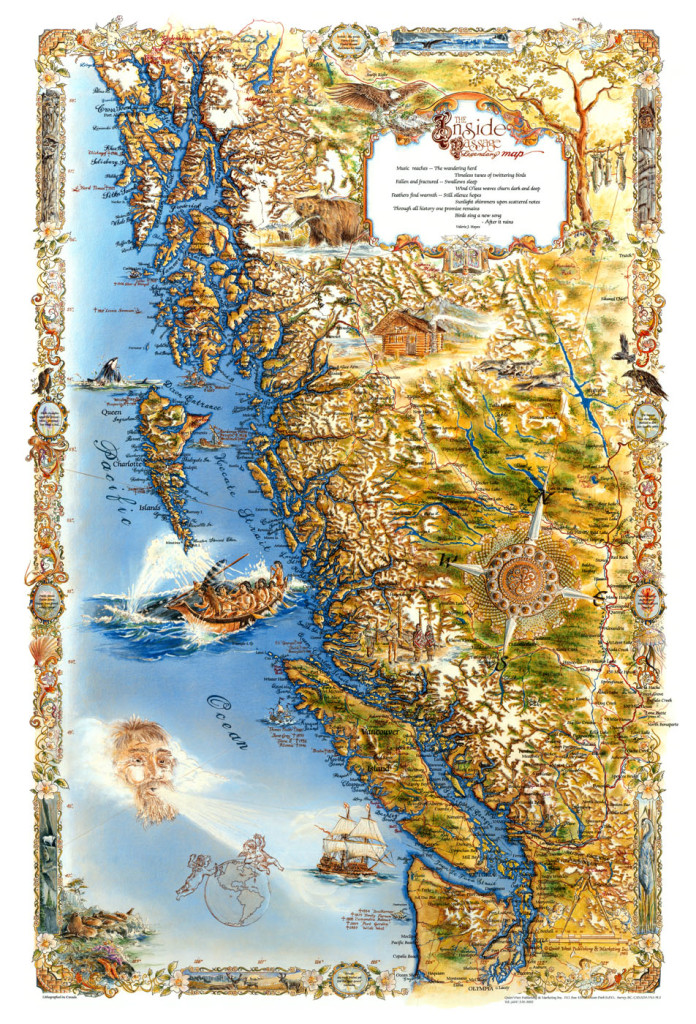
Inside Passage Legendary Map By Quiet West Publishing
Ladies Wear Many Hats
Ladies wear many hats ~
We put the lady on the map,
To illuminate despair –
To journey where we dare;
To follow rivers to wilderness,
To fly and then return to nest.
To soften contours of the stone –
And pave the road with poems.
Valerie J. Hayes
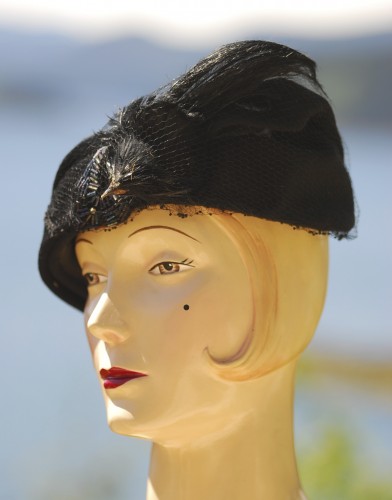
Early 1900’s with Real Bird. This Practice was Banned in 1909
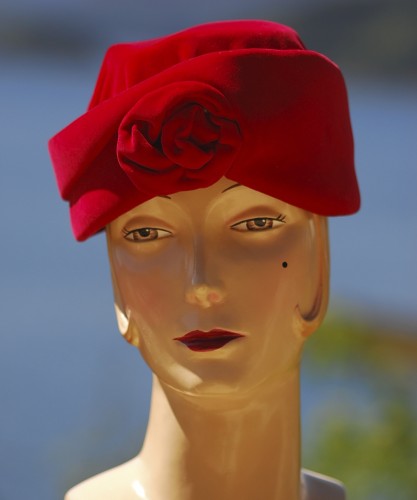
1960’s Velvet Rose Hat
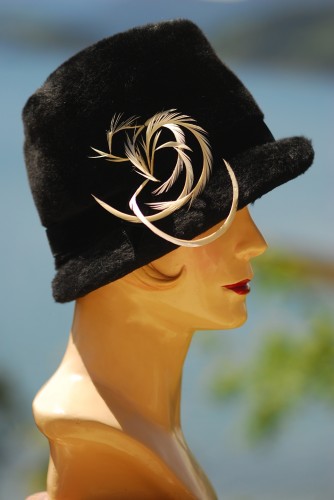
1940’s White on Black
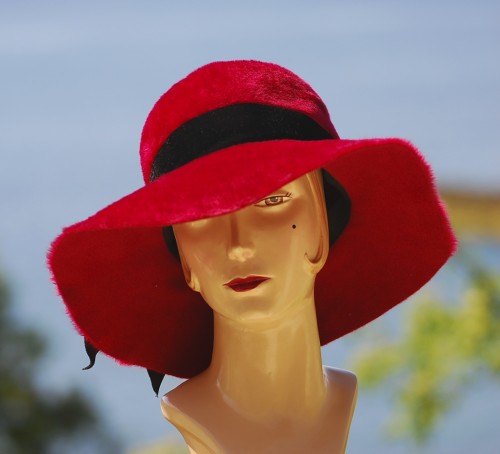
1950’s Scarlet Glamour
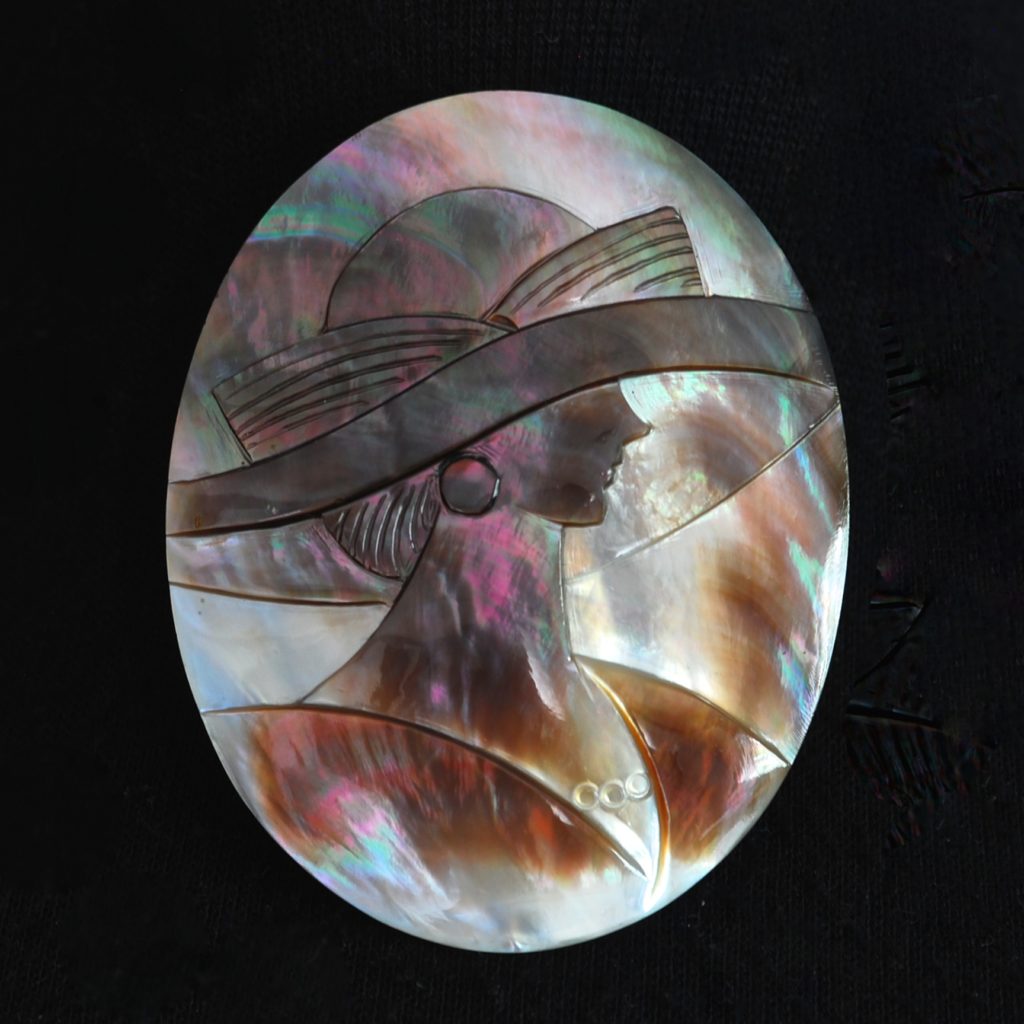
Carved Mother Of Pearl In Natural Sun Lit Colours
Copyright Valerie J. Hayes and Quiet West Vintage (2014). Unauthorised use and/or duplication of this material without express and written permission from this blog’s author/owner is strictly prohibited. Excerpts and links may be used, provided that full and clear credit is given to Valerie J. Hayes and Quiet West Vintage with appropriate and specific direction to the original content.
January 23, 2014
| Valerie Hayes
| Business & Web Development, Designer History, Fashion Research, Feature Articles, View All Articles & Photos, Vintage Hats
When I first started collecting vintage hats, it was enthralling to see all the different designs and colors. Hats from the thirties, forties and fifties were still fairly abundant in the late seventies and early eighties. It was considered “off the wall” to collect them. The general belief was that they would never be worn again. In fact, the key designers have retired or passed away, and many of the styles have never been made again. One thing remains true. Many people wear hats well. There are some gorgeous hats that have survived the test of time and chance.
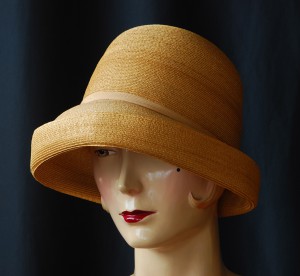
1960’s Straw Cloche by Designer Schiaparelli
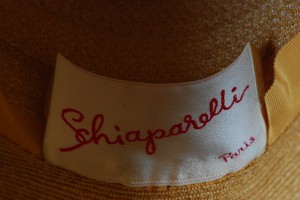
Schiaparelli Paris Label
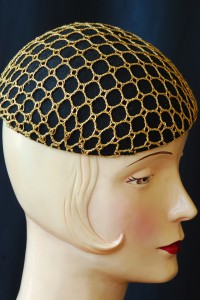
1950’s Gold Beaded Beanie
How could they not fascinate us? A hat changes a person’s aura and creates a heady fashion statement that rivals no other part of the attire. During the 19th and 20th century, every design that could be conceived of was shaped into a hat. One of my favourite photographs is of a 1930’s hat that was listed in the Doyle Gallery in New York several years ago. It looked like a bees nest with bees buzzing all around it. There is a comic and whimsical element to a percentage of designs. Just as the hemlines went up after the war, the hats too, became either more utilitarian or more glamorous. The early 1900’s hats were still mostly wide-brimmed and decorated with flowers, berries, ribbons and even birds. The practice of taxidermy to place birds on hats was banned around 1909. Later on, in the forties – there was a bird revival. They used real feathers and made the body of the bird out of something else.
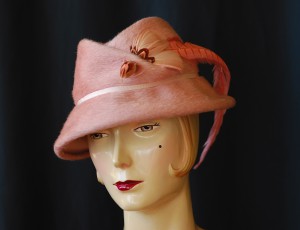
1940’s Bird Revival
During the eighties, when I collected hats that were mostly dated from the 20’s through to the 60’s – it was because those were the hats that were available and fairly abundant. I did not pay much attention to labels, but studied each hat and bought what I liked. Inadvertently, I did end up with some well known designer labels. Elsa Schiaparelli, Lilly Dache, Macy’s, Stetson Fifth Avenue, Christian Dior, Mollie Entwistle, and Jerry Yates – are some of the designers who made vintage hats to marvel at. There are many other more obscure designers who made hats to the same level of quality as the luxury designers. All were affected by the Second World War, which caused some to flourish and others to fail.
When looking for vintage hats now, I look first for a label. If it is made in China, it is not vintage, even though it may be a vintage style. A label for a quality vintage hat will be fairly large (usually) and will be made of fabric that is stitched into place inside on the back of the hat. Some of the labels have a small flower attached on the side of the label. If there is no label and you believe it is vintage, check the brim, inside the crown, to see if there is heavy grosgrain ribbon. Also, if the hat has any embellishments, evaluate what they are made of, since certain types of fabrics, ribbons, flowers, etc. were used that are not modern day. Sometimes the maker and country of origin is printed inside on the crown of the hat.
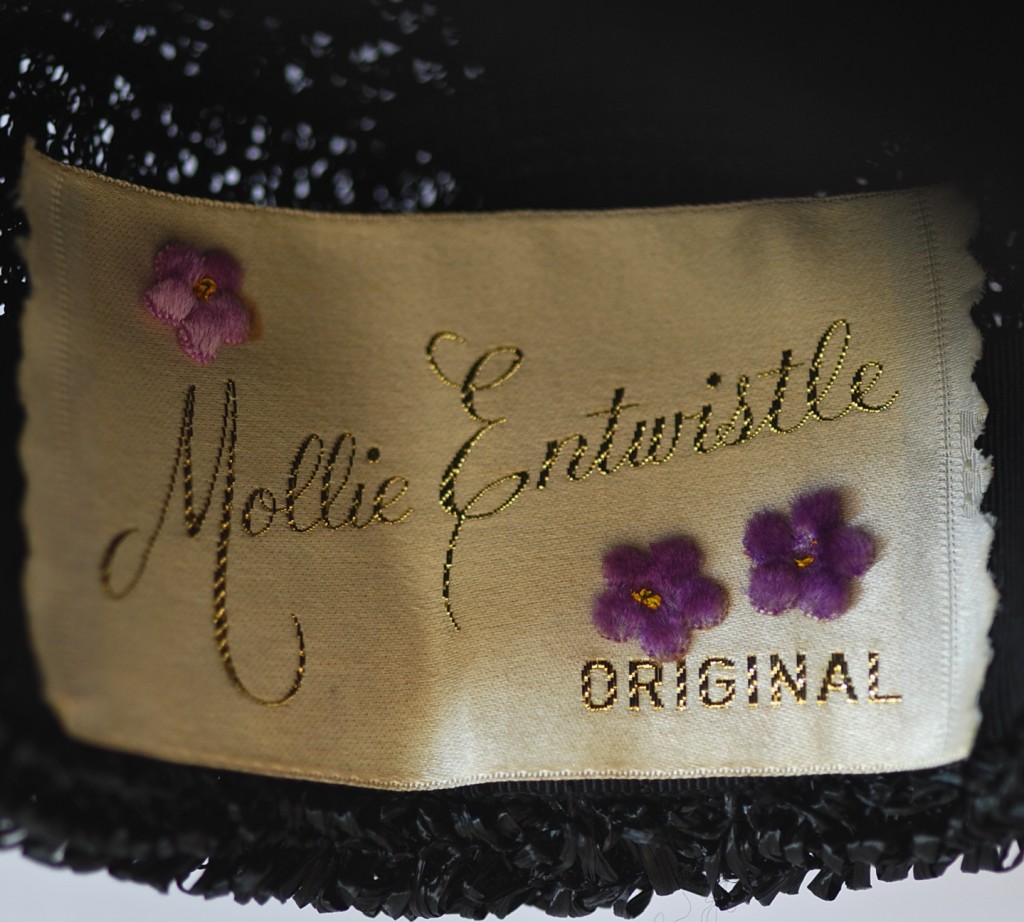
Mollie Entwistle Vintage Hat Label
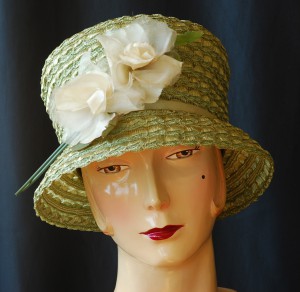
1920’s Stetson Fifth Avenue
Before I acquired some Stetson Fifth Avenue hats, for some reason I thought Stetson was associated only with cowboy hats. But, Stetson Fifth Avenue made some interesting and upscale hats of different styles. A large percentage of fall and winter vintage hats are made of doeskin felt. Some are made of sealskin, which is often dyed.
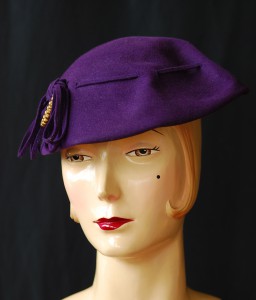
1940’s Stetson Fifth Avenue
In the seventies, hats from the turn of the century were not available to the average person, unless you were a dealer, collector or museum. Hats from the thirties and forties seldom turn up in thrift stores anymore. The hats with face veils often get torn due to the fragility of the veils. Rubber bathing caps – unfortunately, there are only a few that have lasted – since rubber sticks together and disintegrates over time.
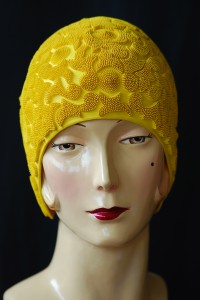
1950’s Rubber Swim Cap
Most hats can be brushed with a soft bristle natural brush in the direction of the grain and steamed into shape. Unless they are for display, it is best to keep them in a box with some acid free tissue paper. Face veils, rubber bathing caps and feathers require extra attention. Be very careful when steaming hats with feathers and avoid it altogether if the feathers have been glued onto the hat.
Copyright Valerie J. Hayes and Quiet West Vintage (2014). Unauthorised use and/or duplication of this material without express and written permission from this blog’s author/owner is strictly prohibited. Excerpts and links may be used, provided that full and clear credit is given to Valerie J. Hayes and Quiet West Vintage with appropriate and specific direction to the original content.
January 22, 2014
| Valerie Hayes
| Designer History, Fashion Research, Textile Art, View All Articles & Photos, Vintage Outfits
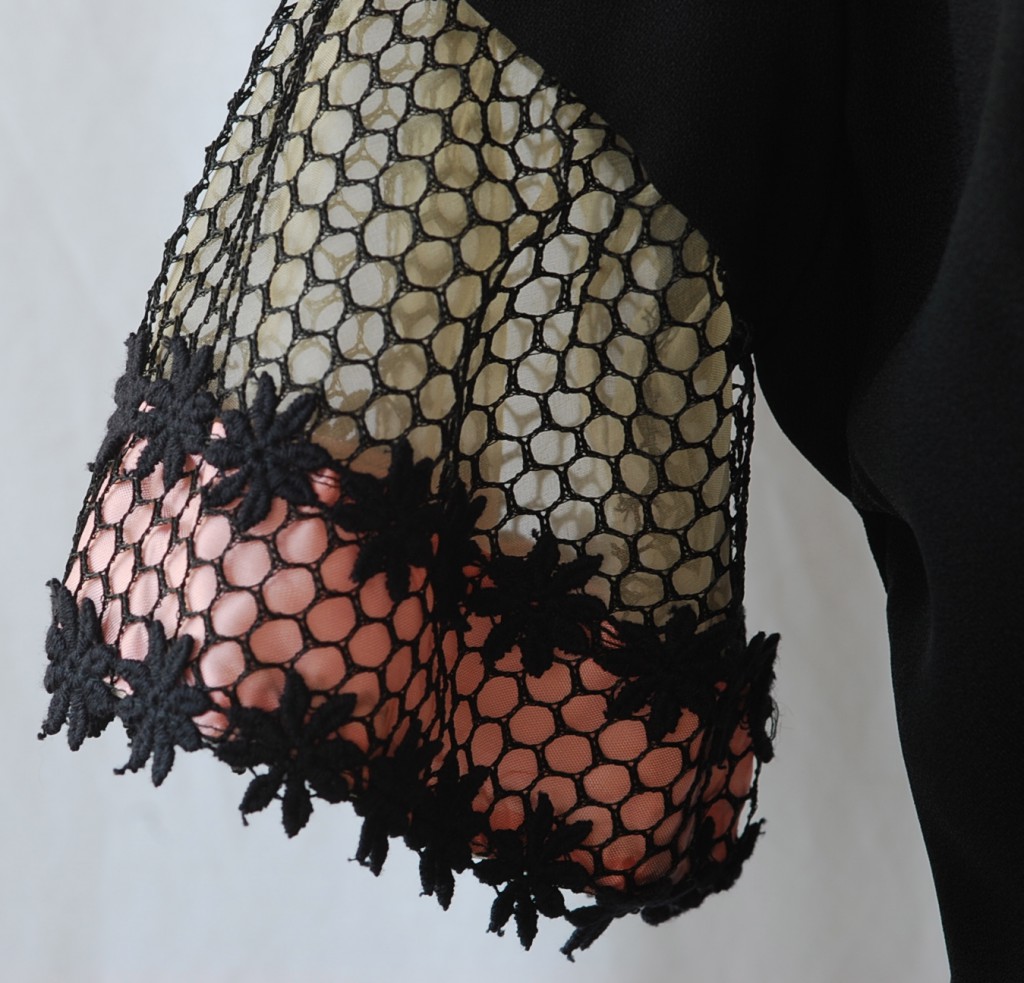
Vintage Dress With Honeycomb Sleeve Detail
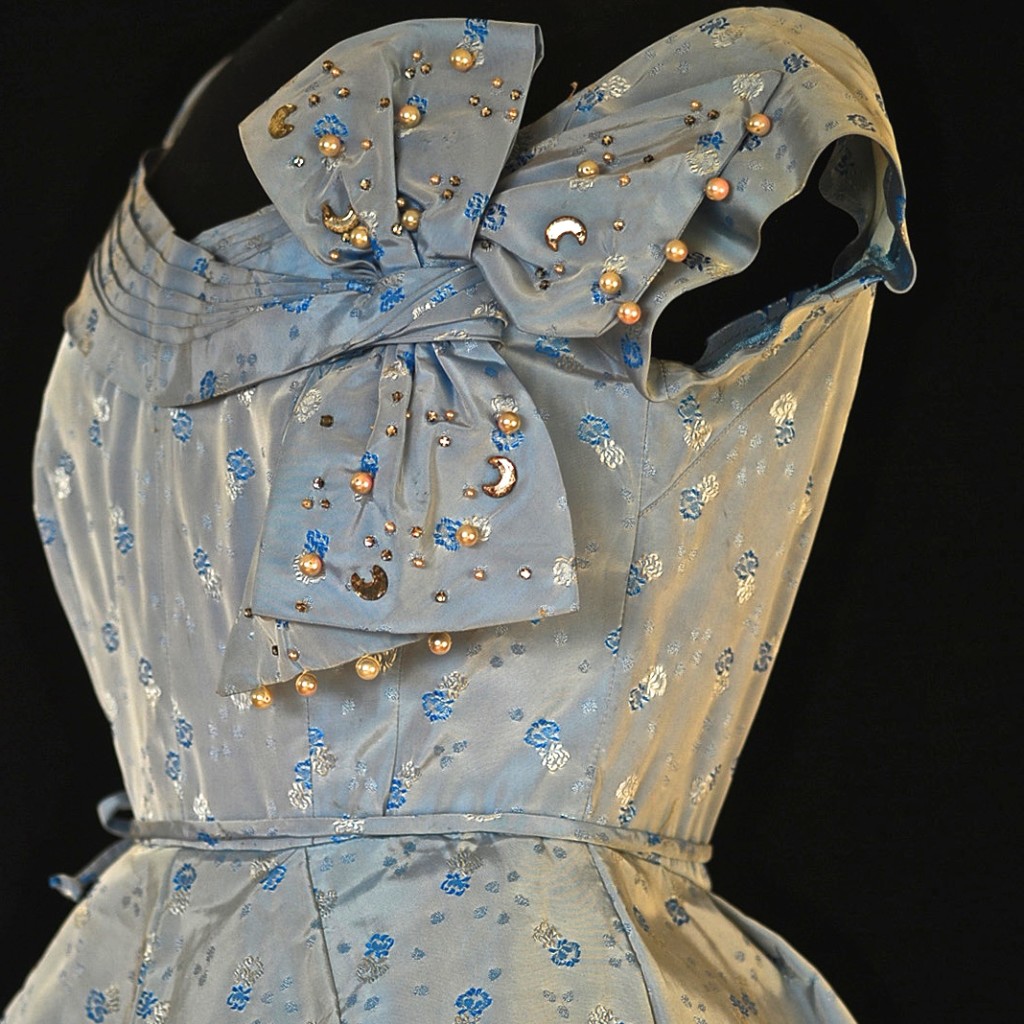
1950’s Ray Hildebrand
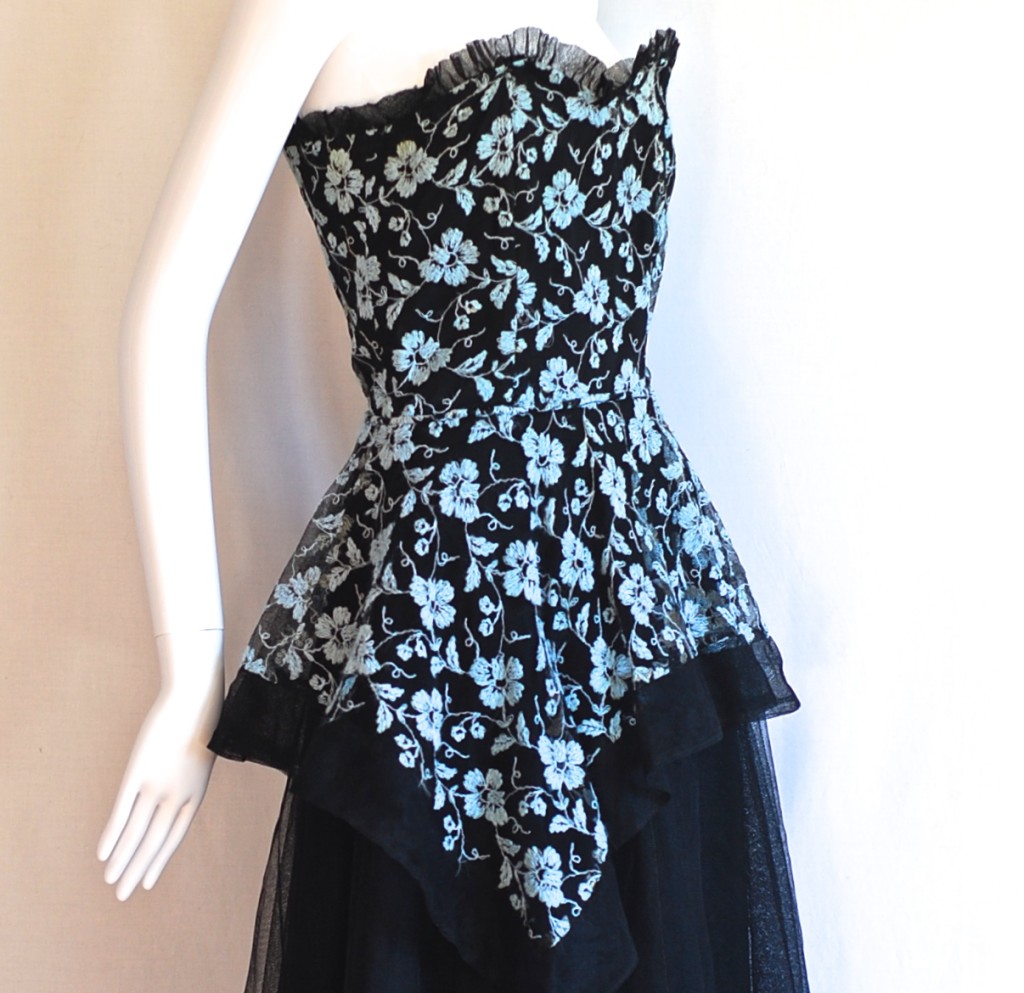
1950’s Hand Embroidered Strapless Gown
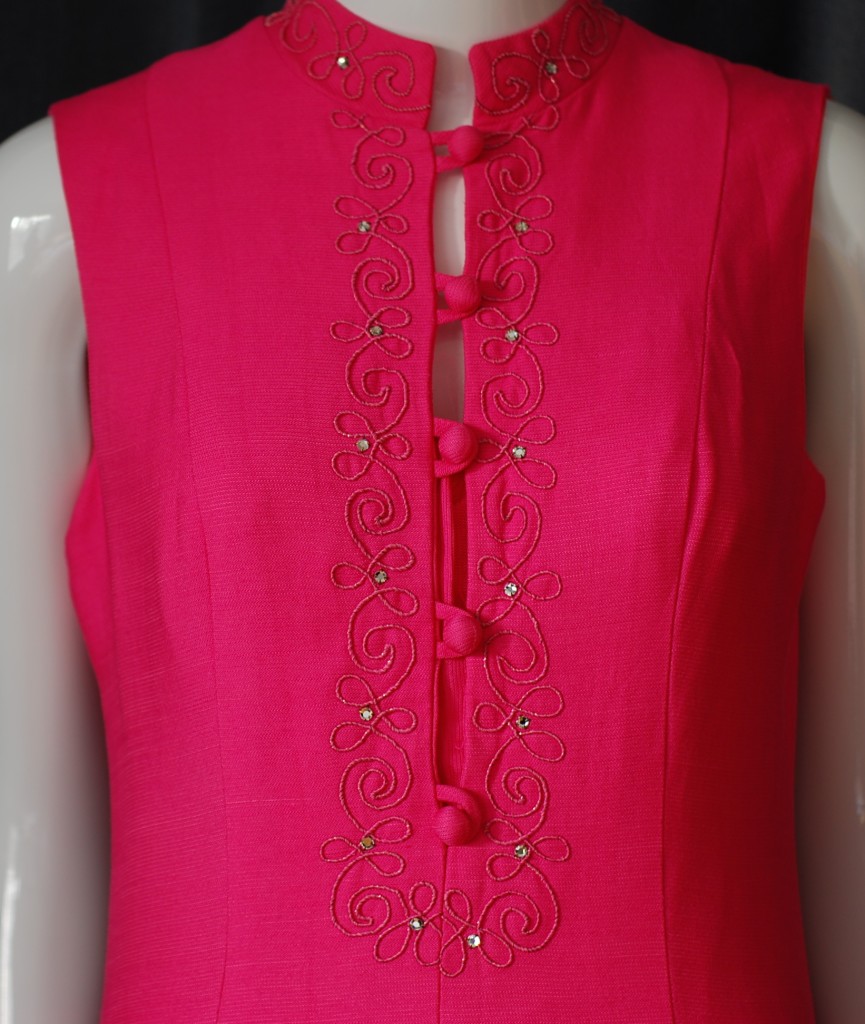
1960’s With Applique, Covered Buttons & Rhinestones
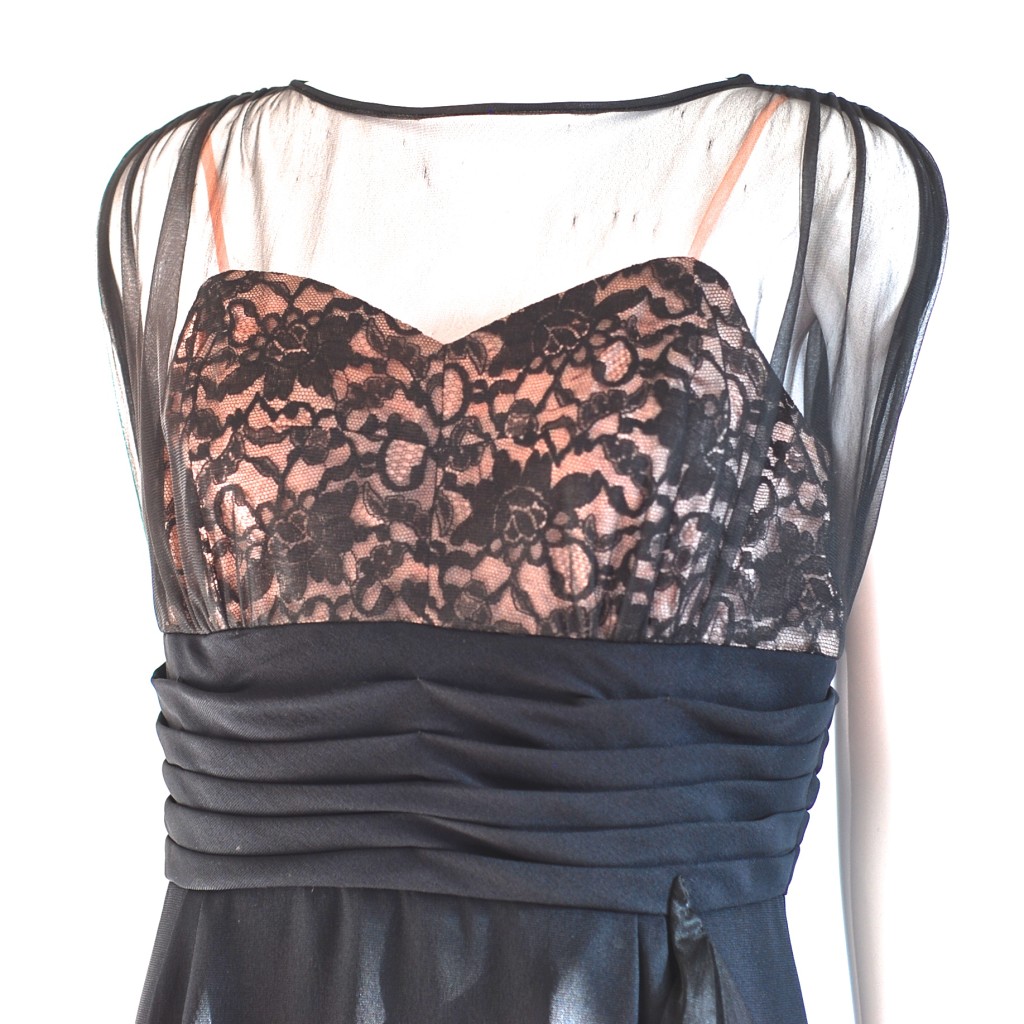
1960’s Dress Featuring Black Lace on a Pink Background
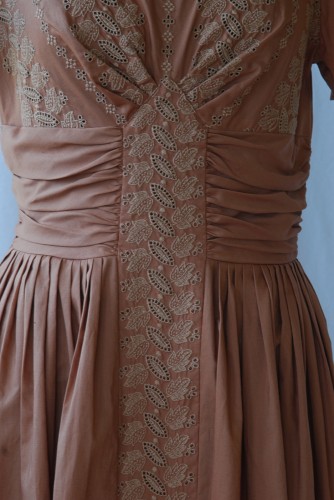
Leo Danal 1950’s Hand Embroidered Cotton Dress
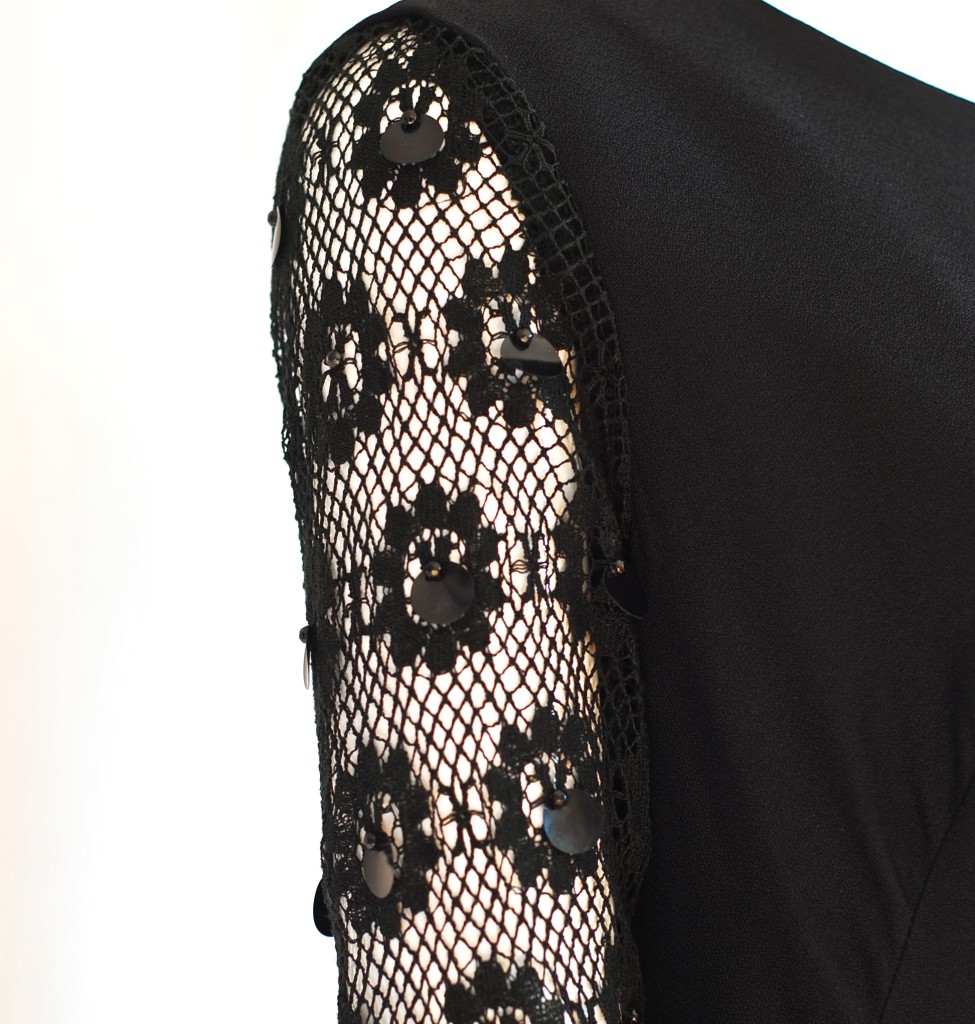
1960’s JS Missy Creation
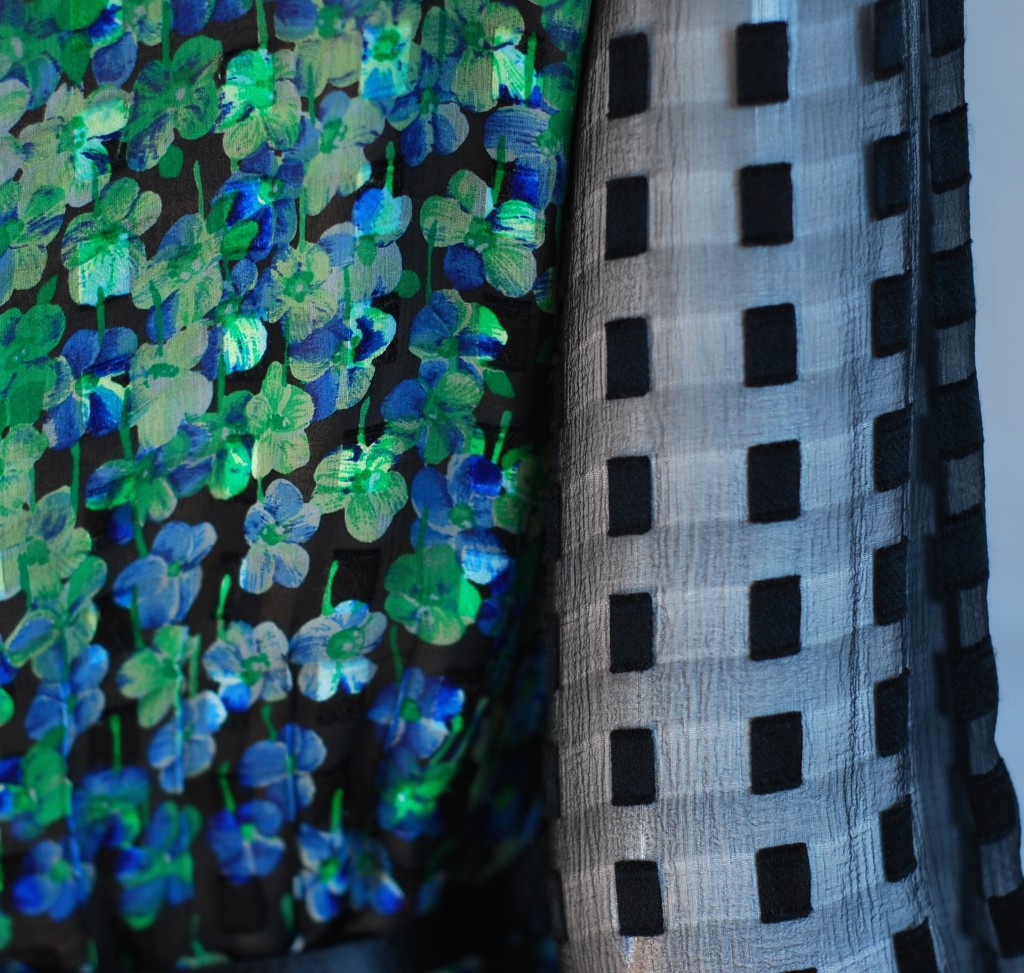
1970’s Richilene Silk Gown
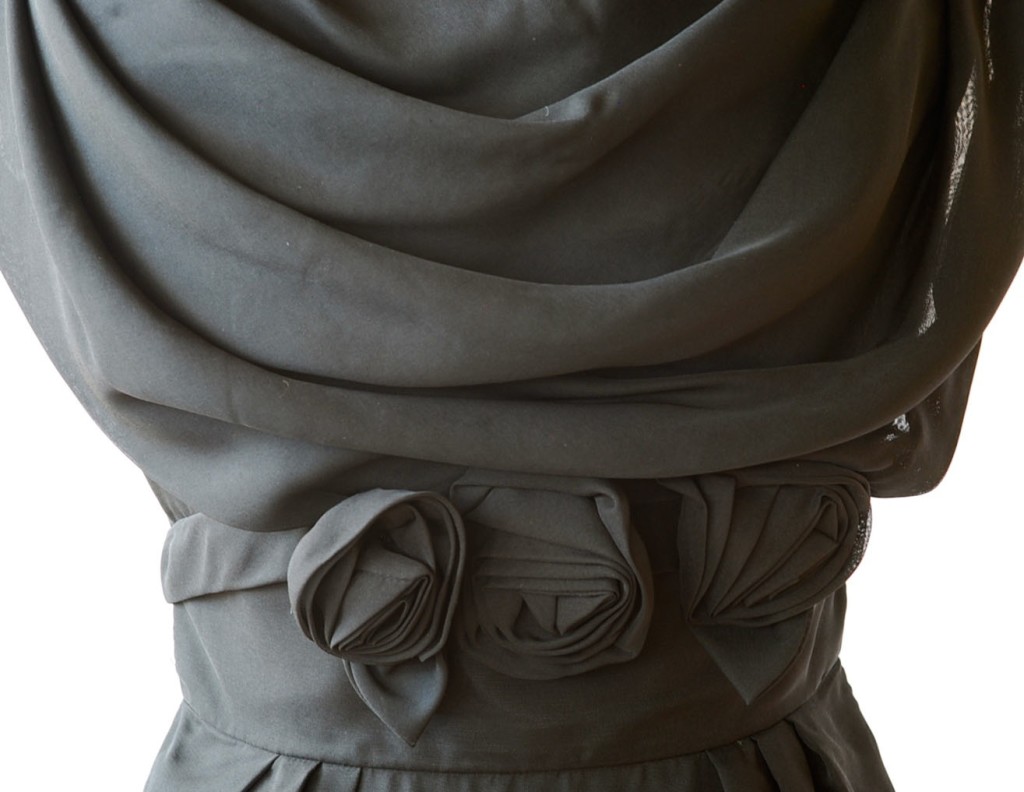
1950’s Black Cocktail Dress With Flowered Waist Band















































































 Copyright Valerie J. Hayes and Quiet West Vintage (2014). Unauthorised use and/or duplication of this material without express and written permission from this blog’s author/owner is strictly prohibited. Excerpts and links may be used, provided that full and clear credit is given to Valerie J. Hayes and Quiet West Vintage with appropriate and specific direction to the original content.
Copyright Valerie J. Hayes and Quiet West Vintage (2014). Unauthorised use and/or duplication of this material without express and written permission from this blog’s author/owner is strictly prohibited. Excerpts and links may be used, provided that full and clear credit is given to Valerie J. Hayes and Quiet West Vintage with appropriate and specific direction to the original content.





























